Building a Writing Studio

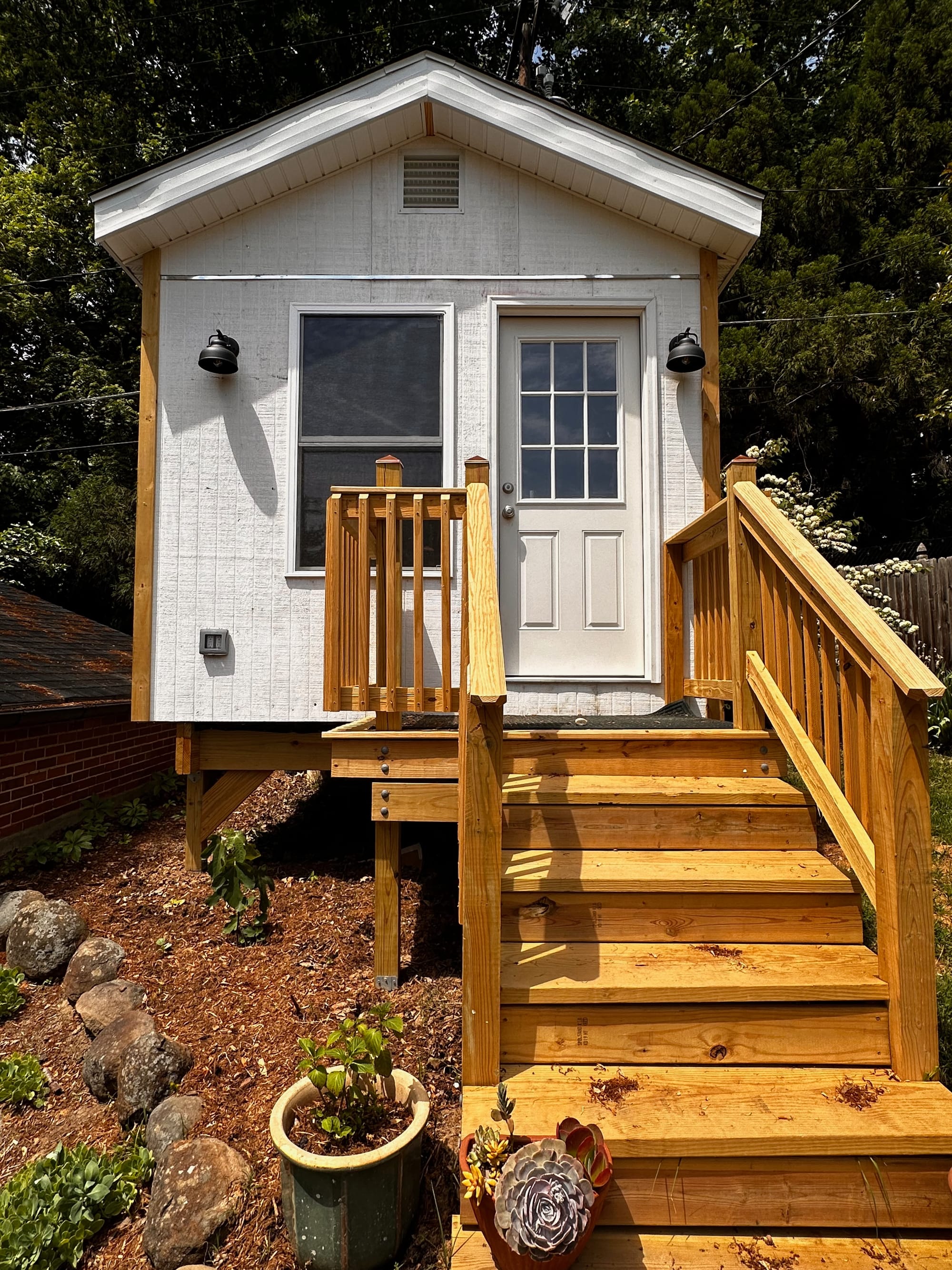
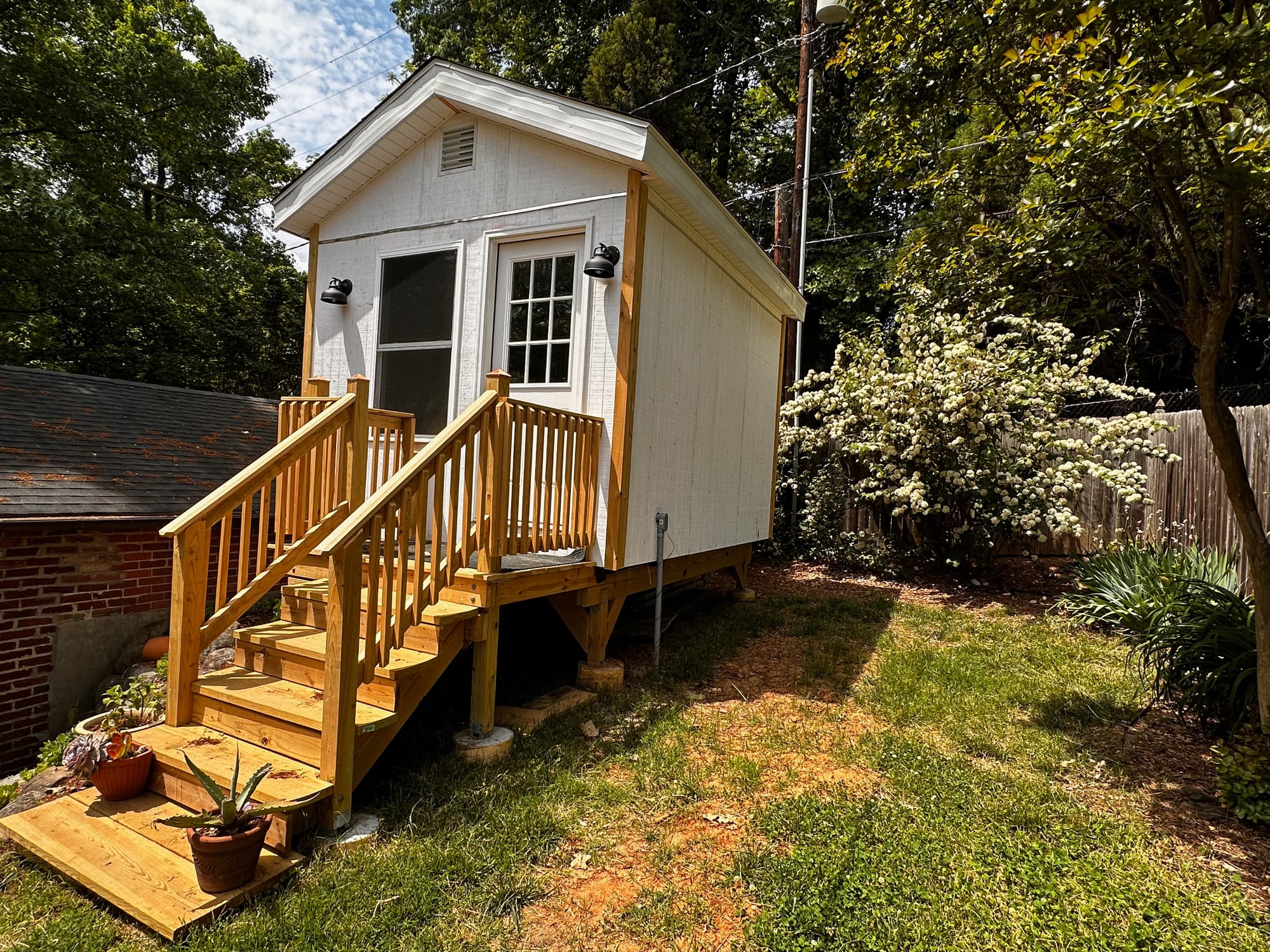
Close to finished look. Soon it will have the exterior painted (once I decide on a color!).
About two years ago, I moved out of my home office and handed it over to our oldest daughter so she could have her own room. Up to this point, the three kids shared rooms in all of the houses we’ve lived in. But in 2021, we moved into a new house with more space, so we let the kids spread out. The move was exciting for our oldest, but it meant I relinquished my “library.”
Since then, when working away from my office at Guilford, I’ve made do at the kitchen table, the dining room table, coffee shops, and more recently, a desk downstairs along the outside wall in the basement (as it turns out, it gets really cold sitting there!).
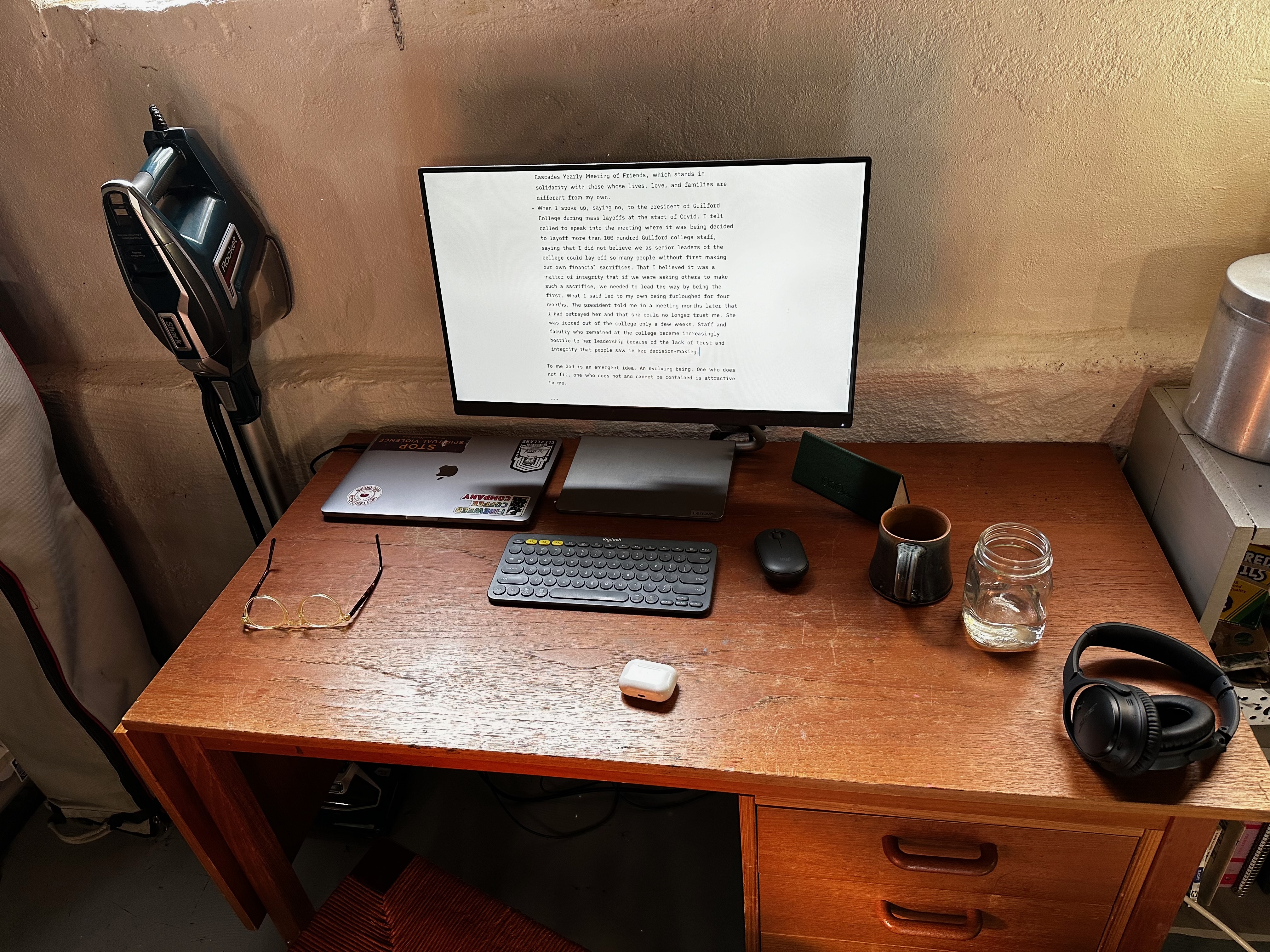
These have been okay solutions, but with starting my very first sabbatical on January 2, 2024, I wanted a better space that was my own. Knowing I’d spend most of my time at home writing and researching with no big travel plans, I began thinking back to all of my “workspaces,” offices, and setups and started to dream about building, in the words of Michael Pollan, a place of my own.
Images of Spaces Past
If you will indulge me, here is a little journey down memory lane. These are many of the study spaces I have made, sometimes make-shift, sometimes, more intentional, always with the goal of carving out a space of my own where focus and plenty of room to spread books and papers out were key in the design. Each image is accompanied by a short description of where that space was located. You will notice that a number of these earlier spaces have influenced the design and feel of the new one.
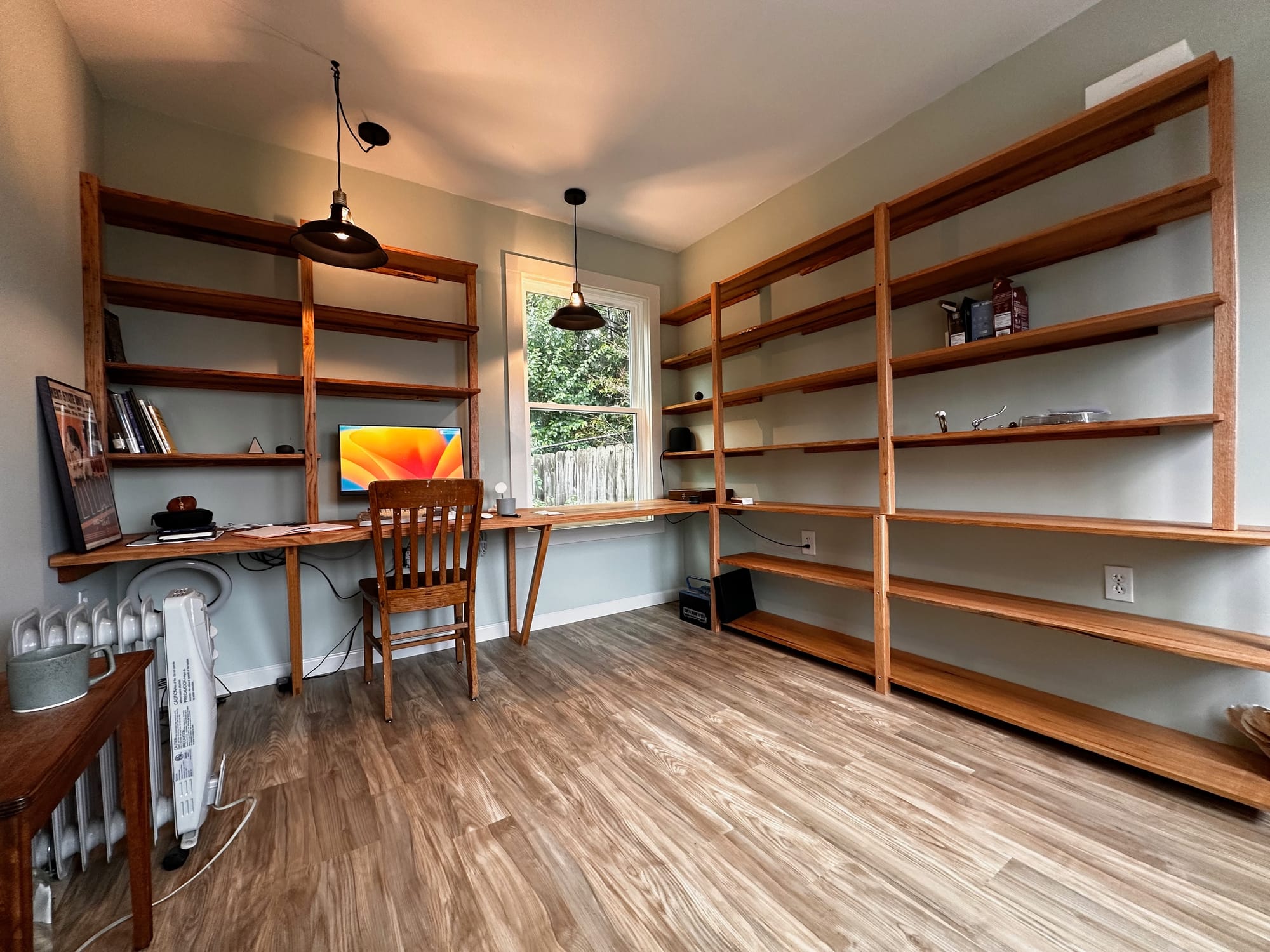
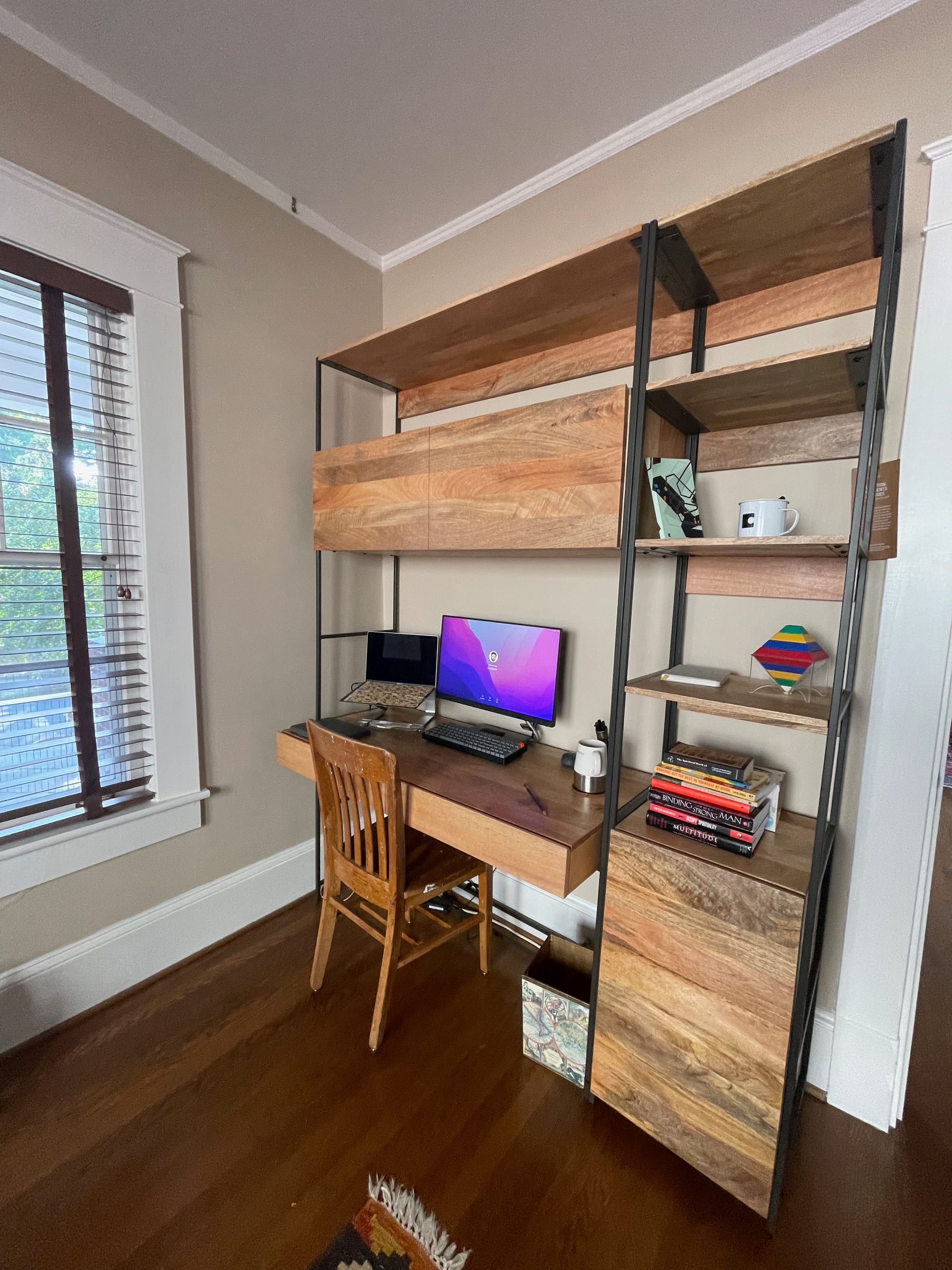
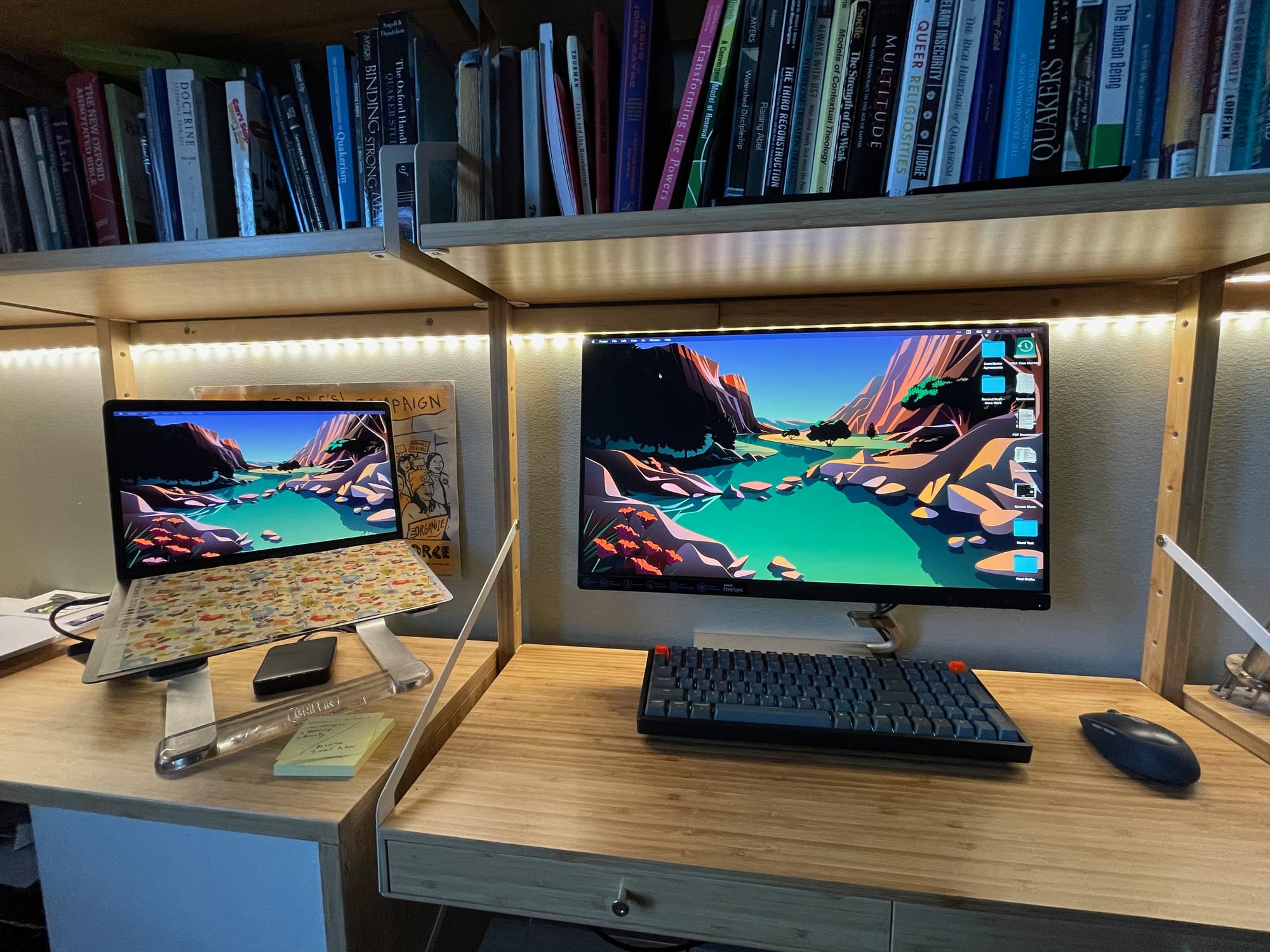
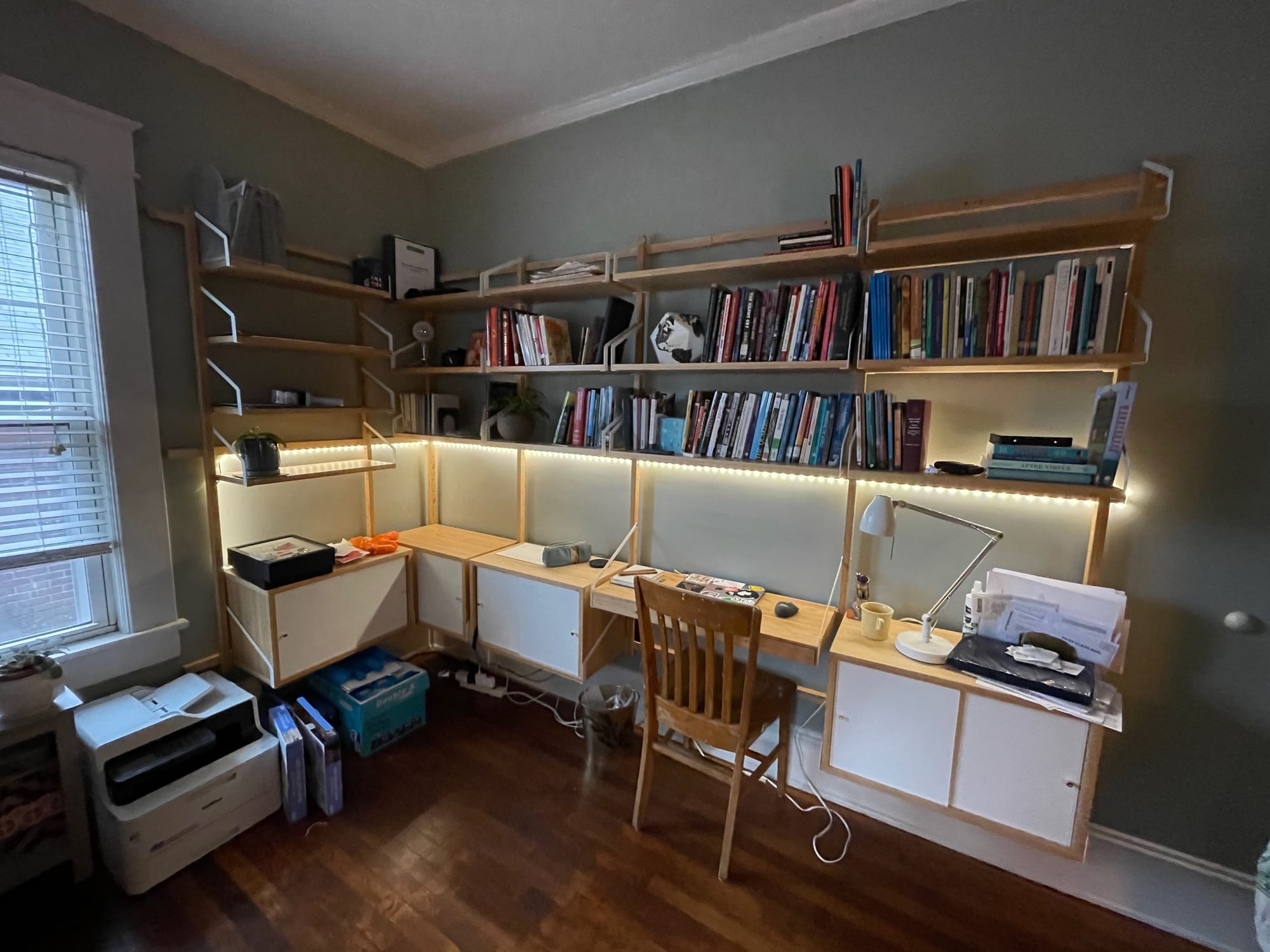
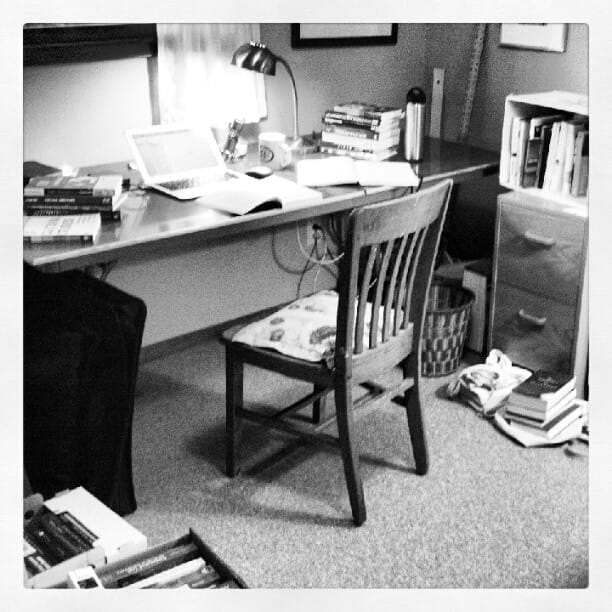
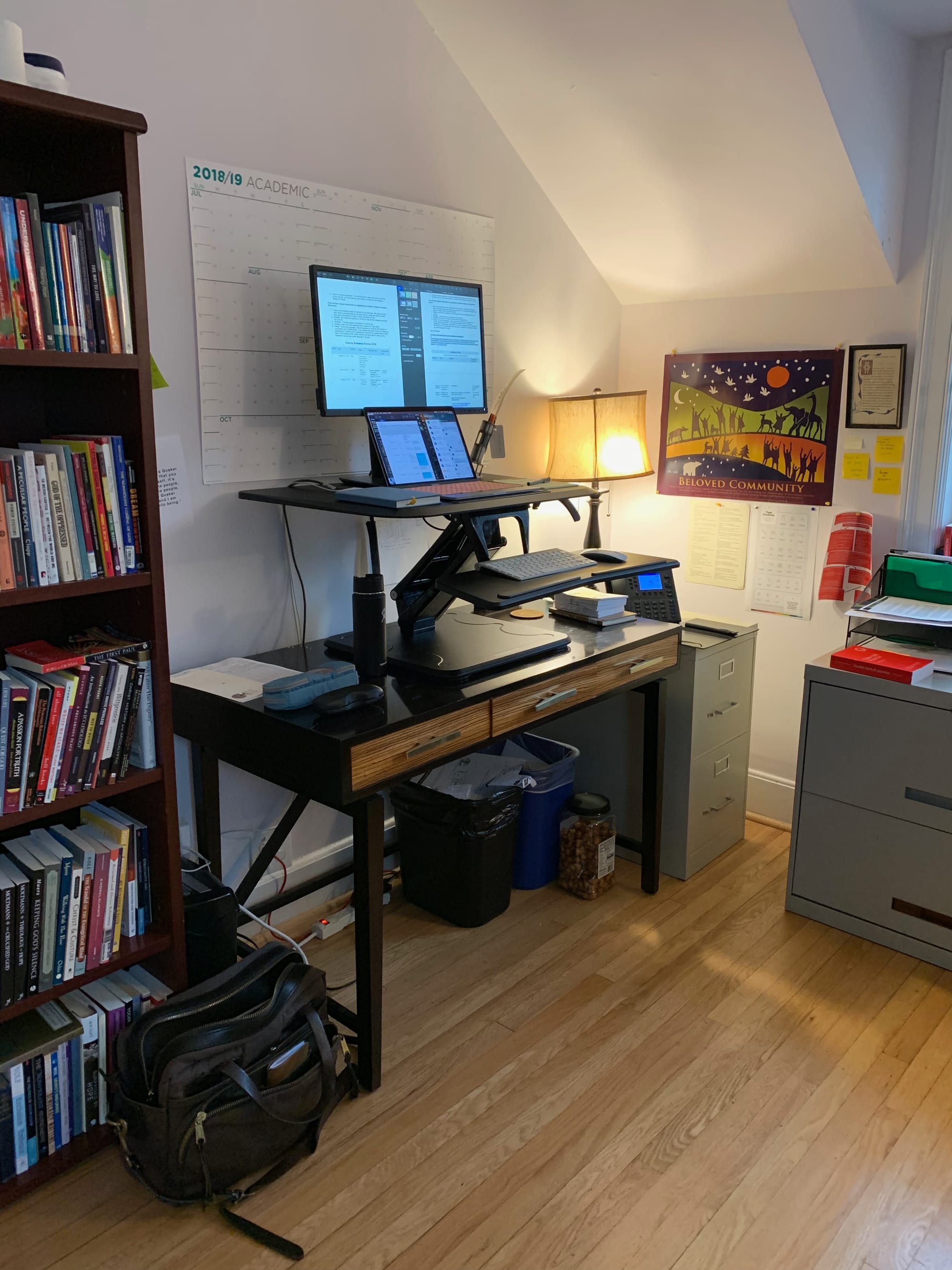
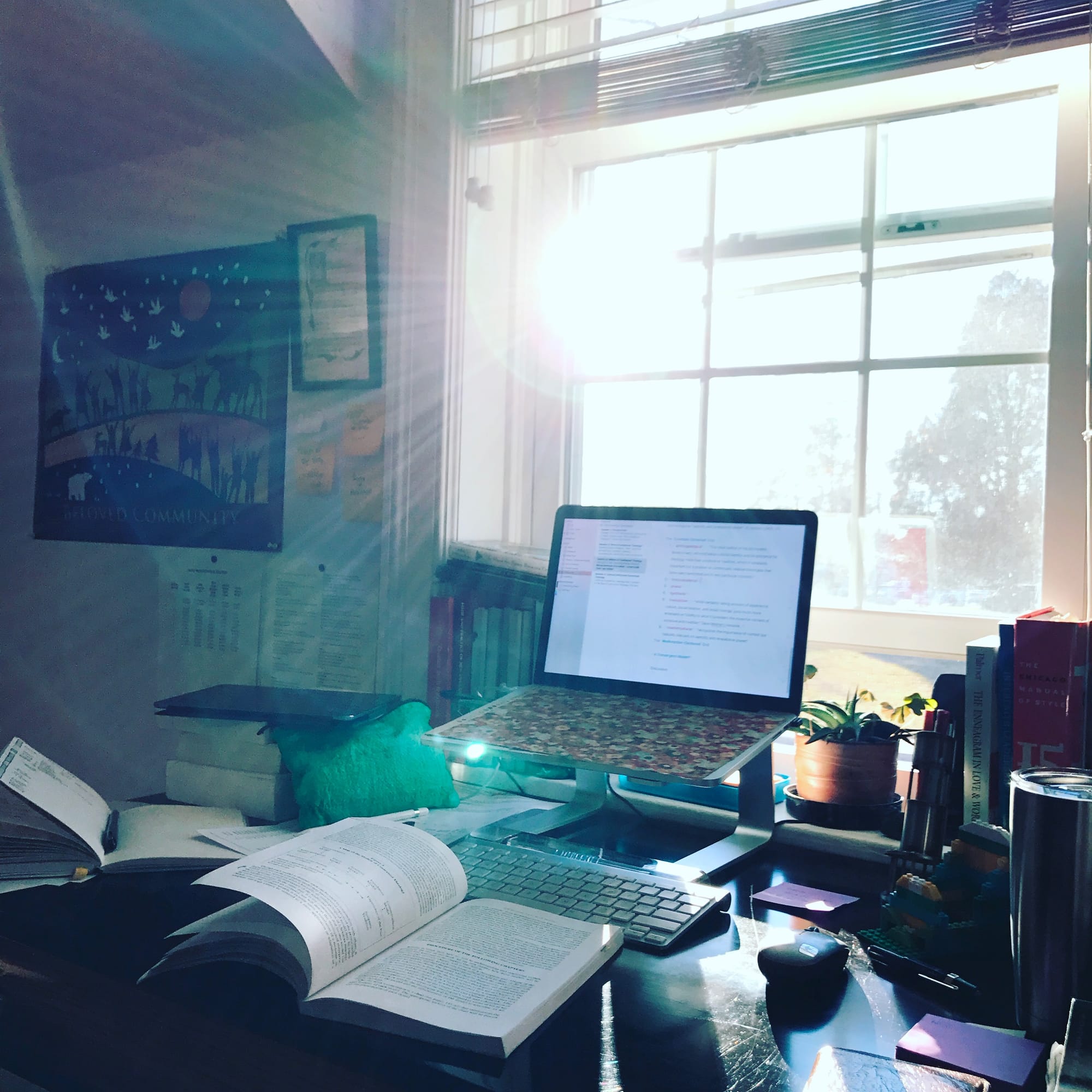
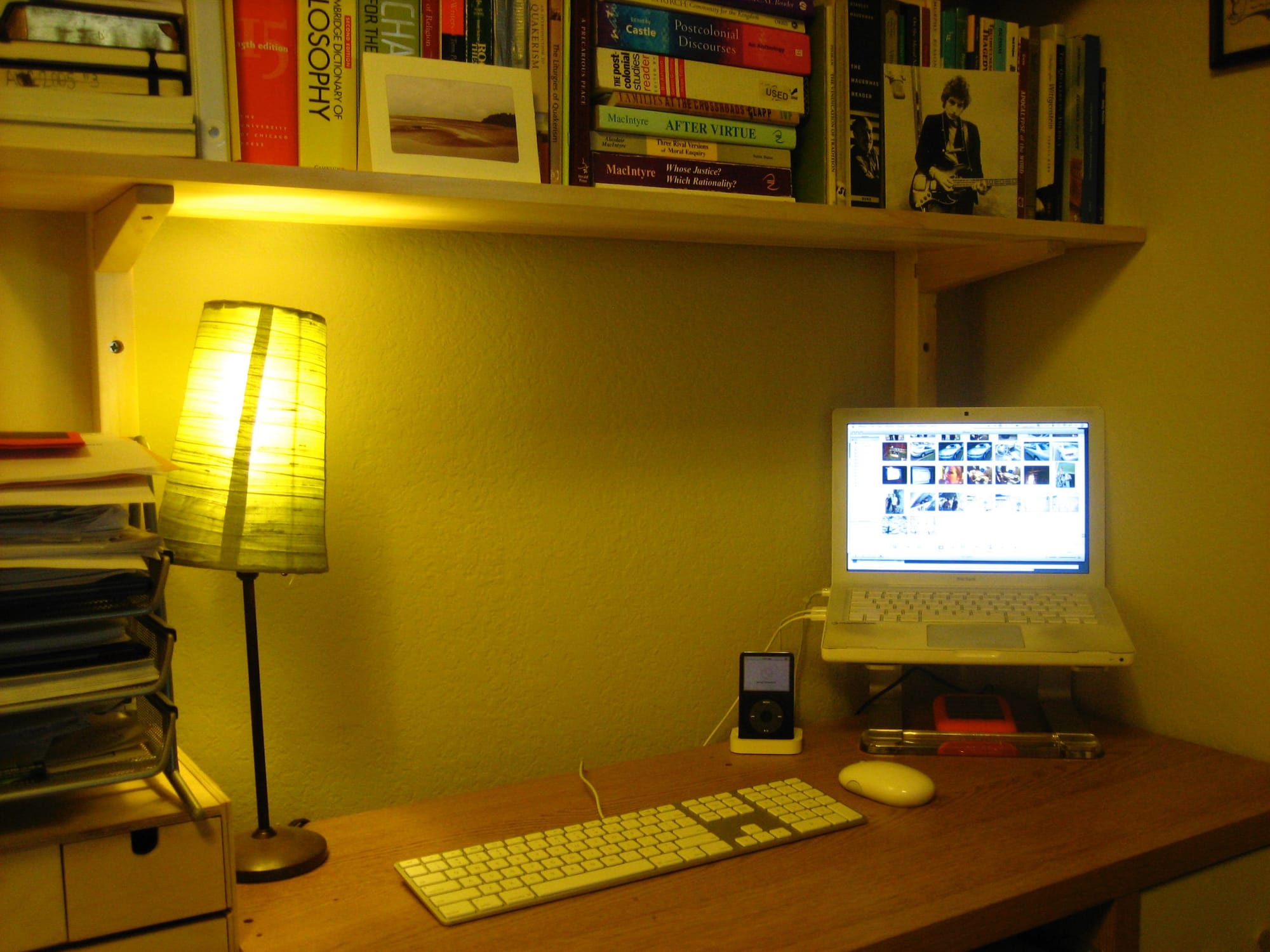
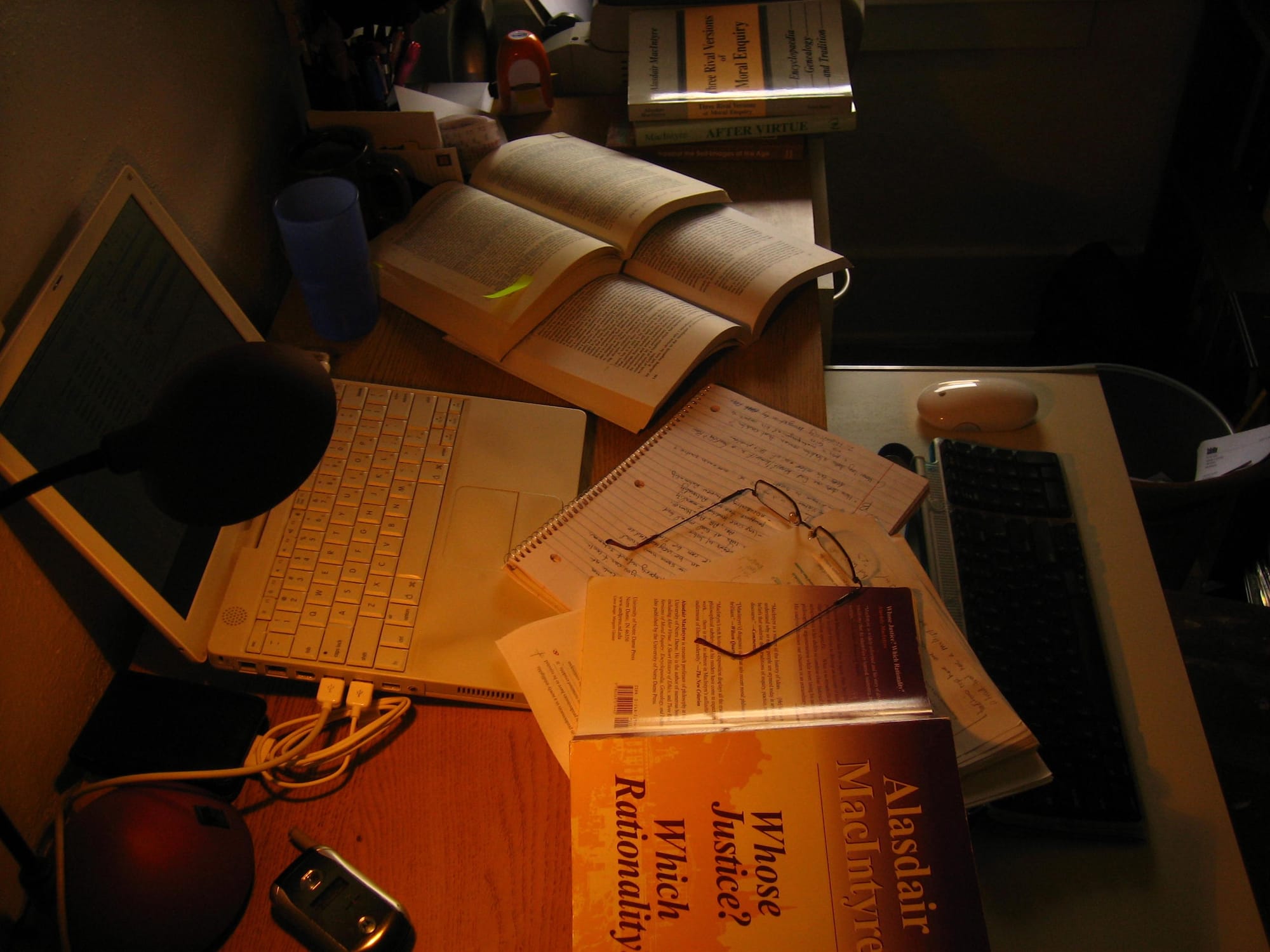
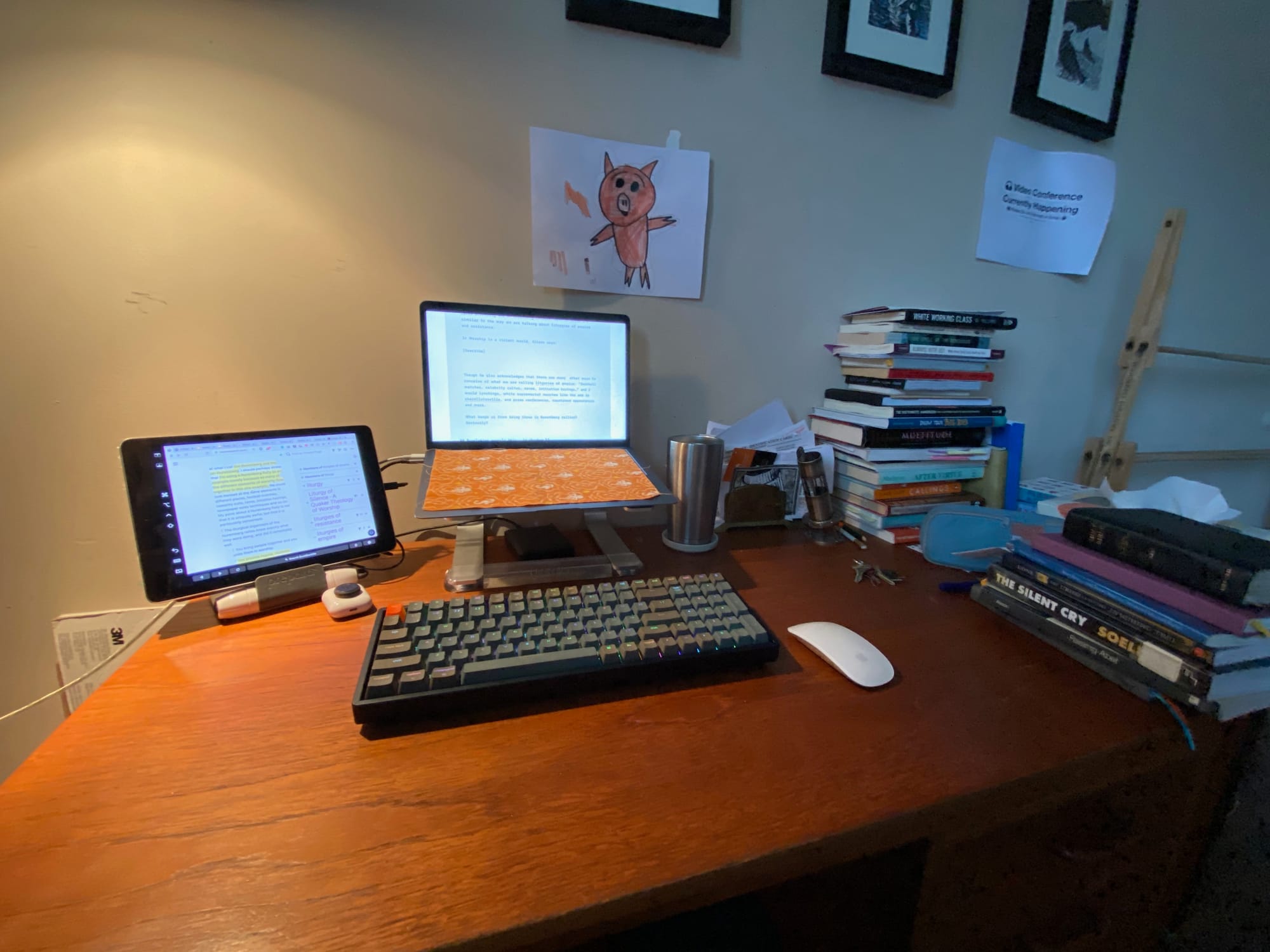
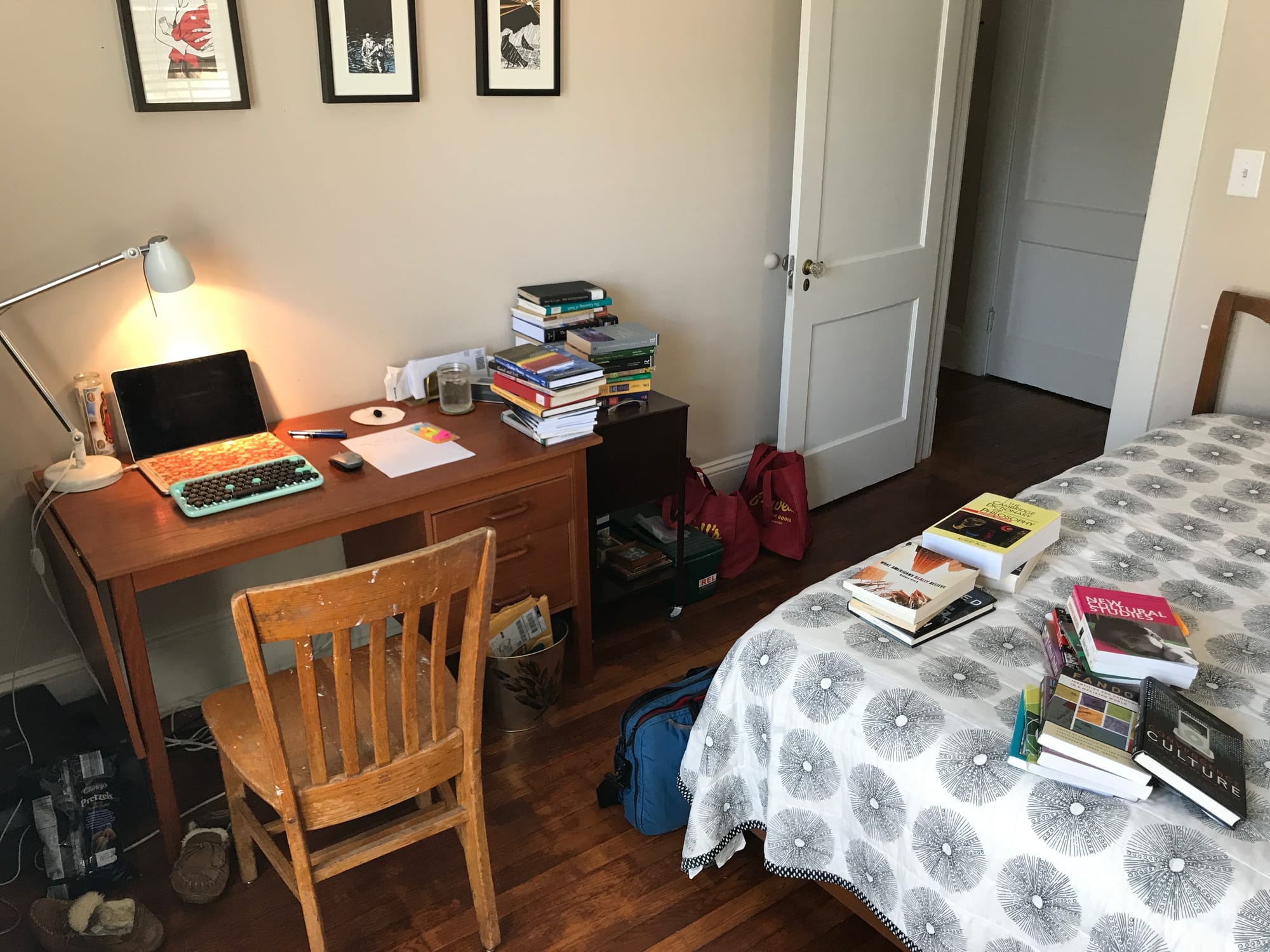
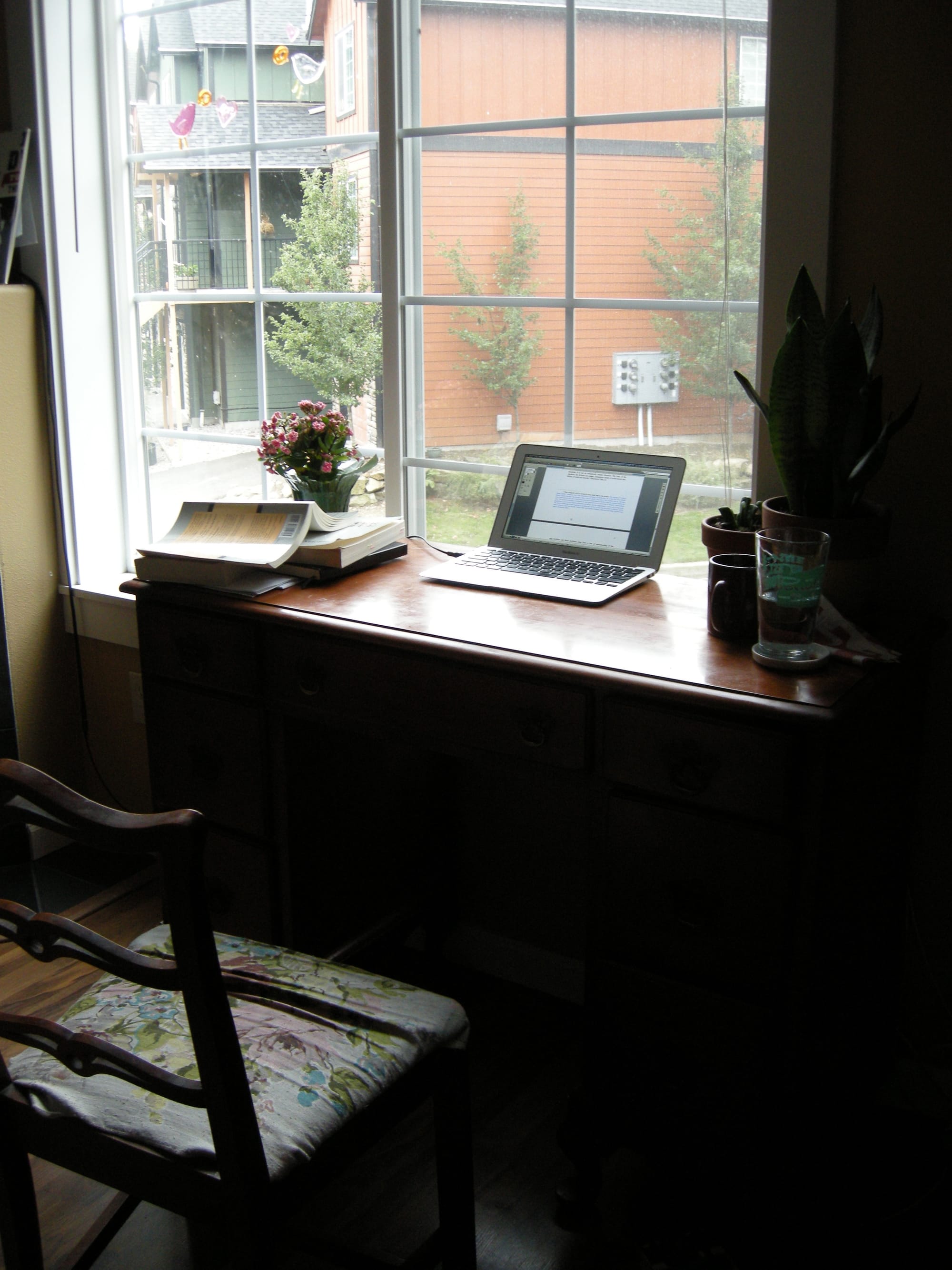
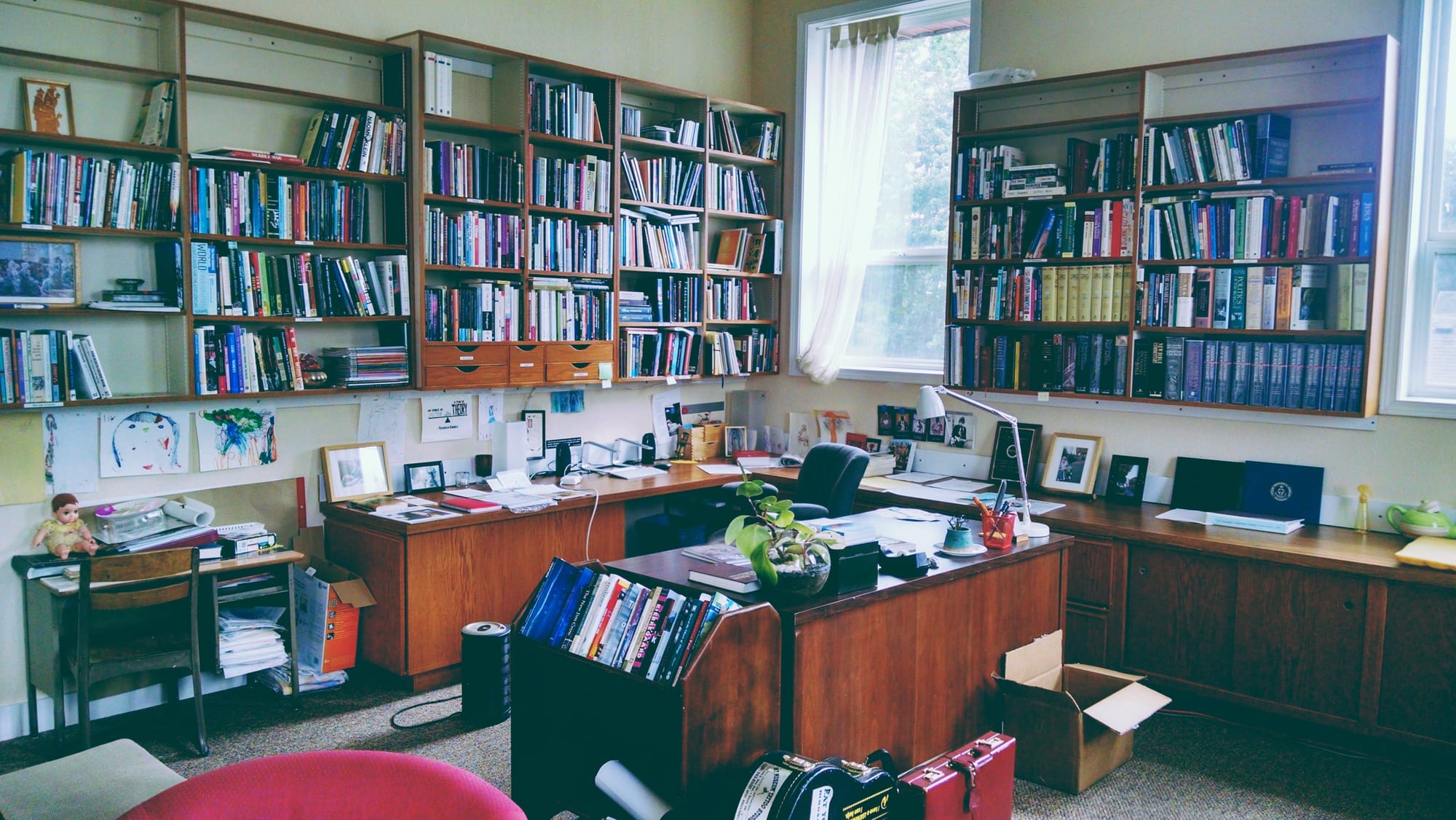
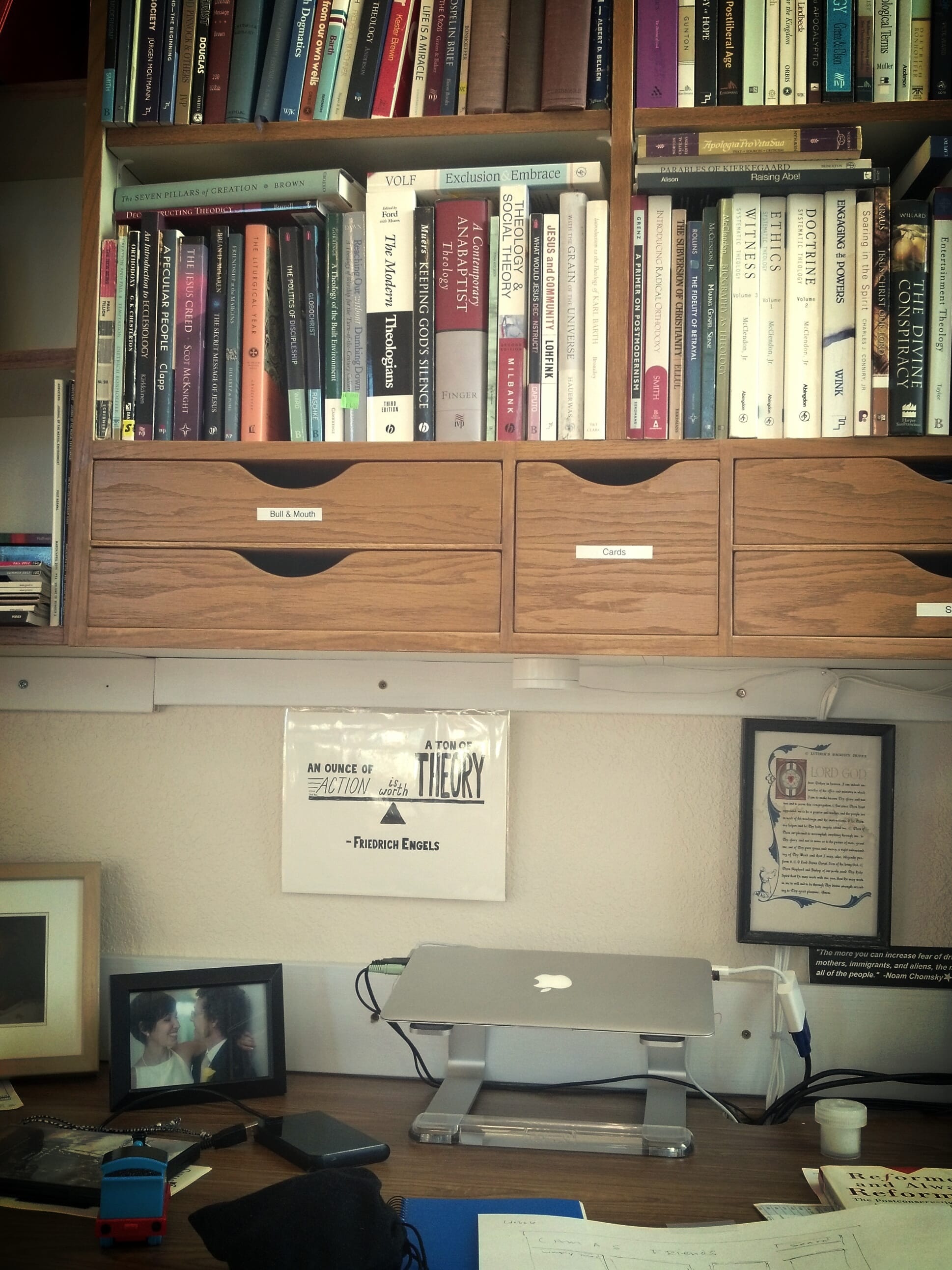
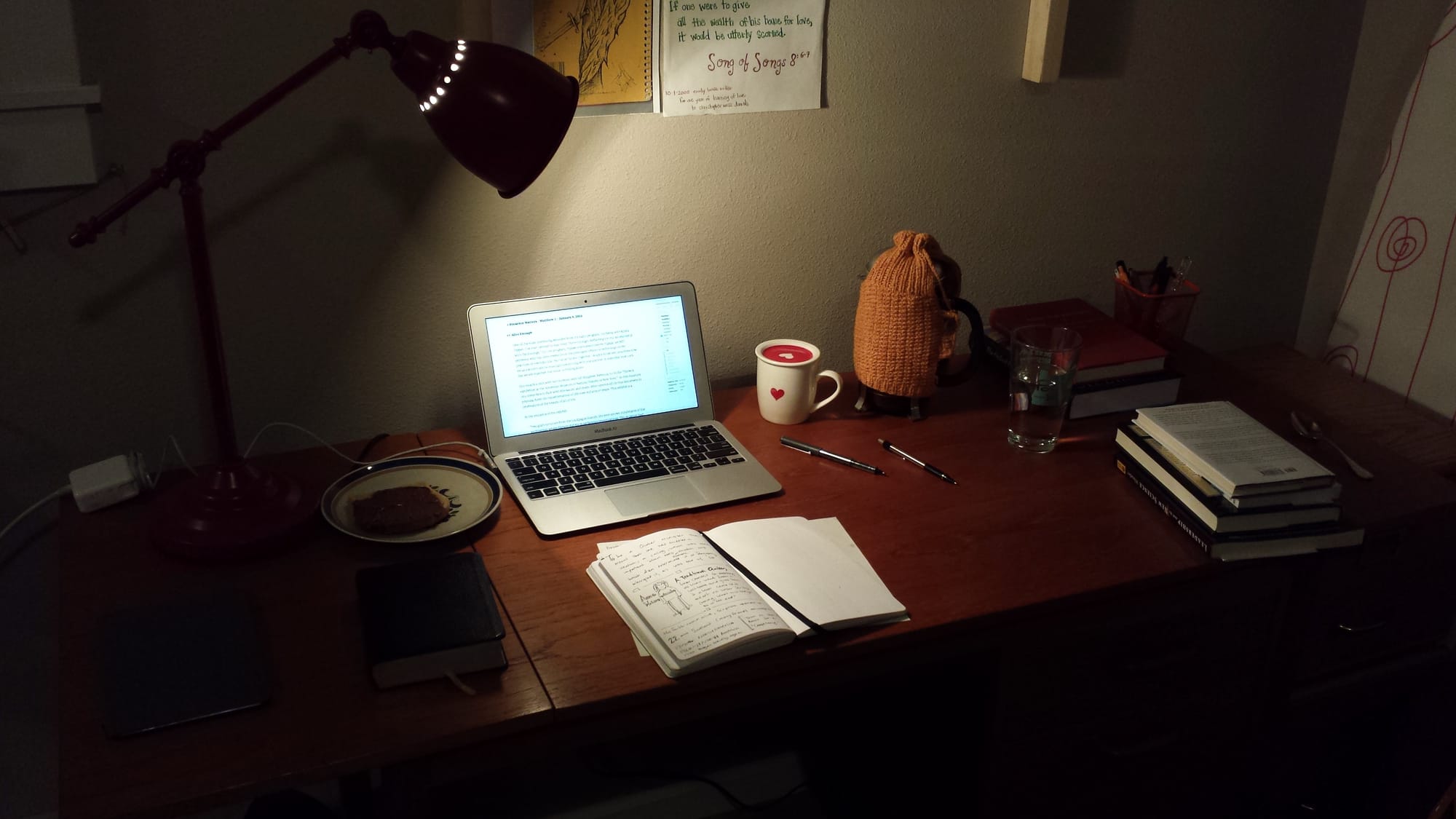
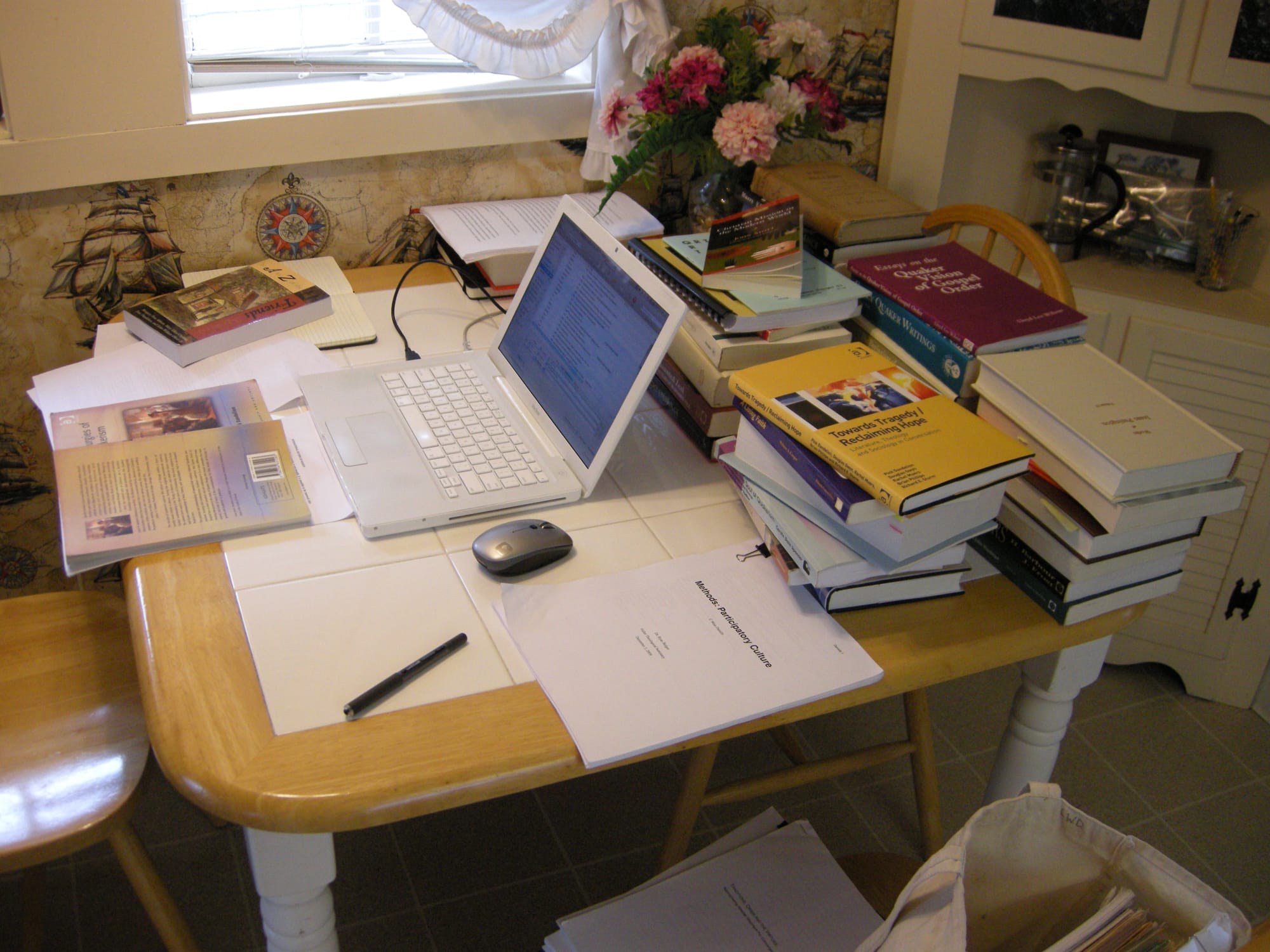
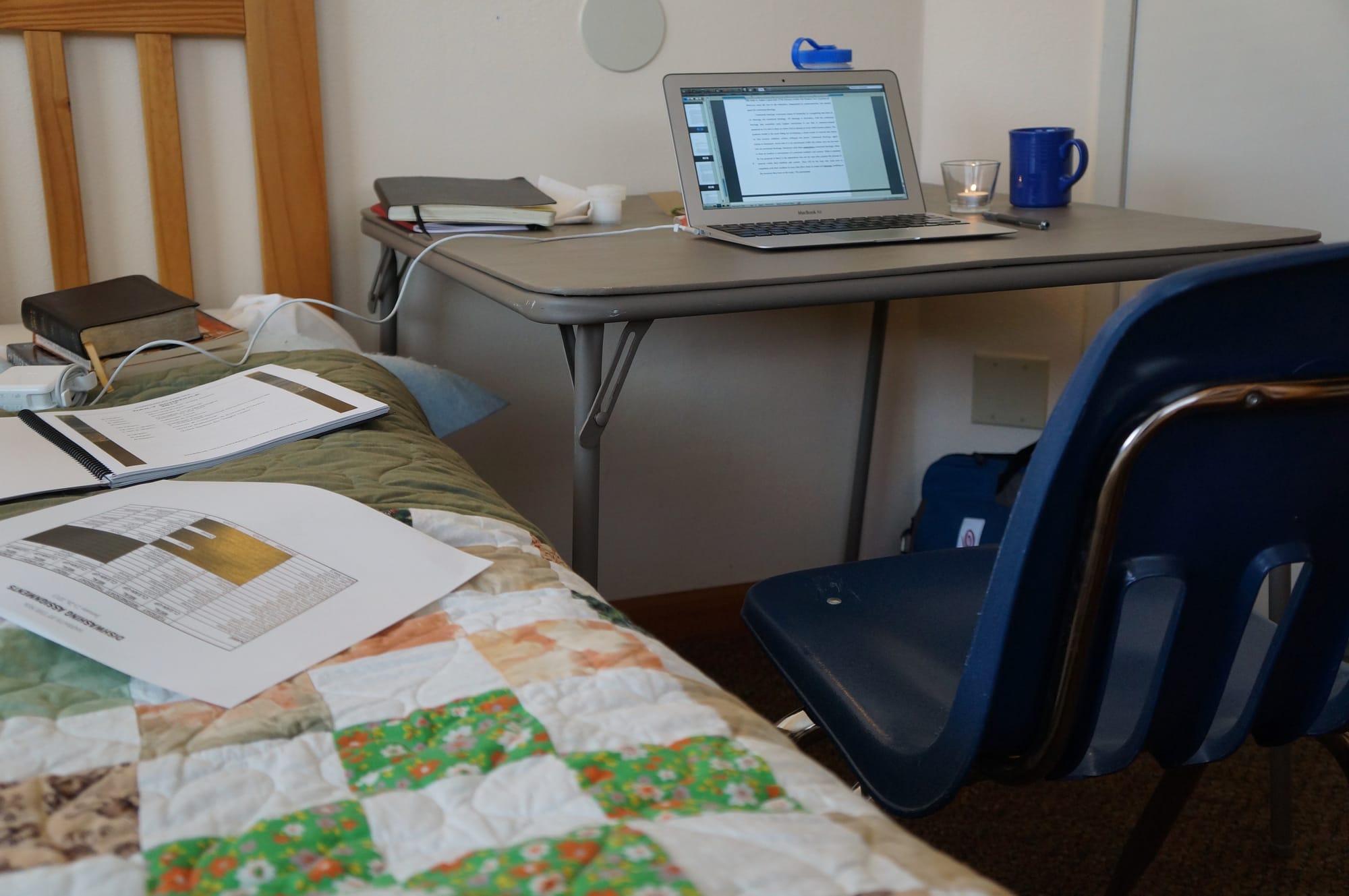
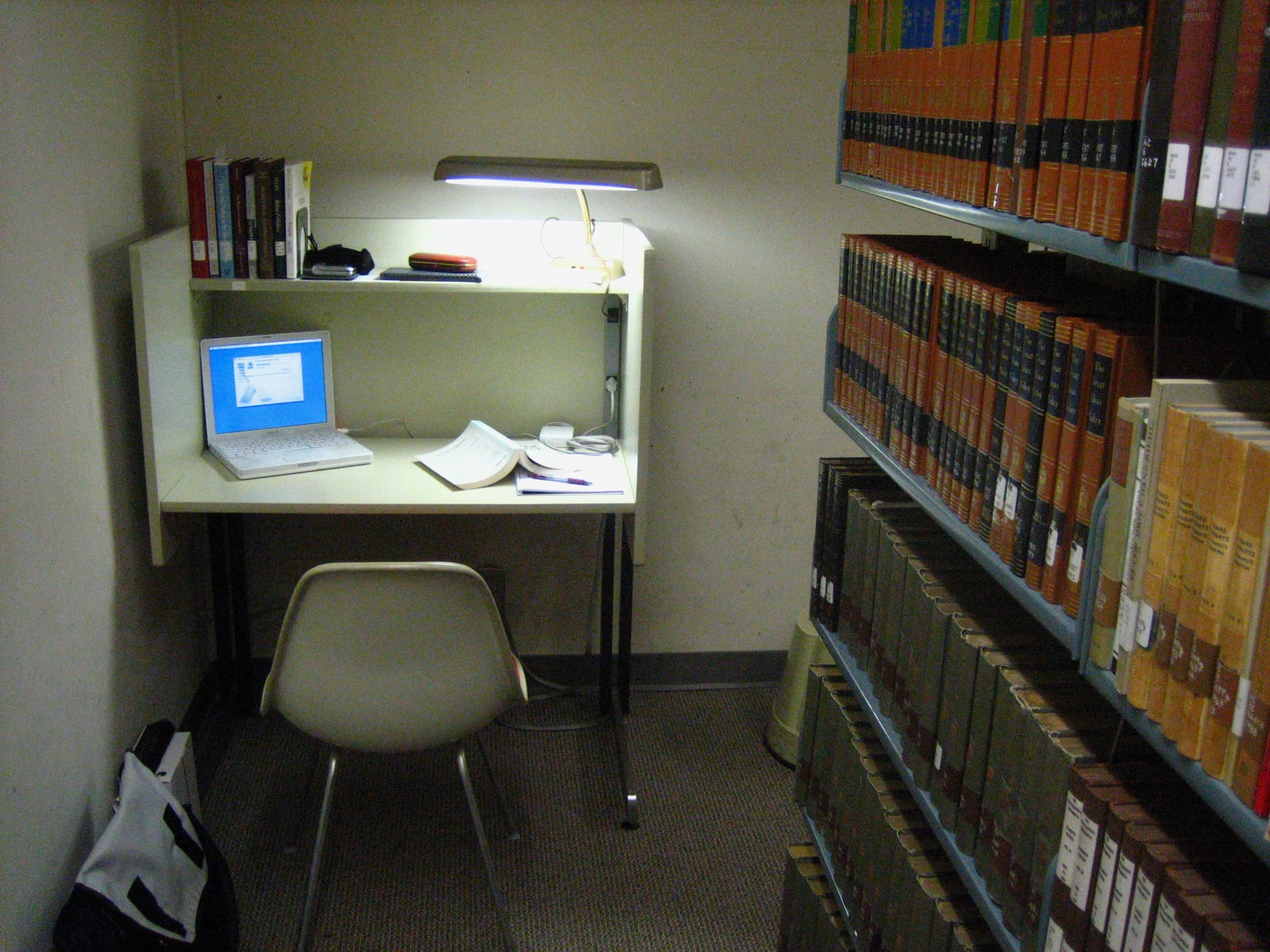
See below for descriptions of each space: left to right, top to bottom. Not in chronological order!
My new space! You can see influences from the Camas Friends Office and a few other spaces here.
- The start of my new office/library at our new house, which eventually became our oldest daughter’s room.
- Close up of the office we built at our first Greensboro home. The Ikea system was really cool.
- The office we built at our first Greensboro home. The Ikea system was really cool.
- A cozy spot in a friends bedroom I borrowed while working on my dissertation.
- My first office setup at Friends Center - Guilford College (I specifically like the calendar behind the monitor that I cannot really see!).
- Second version of my old Office at Friends Center, obviously surrounded by the Light!
- Study nook in one bedroom apartment in Pasadena during seminary.
- A different apartment and different study nook in Pasadena.
- Study space at first Greensboro home while working on a presentation that become my “Liturgies of Empire” talk.
- First home in Greensboro working on the Quaker sociology piece for Brill. This space would later become an the office we built during Covid.
- Writing space at our Camas home looking out the front windows of our condo. I spy Alasdair MacIntyre on the desk.
- My Office at Camas Friends Church when I pastored there. Note the small child’s desk next to mine. The kids would come and play there and liked to use that space from time to time.
- Close-up in the Camas Friends office – I intentionally kept some of my most favorite authors and books of the time on these shelves because they head height. When I needed inspiration, they were within easy reach. Those shelves shifted over the years as new influences came into my life. I designed my new studio to have the same kind of arrangement.
- Makeshift office at our Camas Home. Highlights: Coozy for French Press that Emily made for me and a heart mug. I loved that mug because it has it’s own lid.
- Working on a chapter in my dissertation in a little cabin on the Oregon coast. This was the kitchen table.
- Makeshift desk at a retreat center (Mt. Angel in Oregon).
- The basement of the Fuller Library. One of my favorite spots to hide.
What I have learned about myself is that if I need a space to think and focus on what is in front of me, I need a smaller, more confined space, away from the flow of people traffic, and household needs. If, like this morning as I write this, I set up at the kitchen table with my laptop, I will first need to do the dishes before I can sit down to write (rather than waiting until say, my lunch break to do it). It’s a focus thing. I also need good light. Easy access to books. And plenty of table top to lay multiple books out and notebooks, sketchnotes, coffee, etc. Not all the above pictures were ideal, but they all served their purpose when I needed it.
Needing Time To Make Time
A year ago, in December of 2022, I realized I was burned out. Not only were the lingering effects of the pandemic still weighing on me but there were also a handful of other things we as a family went through over the past couple of years that made 2020-2022 the hardest years of our lives. We were on the other side of those things now, but I was fried.
I remember the moment I realized I was burned out. It came after the extended holiday break in December. We had a lovely Christmas that year and the time-off was good, but I was still completely exhausted. I couldn’t imagine going back to work. I had the image of struggling to pull myself across a finish line, clawing each inch of the way. I just didn’t have it in me. I needed more time. Everything was tired in me was tired.
That’s when I decided to request my first Sabbatical. Sabbaticals are typically something folks in full-time ministry and academia are able to take every seven years (upon approval, in supportive organizations, etc., etc.), but by the time I realized I was feeling burned out, I had been at Guilford for seven and a half years and was at least a year away from being able to take mine.
We moved to Greensboro in 2015, on the heels of serving a Quaker congregation for six years. From 2009 to 2022, I’d been going hard in ministry, working from the belief that I could keep going indefinitely, or maybe that I didn’t deserve a sabbatical. But when I hit the wall at the end of December, I knew I needed put up my white flag. The thought of having to apply for the time off was another obstacle. You know how when you feel you need help but you are too tired to even ask for it? That was me.
Eventually, in January 2023, I mustered up the energy to begin the application process in the hopes that I could go on Sabbatical starting a year later on January 1, 2024. I felt that if I could get it approved, I could get myself to the “finish line.” I also felt that asking for a time earlier than a year out seemed to unreasonably put my colleagues and students in a jam. Later, I would realize that I struggle with the idea that my needing time away meant that others would have to pick up my slack. I saw that in our culture, it is really hard to take time off both logistically but also psychologically. At least it was for this oldest child and enneagram three.
As it turned out: The process of applying for a sabbatical was not all that hard and I had support from my boss to do it. I could feel the gift of the Sabbatical working on me even then. It allowed me to push a little harder and to keep going, knowing that there was a light at the end of the tunnel.
To Build My Own Space
Once the Sabbatical was approved, I found joy in starting to plan what I was going to do during my time off. I wanted to have focused time to write. I love writing, as evidenced by the fact that I have been writing on this blog for over twenty years and am constantly thinking of new things to work on and write about. However, the prospect of writing at the kitchen table or my makeshift basement desk every day for six months really wasn’t going to cut it.
I began to brainstorm:
- Maybe I could make a coffee shop work? Yes, but what about packing in and packing out every day?
- Maybe I could find a room at someone’s home. Yes, but what about all the time lost being in conversation, the distractions of those living there, climate and allergies can often be an issue for me, as well as traveling to and from that place?
- Maybe I could find a study caral like I used to use when I was at Malone and Fuller (see picture above). I didn’t want to travel to Guilford, that would turn back into work. And nothing else seemed all that appealing.
On and on I went. While in the back of my mind, I knew what I really wanted. I wanted my own space. One that required no travel. Little interruption, Magnolia our dog would require some attention. A place where everything is already there and set up. It should be small, cozy, minimalist, and my own. It should be a place of quiet reflection, inspiration, focus, and welcome (I’d like to welcome a guest for coffee and conversation). What I really wanted was a writing space.
Emily and I started looking at various fancy sheds. Who would have known there are more than enough options out there! I didn’t have to look far. Handmade shed companies are littered across Route 40 here in North Carolina. There was one in Kinston I liked that I knew about because we drive by it on the way to the beach each summer. These all looked fine but not all that custom but and are pretty expensive.
I started to wonder about building one. Maybe I could get a kit and build it myself? One hitch in that plan, I don’t know anything about construction. Even if I’d like to learn, would a project of this size be the time to figure it out? Probably not. Secondly, I wanted the space to be more custom than what a kit could offer. That’s when I decided to ask my father-in-law. Could we design and build something together, so I could learn, and have a space to write and create of my own? There was some back and forth, and as he’d remind me later, he preferred a simpler route altogether. But eventually he agreed to help me. And so we jumped in.
Inspiration and Initial Ideas
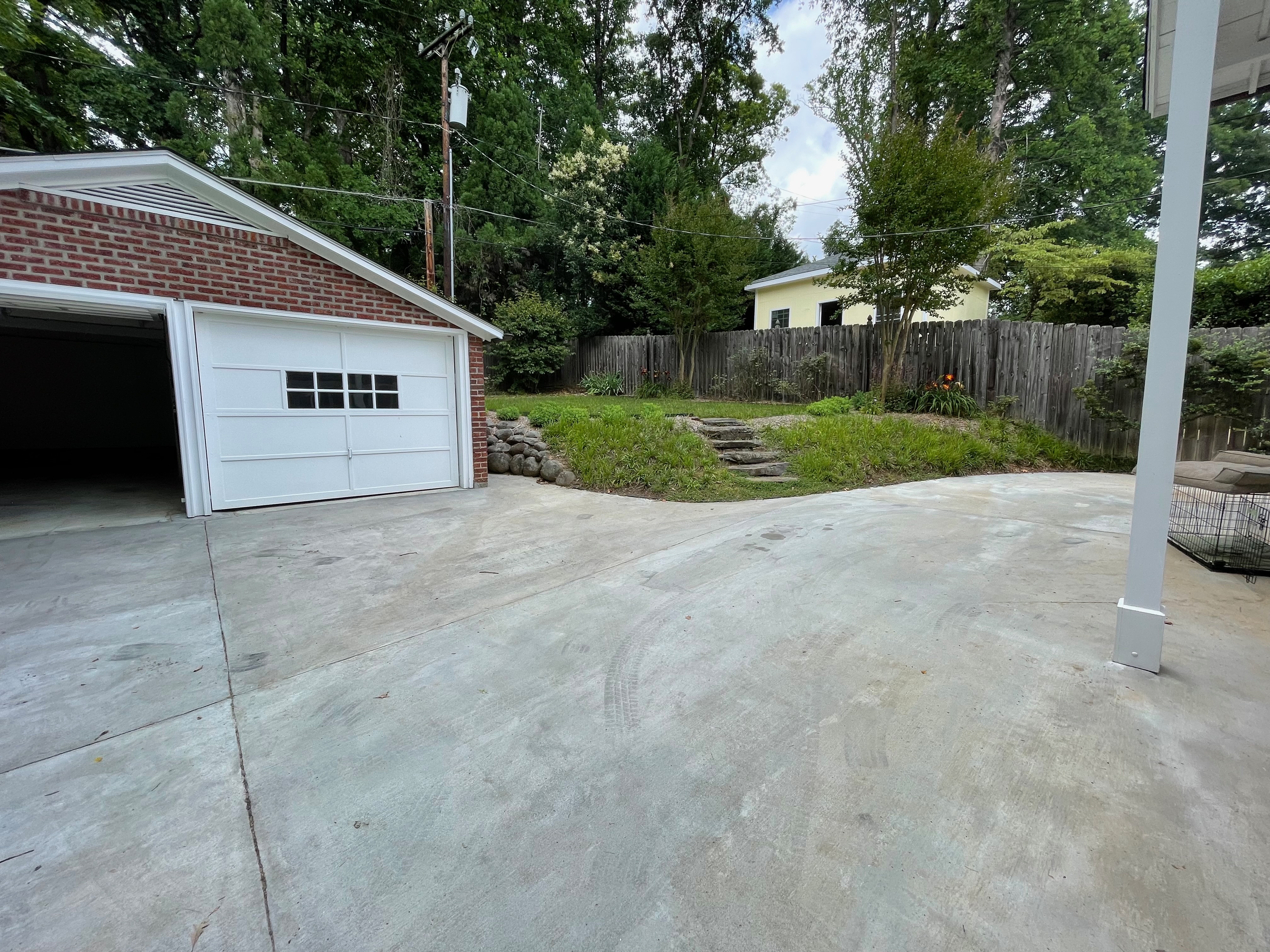
We had to think about placement of “the shed.” I knew I wanted to get the morning sun in the front with a big window to let the light in. After some discussion, we decided to put the building in the back corner of our lot next to our garage. This would put it up and away from the rest of the house, like sitting on its own perch. It would also have a nice view of the morning sun and trees to the back of our property for some privacy.
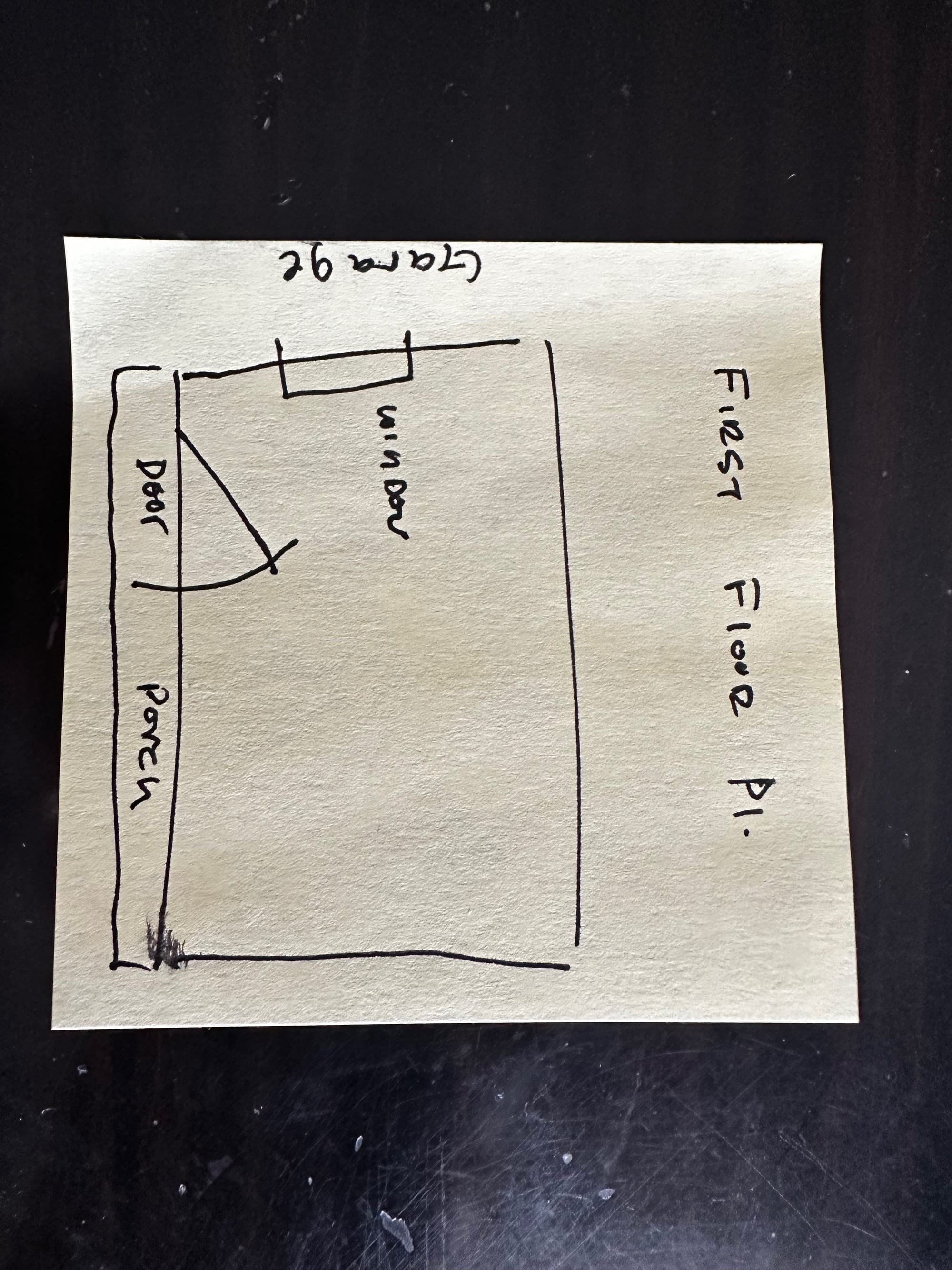
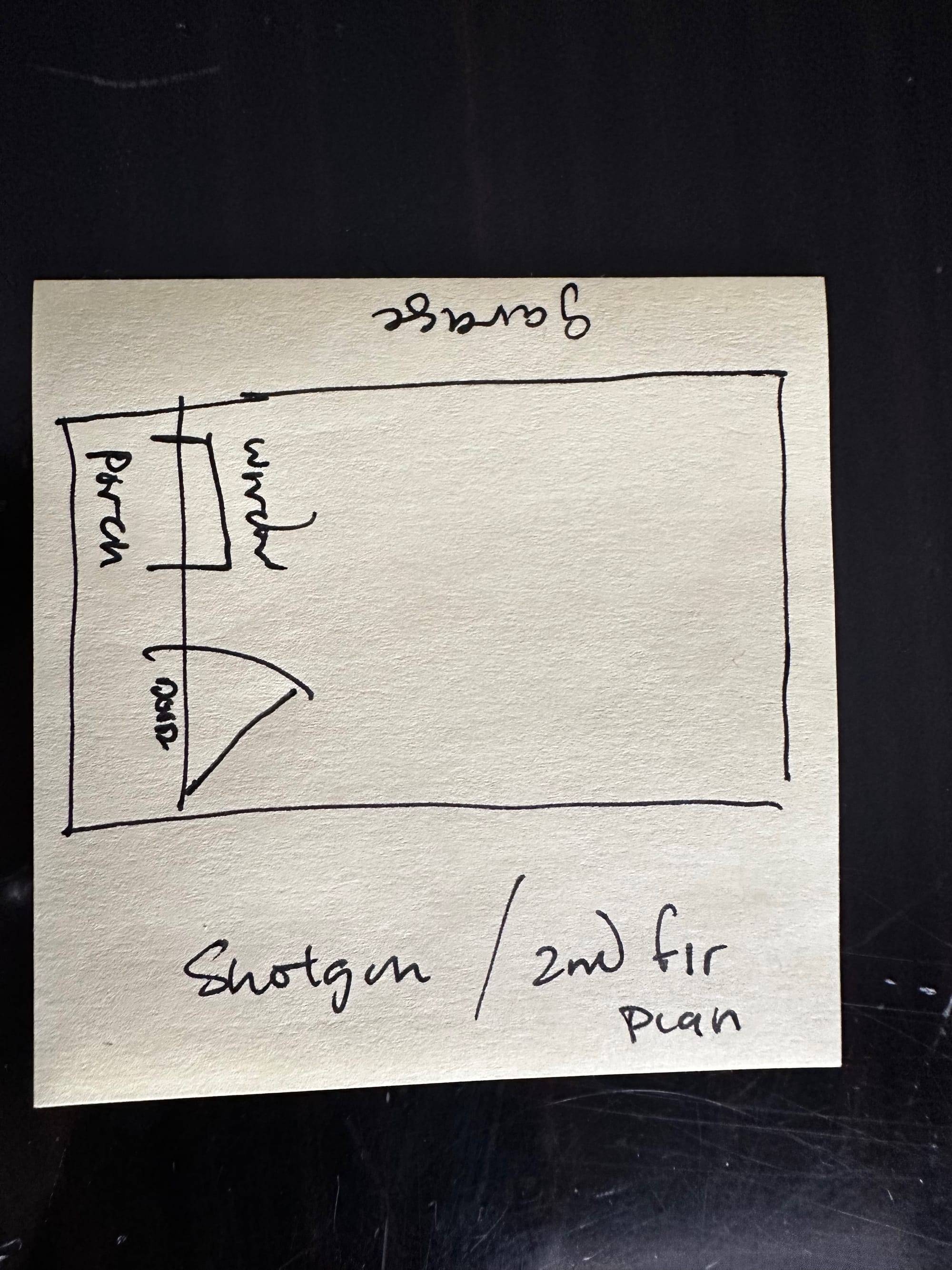
After our location was chosen, we began to think about floor plans and the direction the studio would face. Here are a couple sticky notes I drew out early on as we were dreaming up the building.
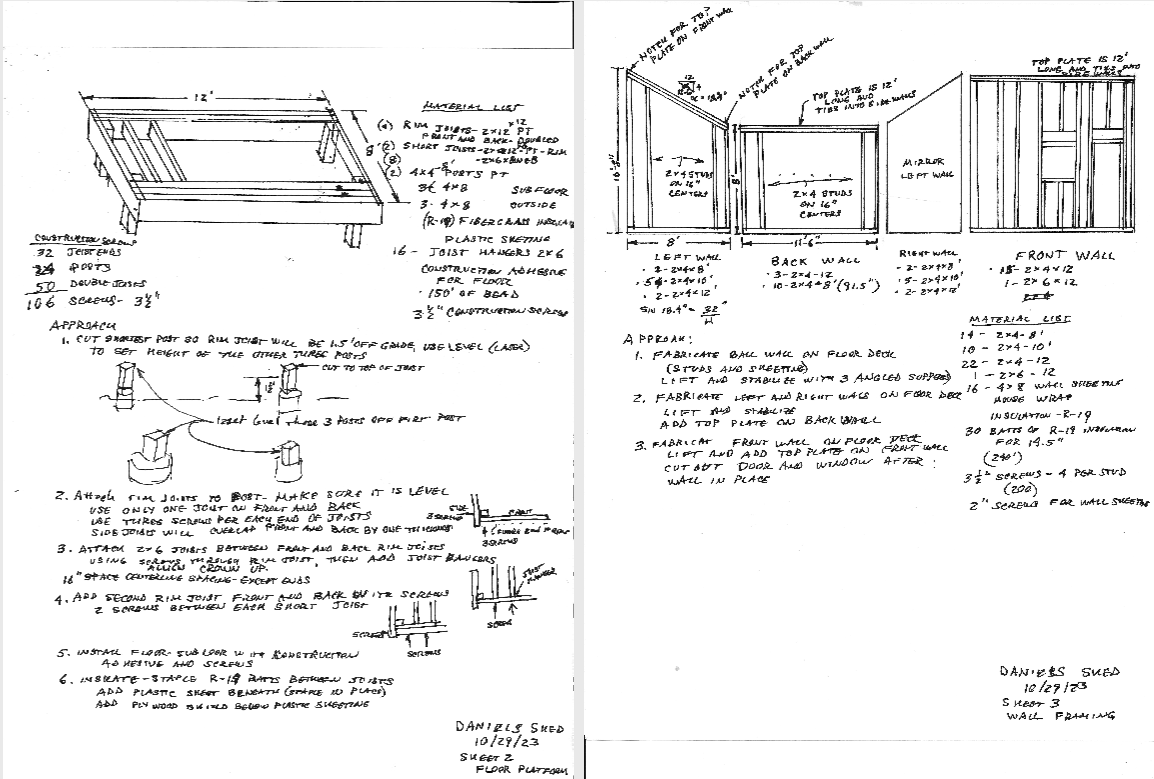
The next steps were to make a set of drawings of the building. My father-in-law, Craig, who is an engineer by trade, a woodworker, and an all around handy guy drew up the plans. Craig has been building additions and renovations on all of the homes they’ve owned and so has gained a lot of experience over the years. For our project he acted as the architect, general contractor, builder, teacher, and more.
Once we settled on drawings, basic materials and price for the build, we worked on pulling together our crew. Here is where we cue the A-Team soundtrack, different people for different jobs, all joining to help a plan come together.
Besides Emily and our three kids all helping at different points in the process (some opinion, some handiwork), we pulled in a group of friends and family who were all willing to lend a hand and/or had certain needed skills. Here are their names: my brother Beau, Craig’s brother Kevin and nephews, Scott and Jake. Craig’s neighbor David. His best friend, “Zip.” My good friend and Guilford colleague, Jim (who also helped me build the desk and bookshelves). And friends, Drew, John, Kathryn, and Aleks all added to the project as well. My mother-in-law, Ellen and her best friend, Faith, Zip’s wife, were also a huge help during our 4 day “barn-raising” because they brought us donuts and keep us fed. All in all, we had at least 18 people volunteer to make this project a reality.
Now that the crew was set, we made our schedule:
- November – Dig holes, pour concrete, and get foundation set before it gets too wet and rainy.
- Mid-December 4-day “barn raising.” Invite friends and family to come for a concentrated 4 day work sprint where we get the builk of the building done. That’s when Zip, Faith, and my brother, Beau all came down from Ohio to join the rest of us in Greensboro.
- January – February – Craig and I work inside the studio doing electrial, insulation, wall-board, paint, flooring, lighting, Mini-Split, etc.
- Early February – Build bookshelves and desk with Jim
- Wednesday-Friday February 7-9 – Install bookshelves, desk, setup Mac
- As of today, March 12, I am still working on getting all final inspections past (but we are close!).
I started working in the studio on February 12, 2024.
The rest of this post is meant to share some of the process and pictures with you. I will not go in depth on the plans and all the decisions made, but more a bit of a walk through of the build with some short descriptions. If you have specific questions about process, build, etc. leave them in the comments below.
Behind The Scenes of the Build
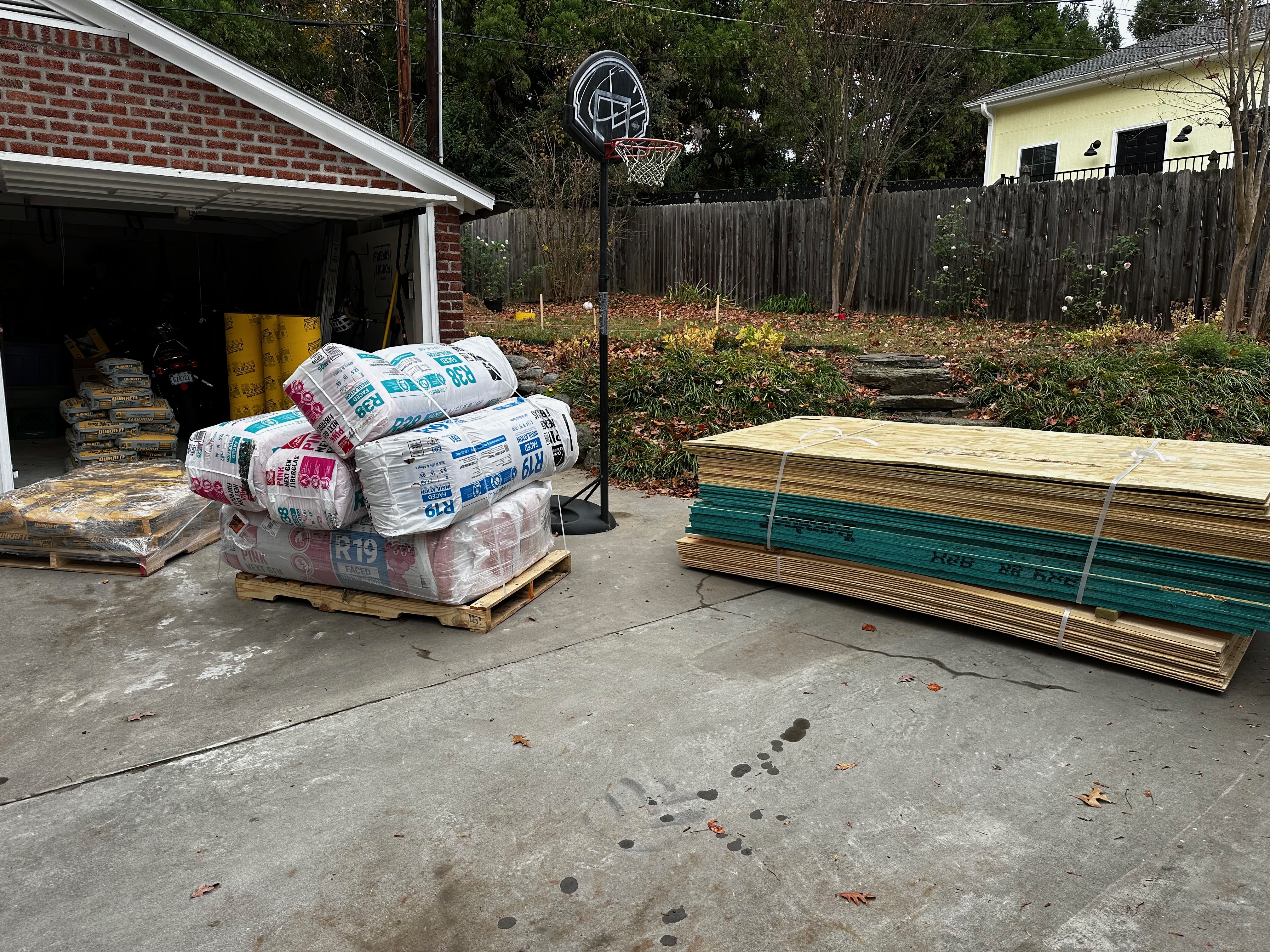
Craig ordered the materials in bulk in order to keep the price down (you get a discount when doing this). It helped that everything could be delivered to us on a flatbed, rather than us hauling everything in my mini-van!
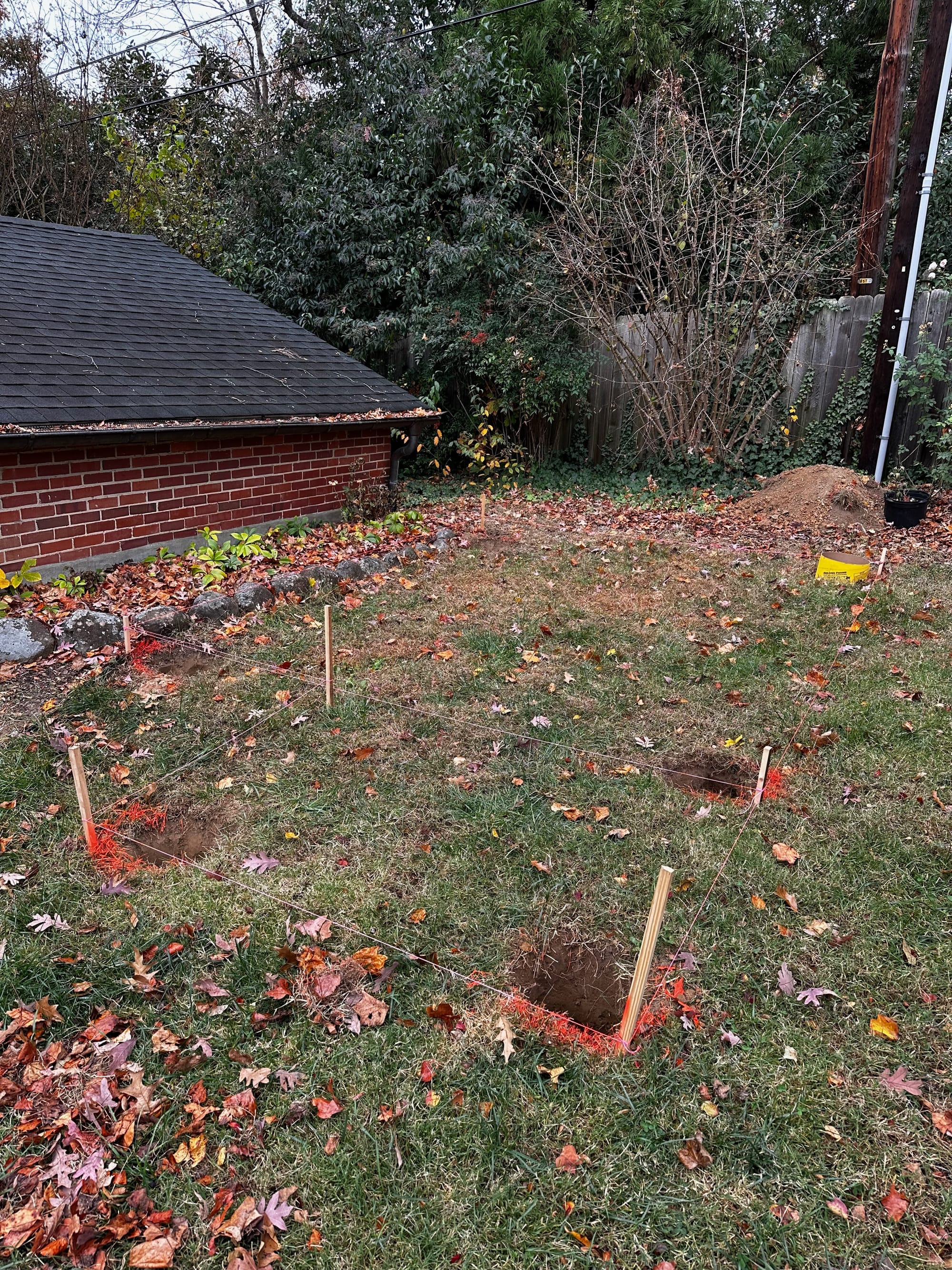
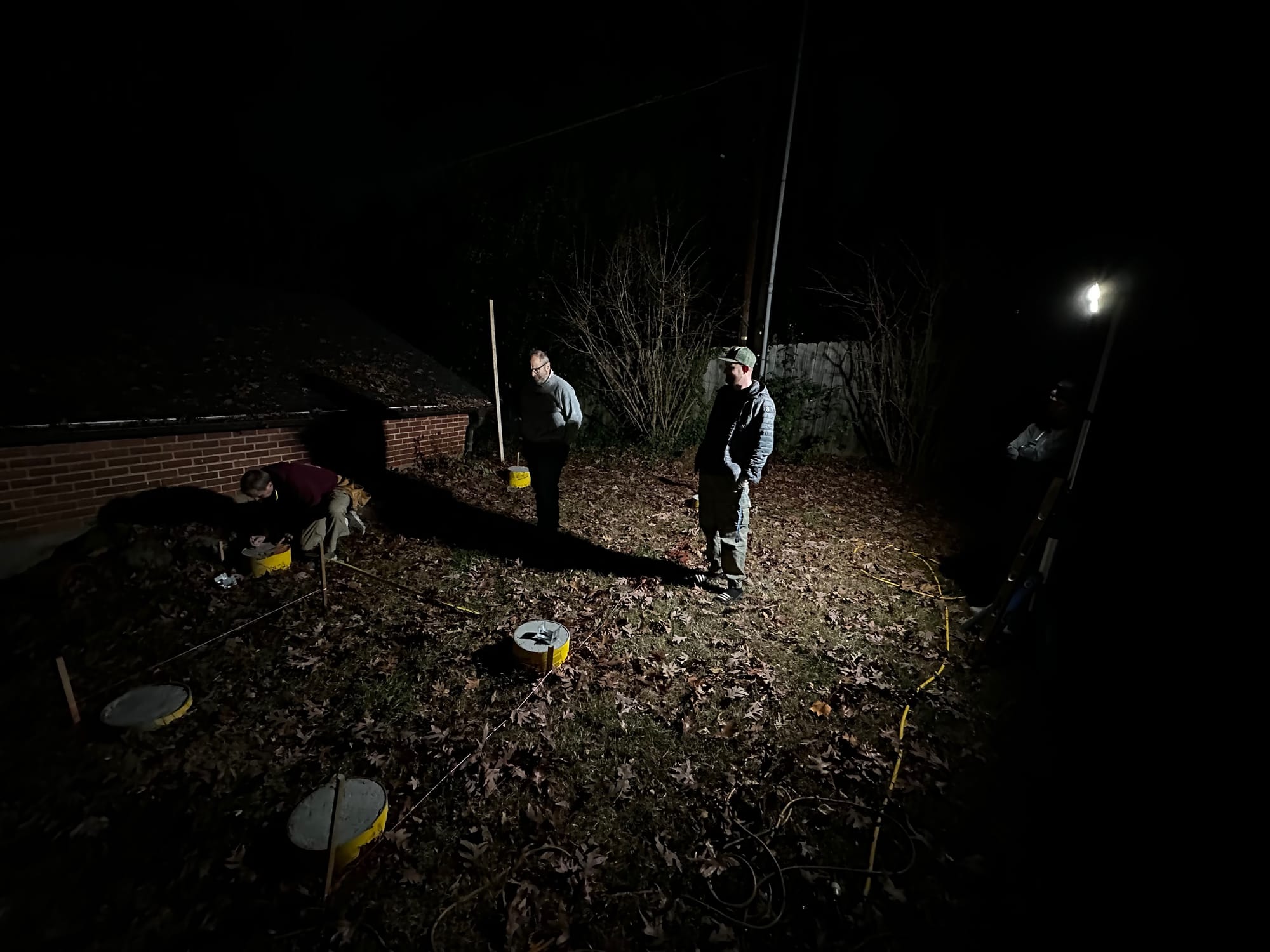
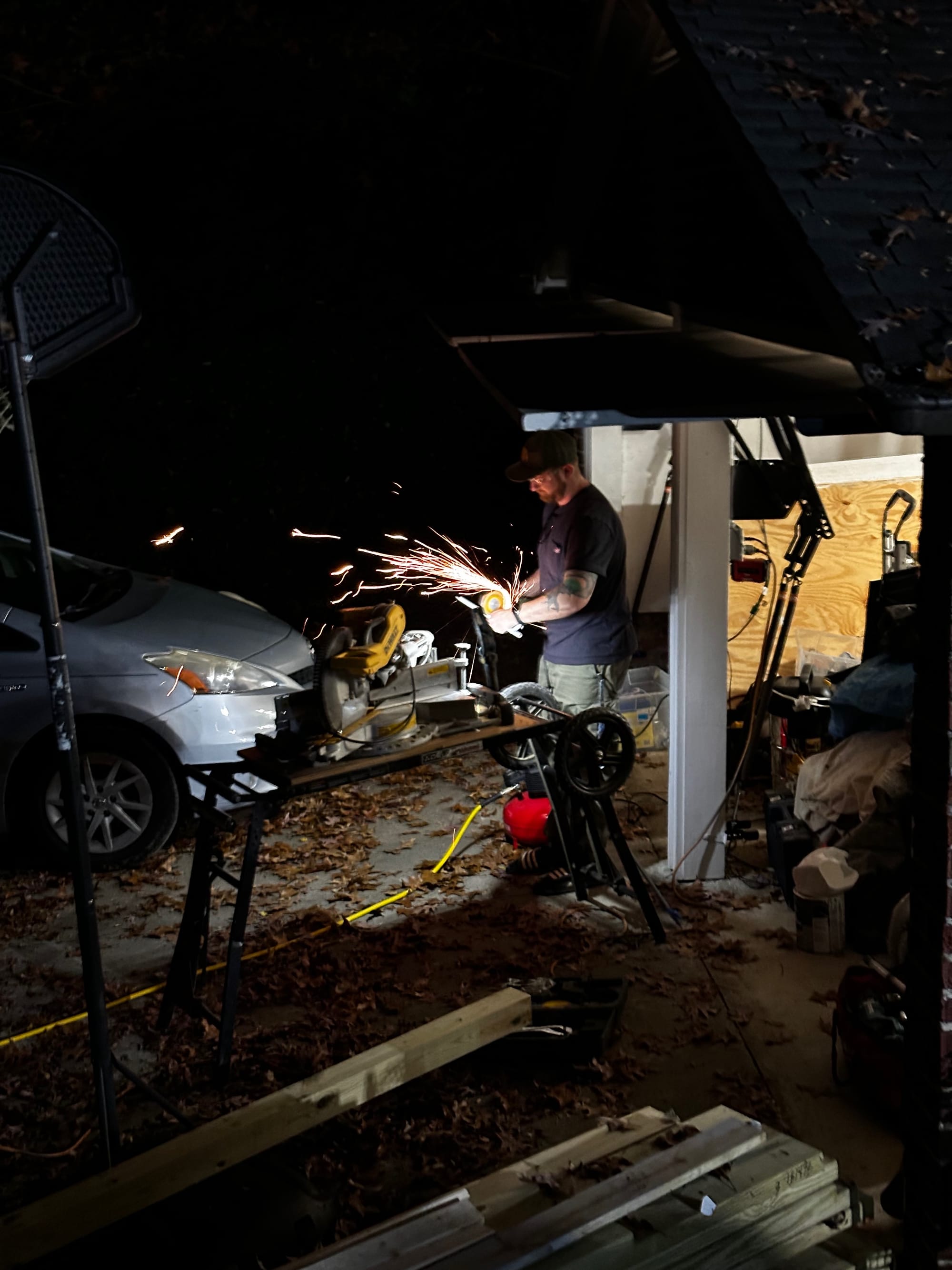
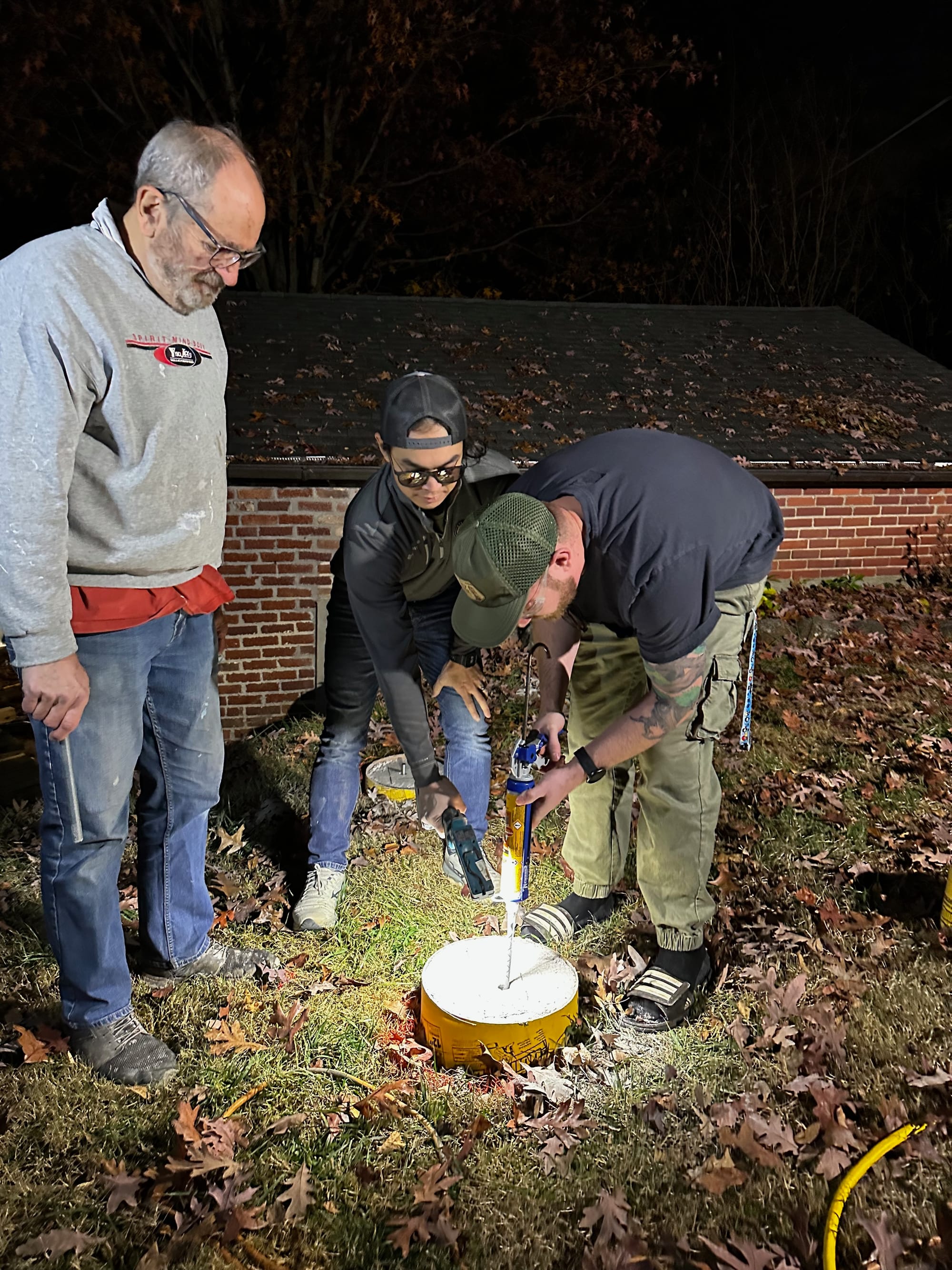
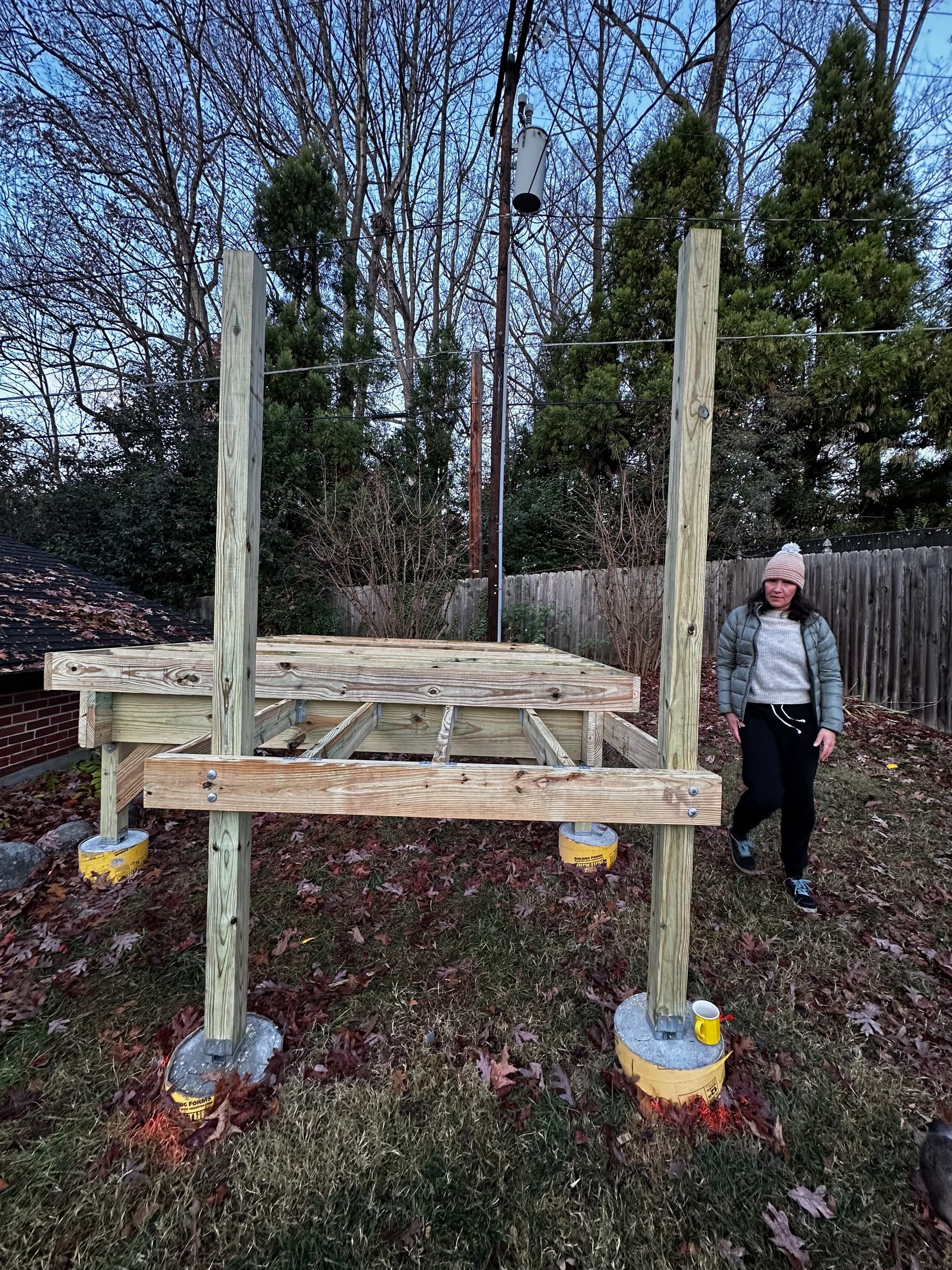
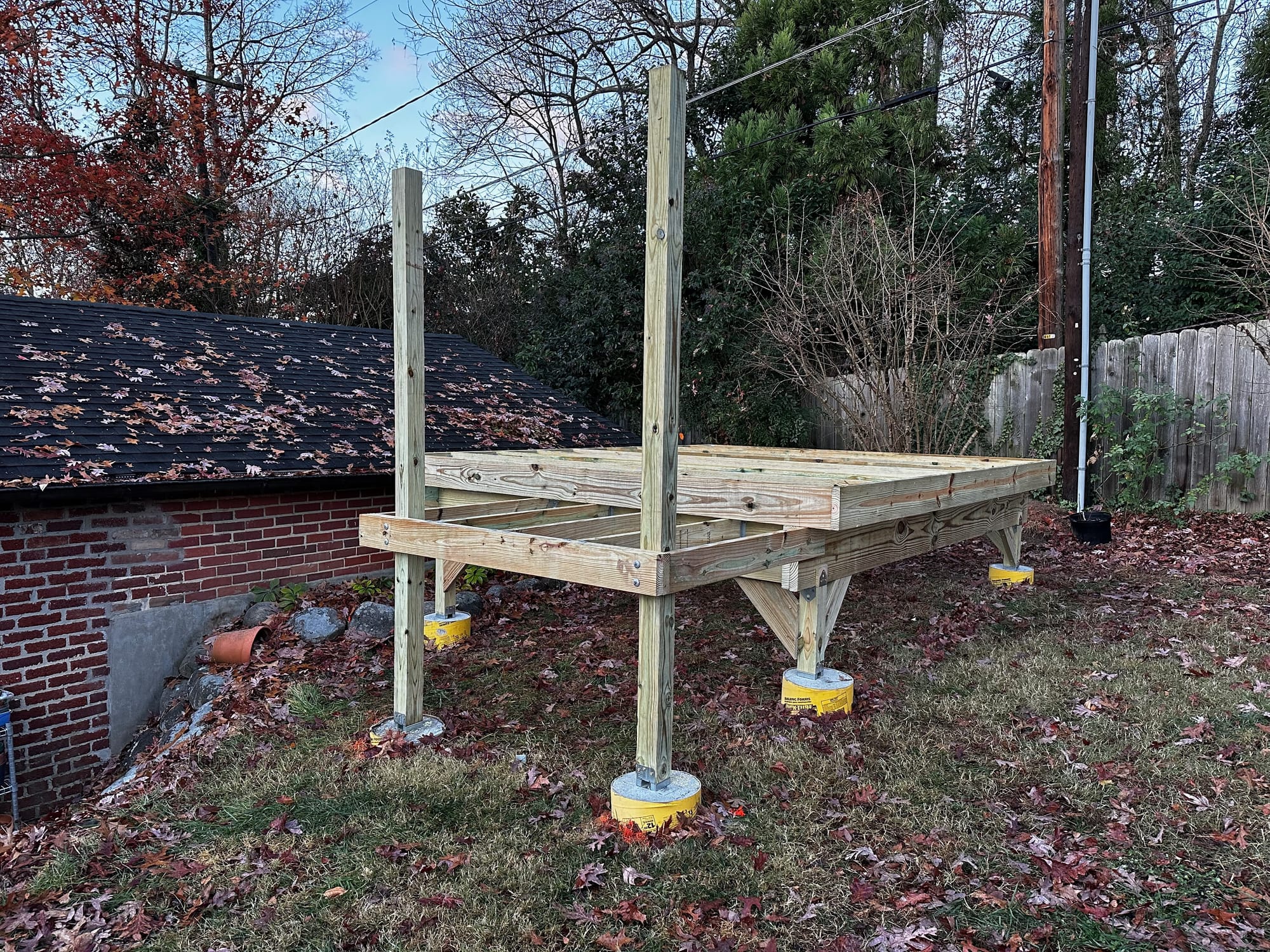
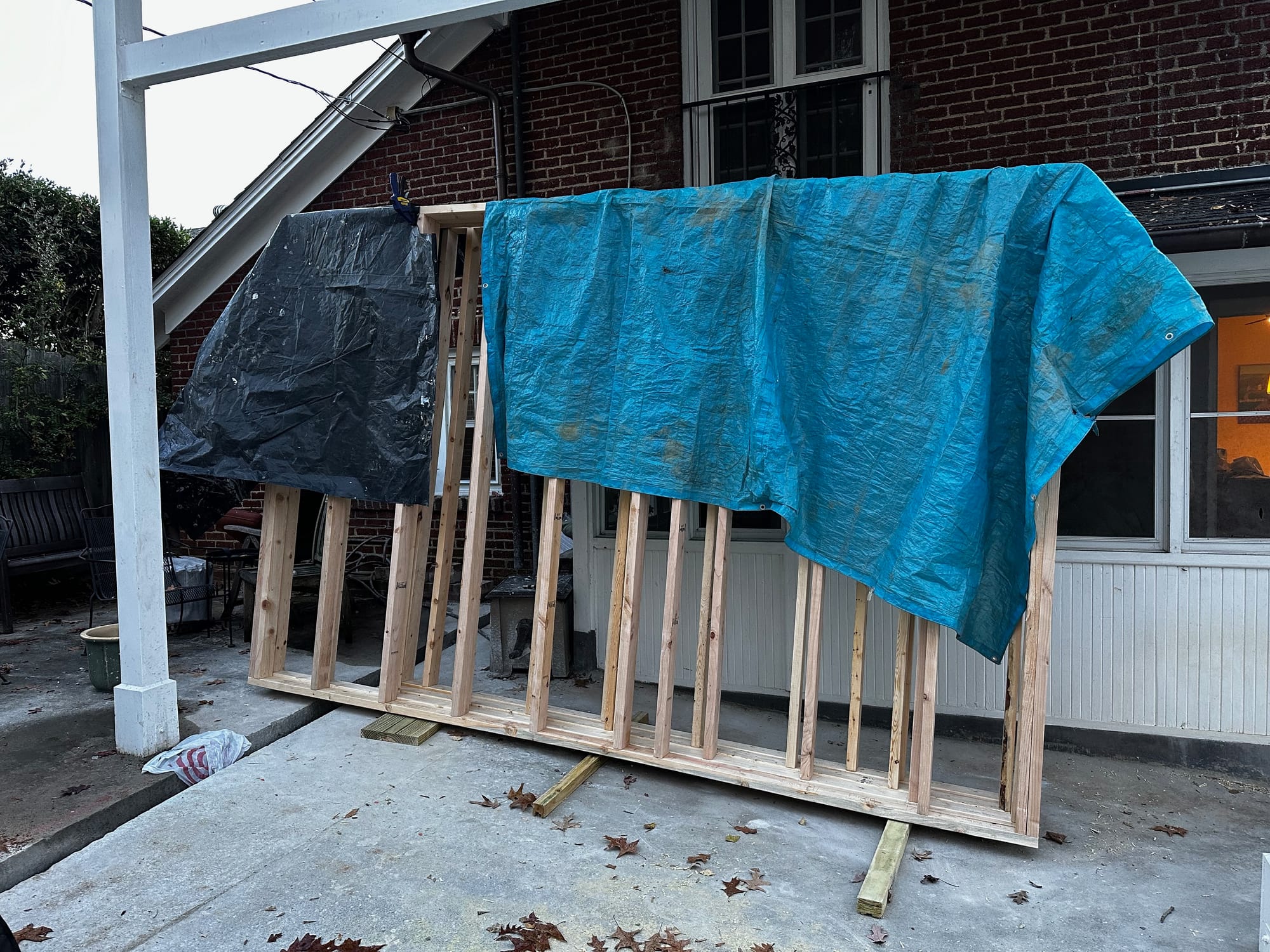
The initial work was the dig and pour the foundation. We did some of this work at night so we could use laser levels! When everything was lined up, we drilled holes in the cement footers for the steel rods that would be how you connect the structure to the footers. The next step was building the platform which became the base of the rest of the studio.
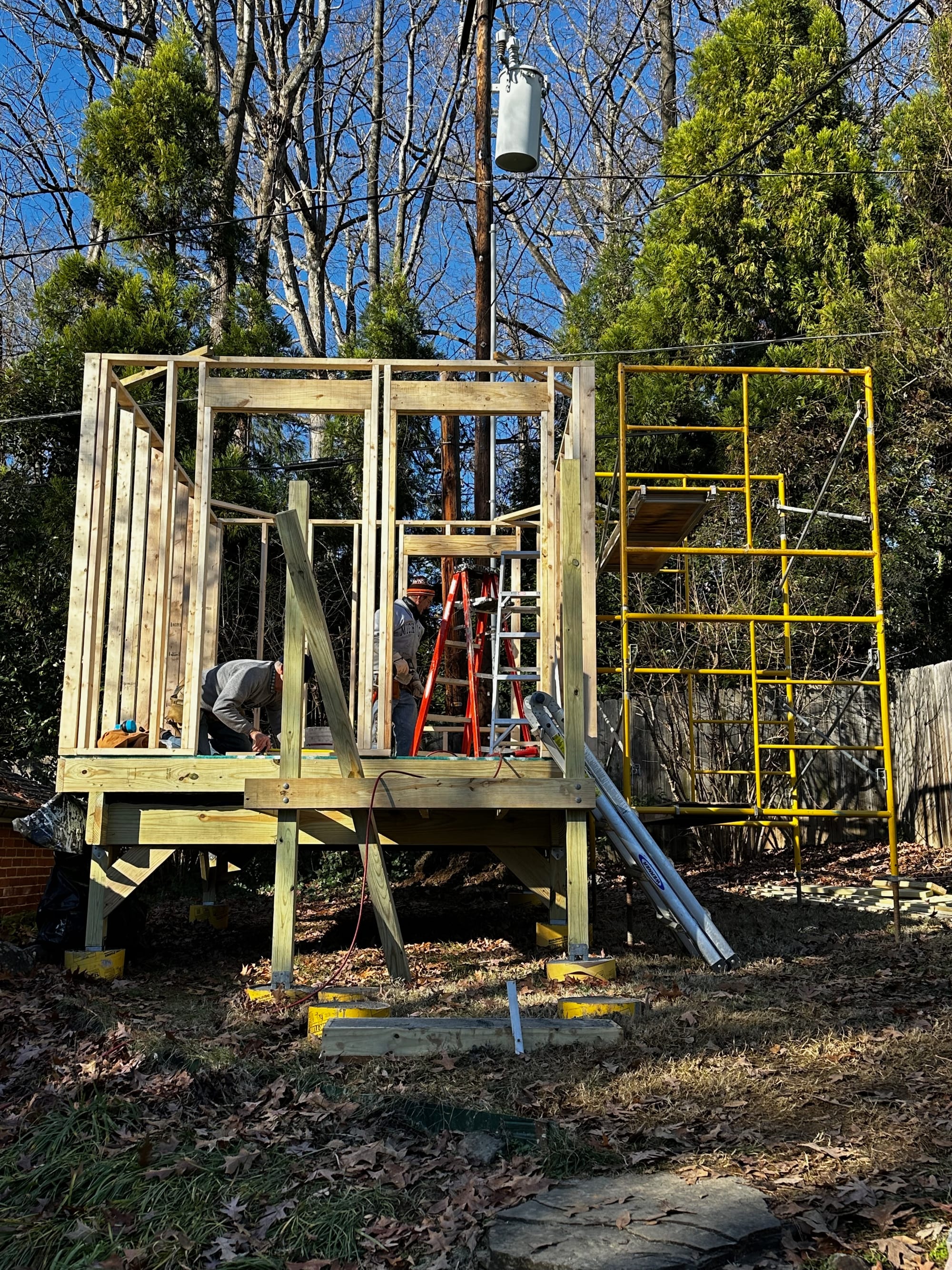
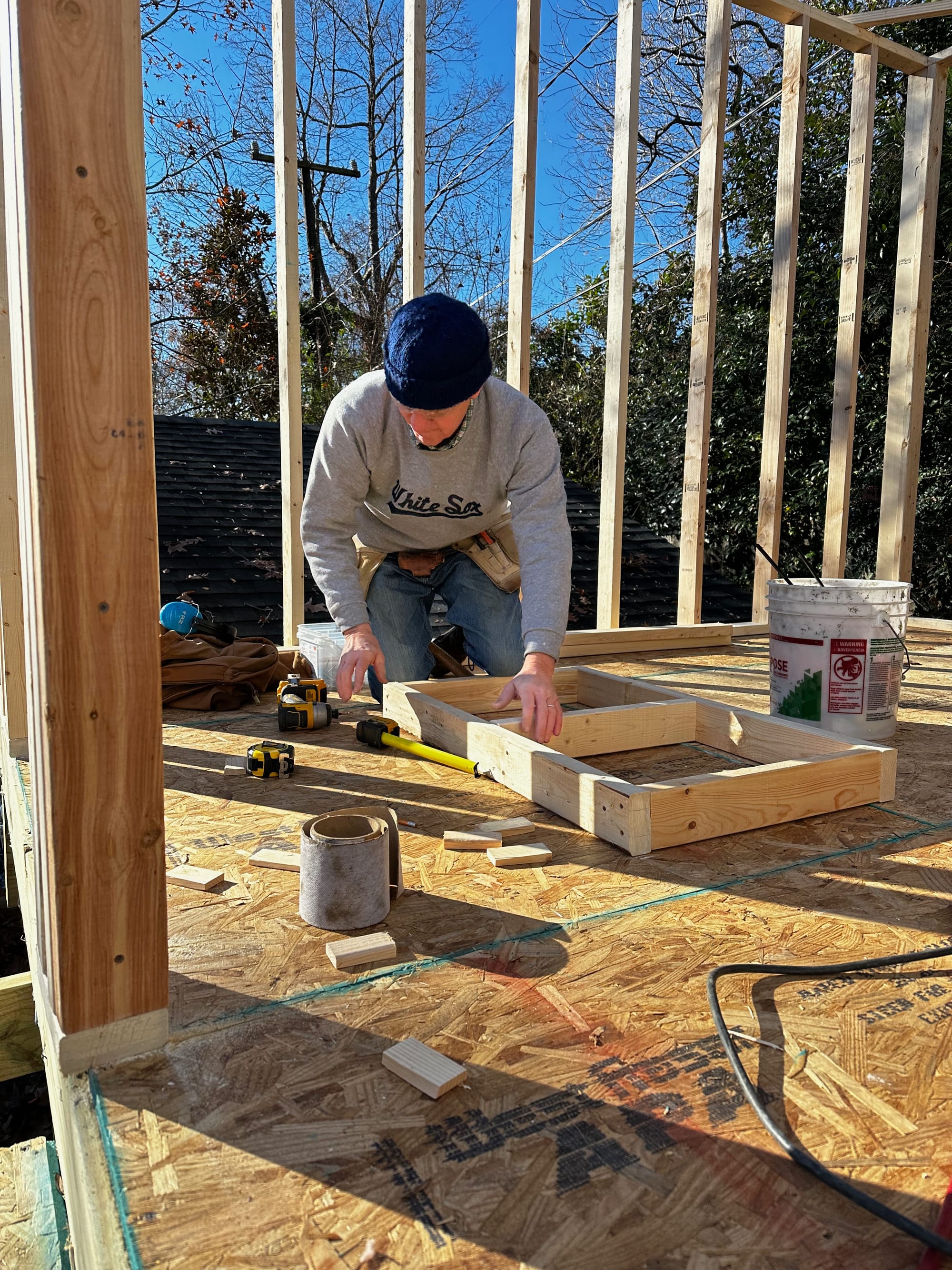
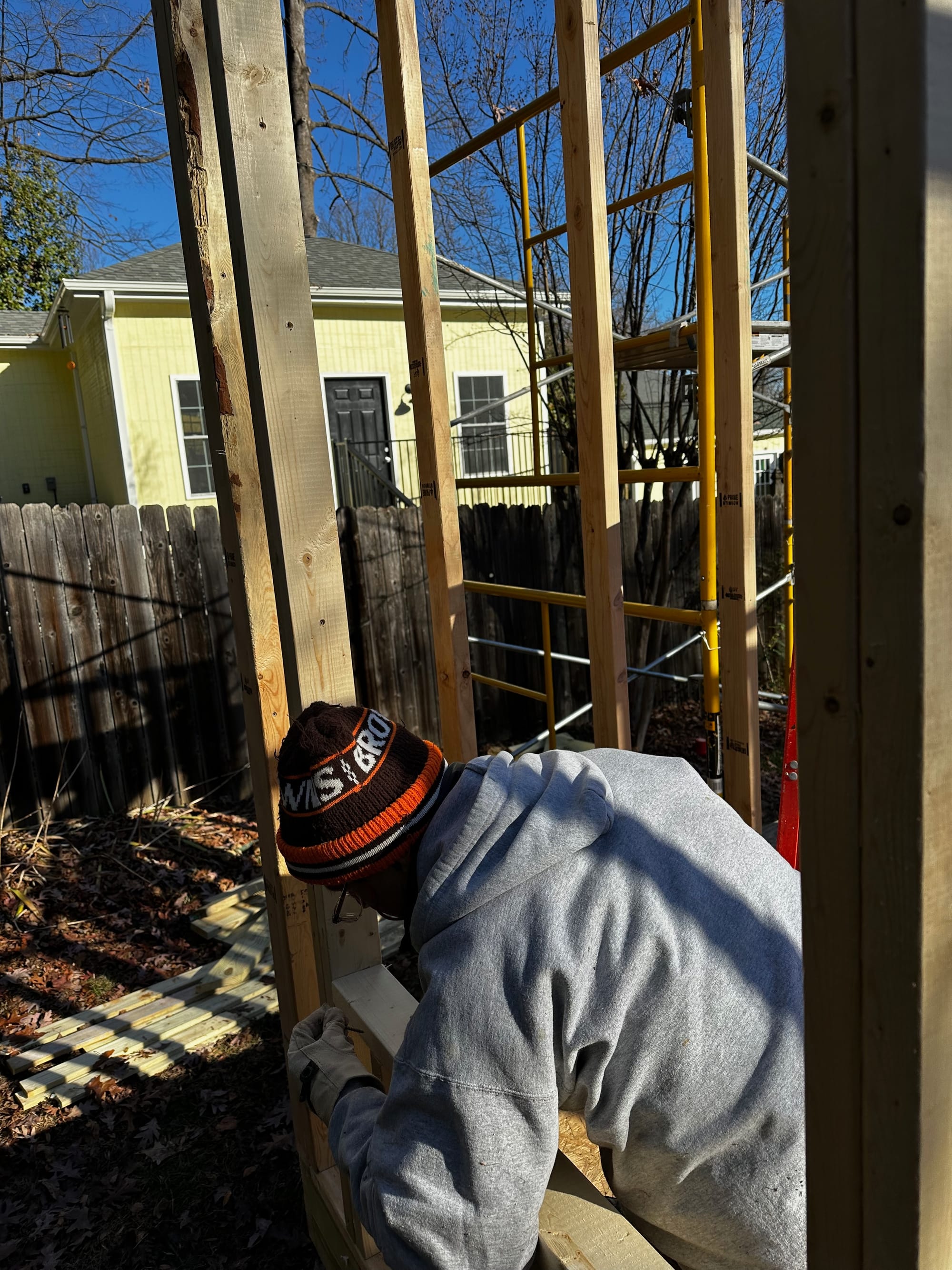
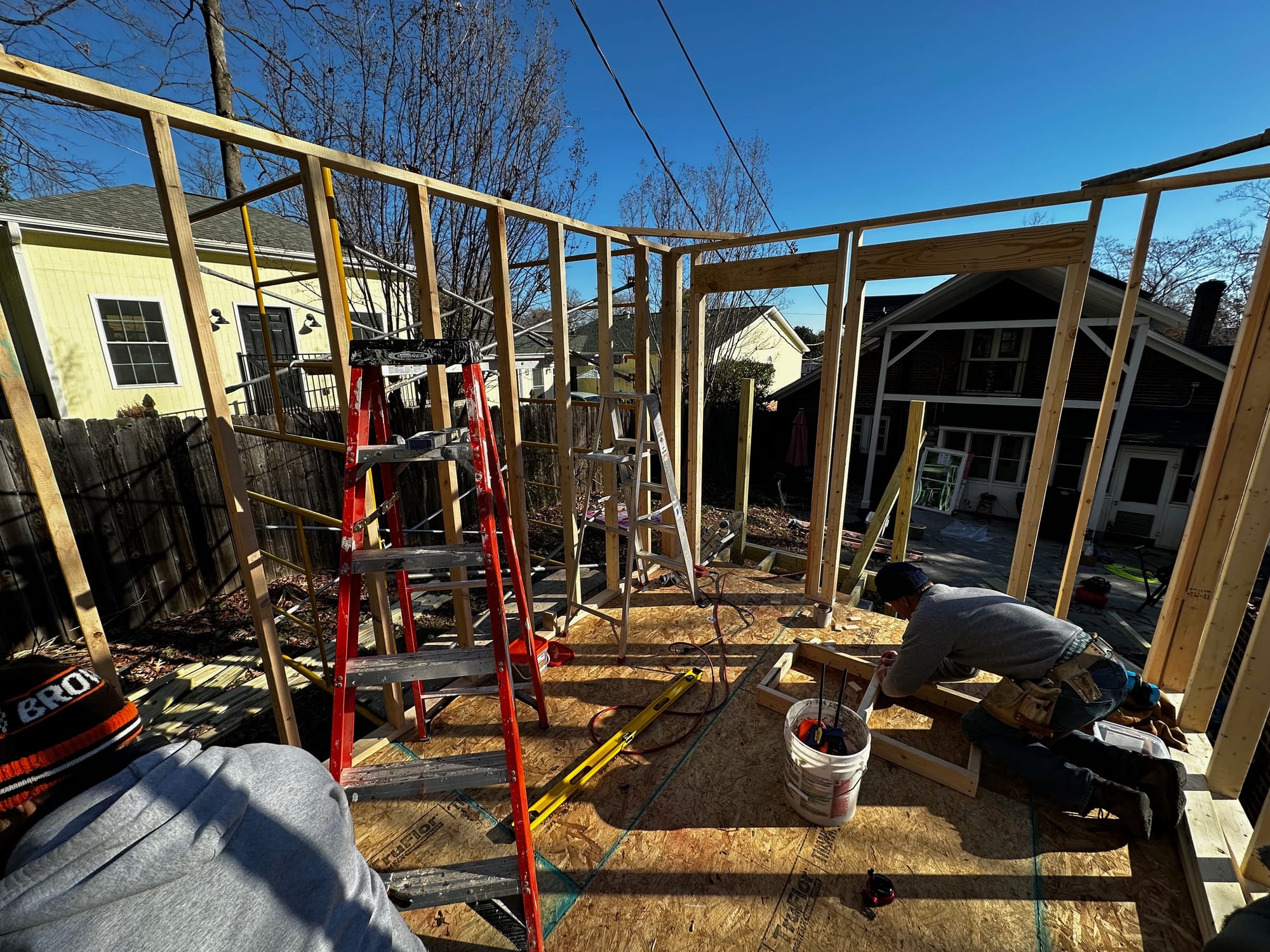
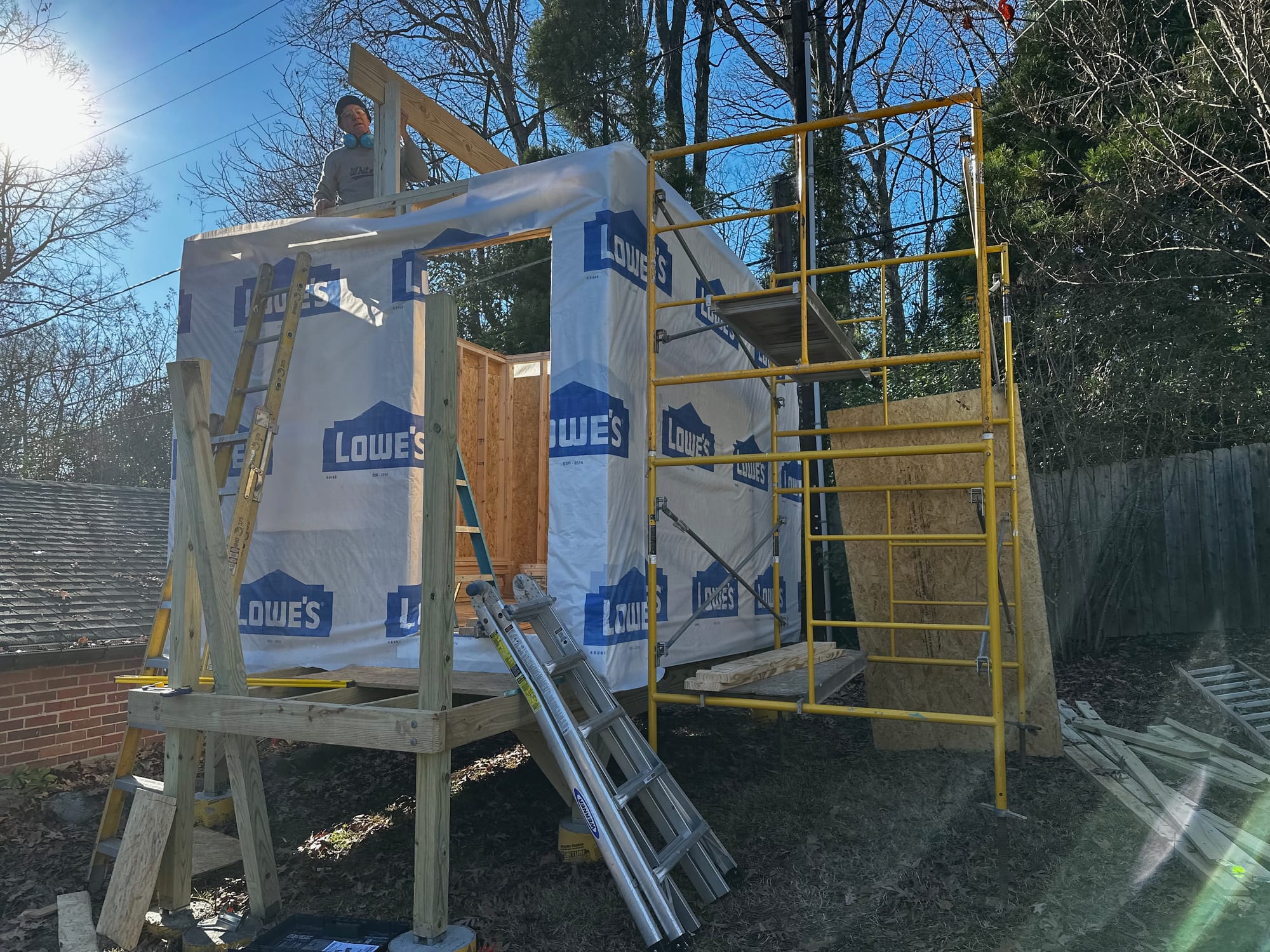
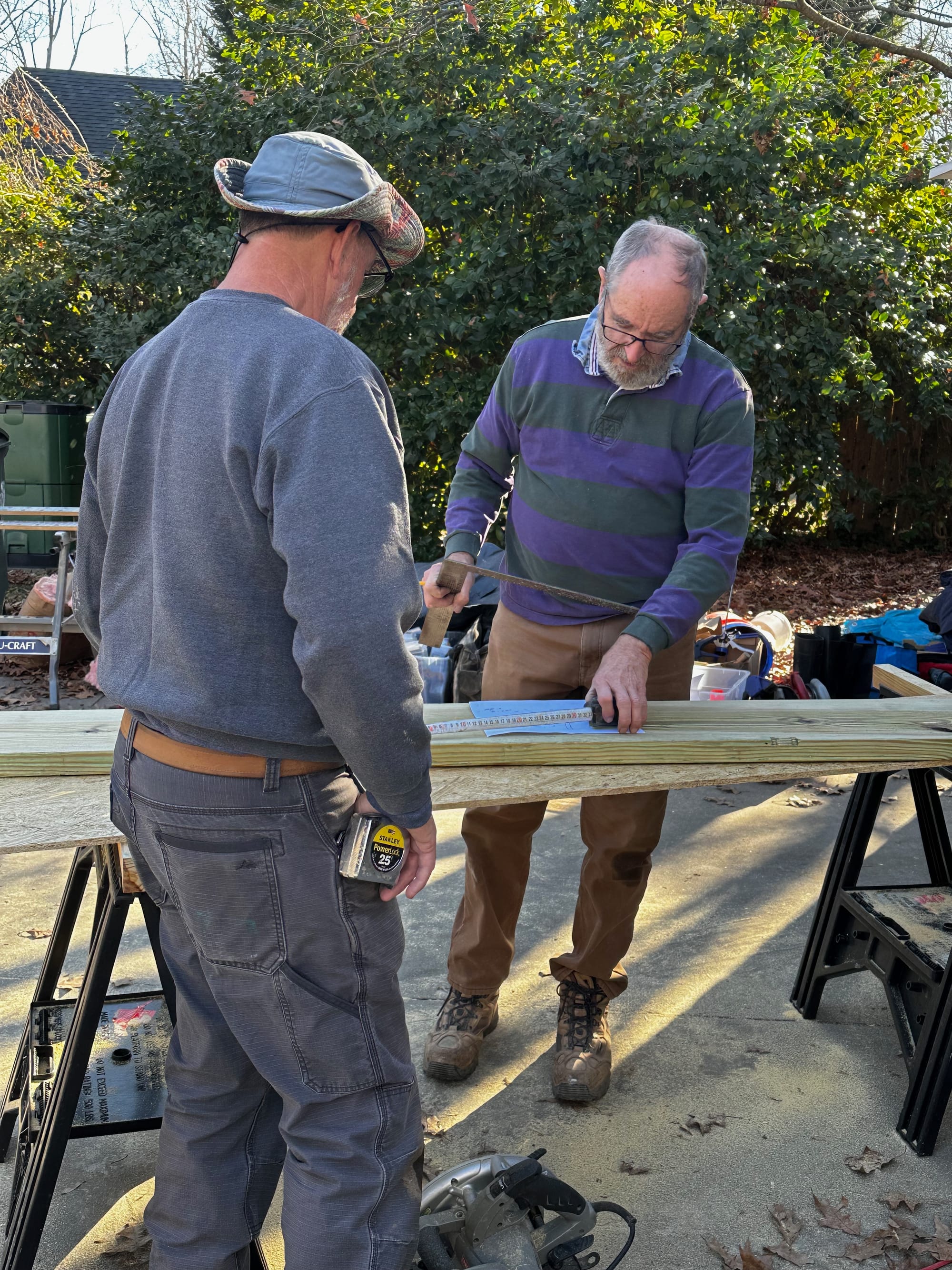
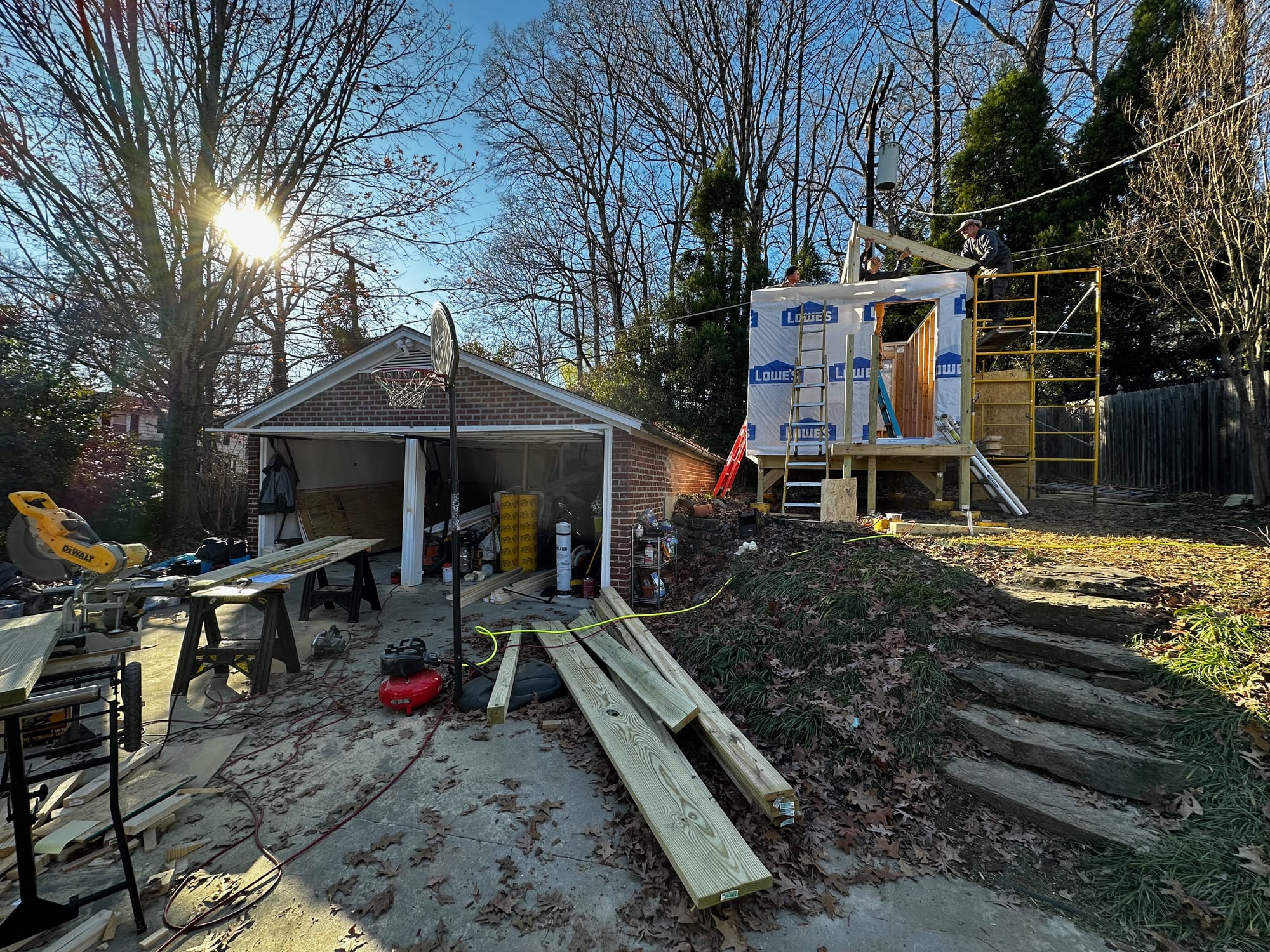
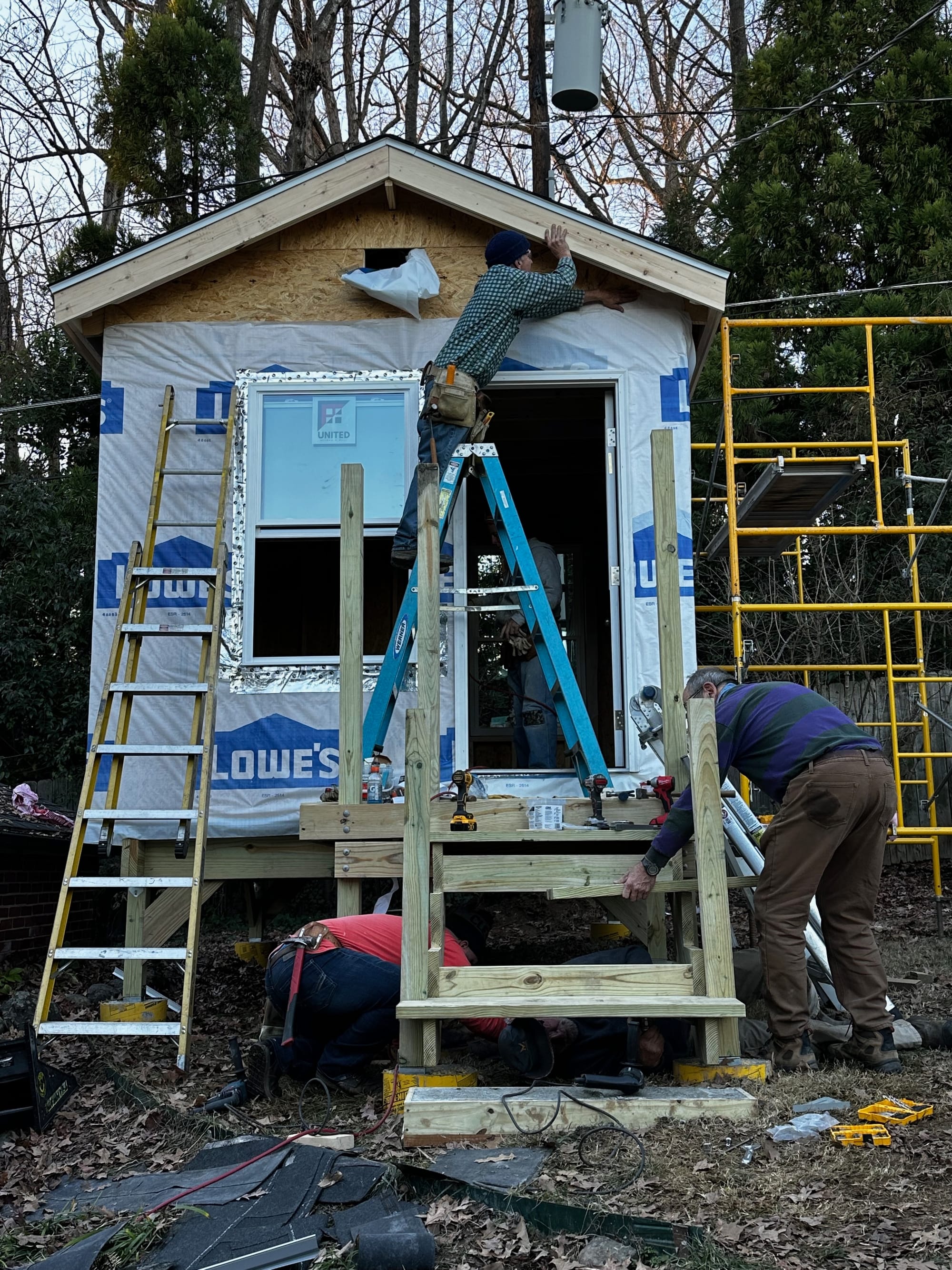
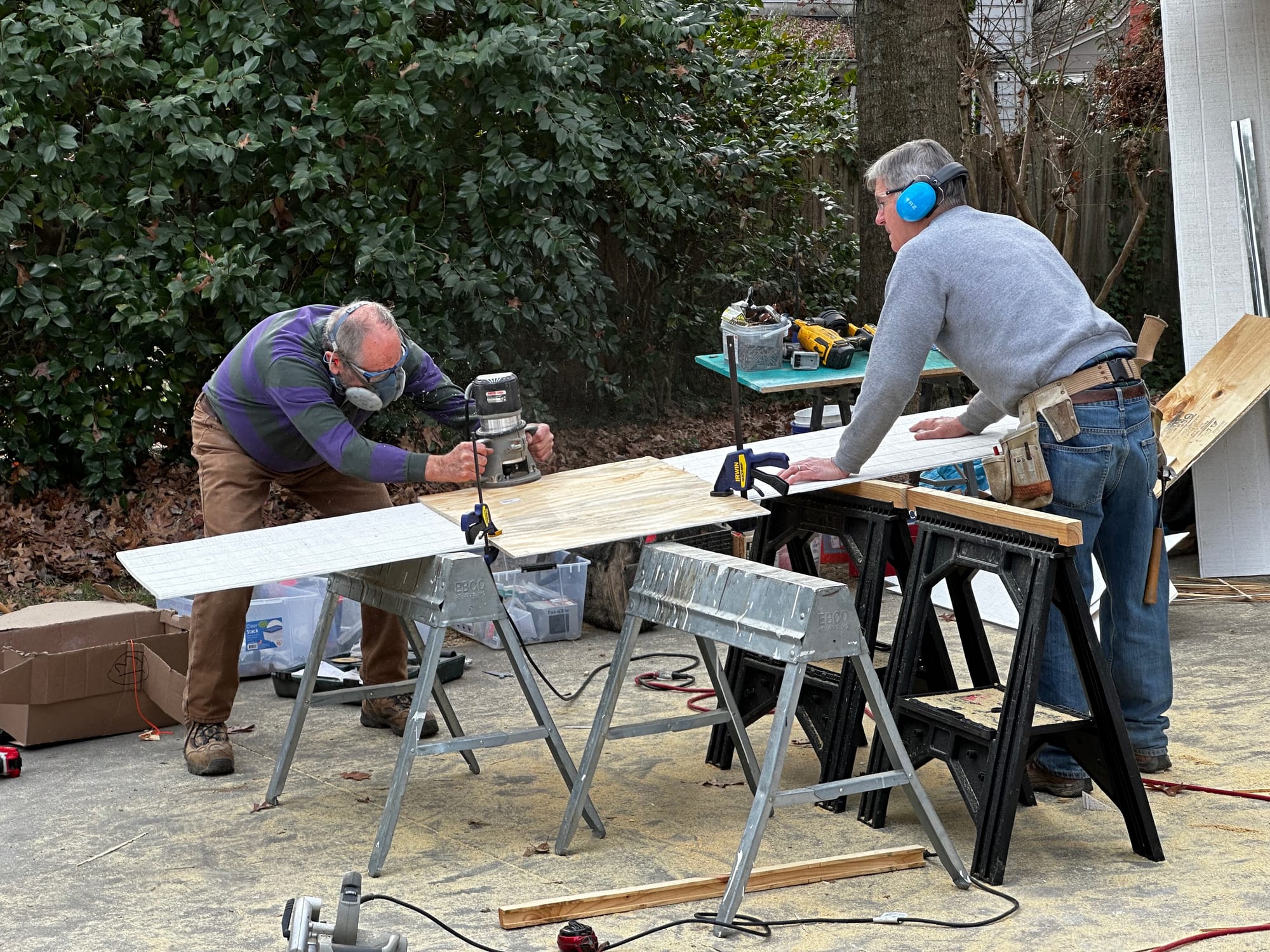
Next the sub-flooring, studs, outside walls, and wrap all went up. This all happened during our 4-day “barn raising,” when we had the full team here. It was very helpful to have so many people with experience building during this part of construction. The bottom row of photos above give you some idea of just how much attention and effort went into making sure everything was right.
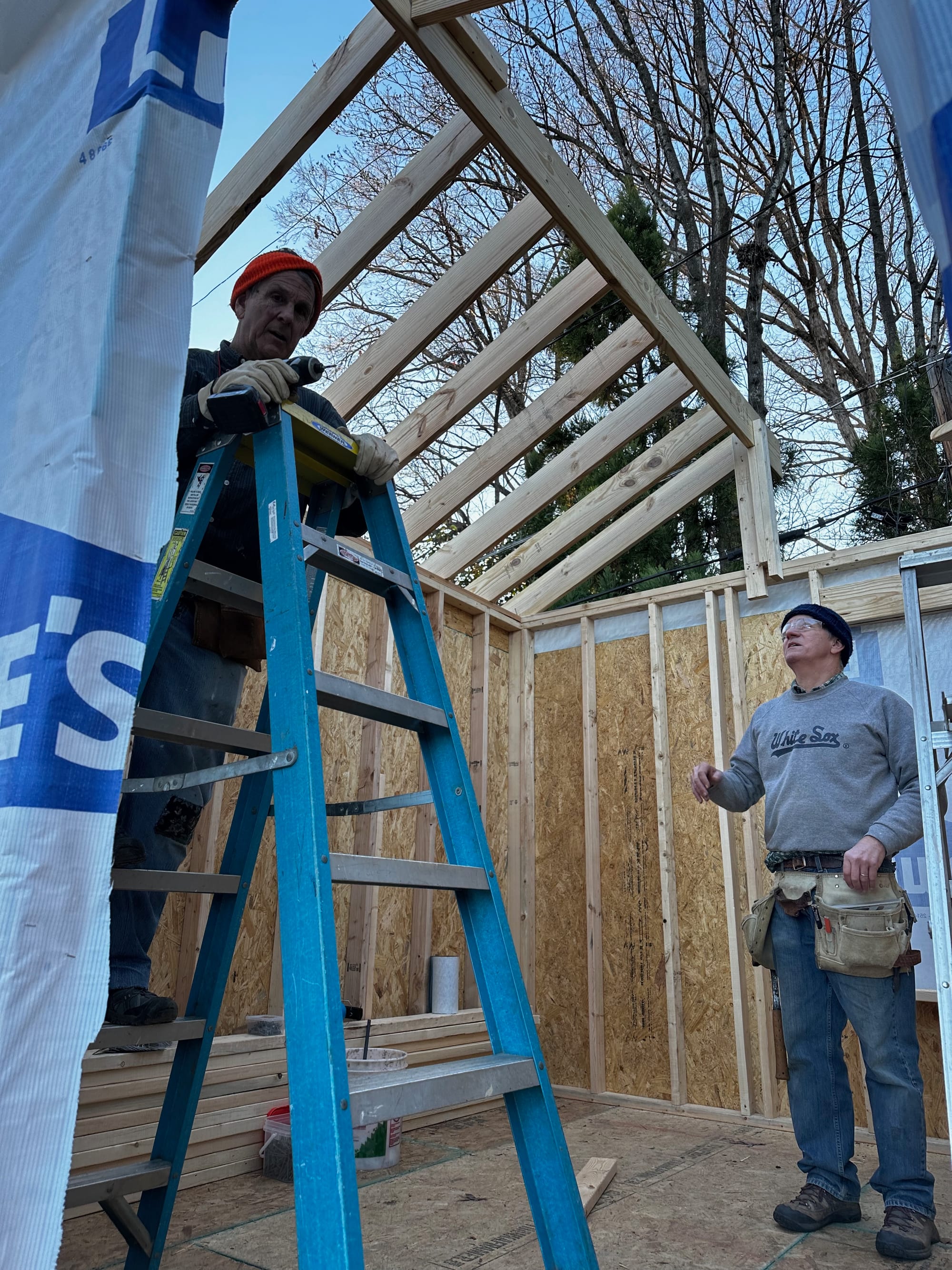
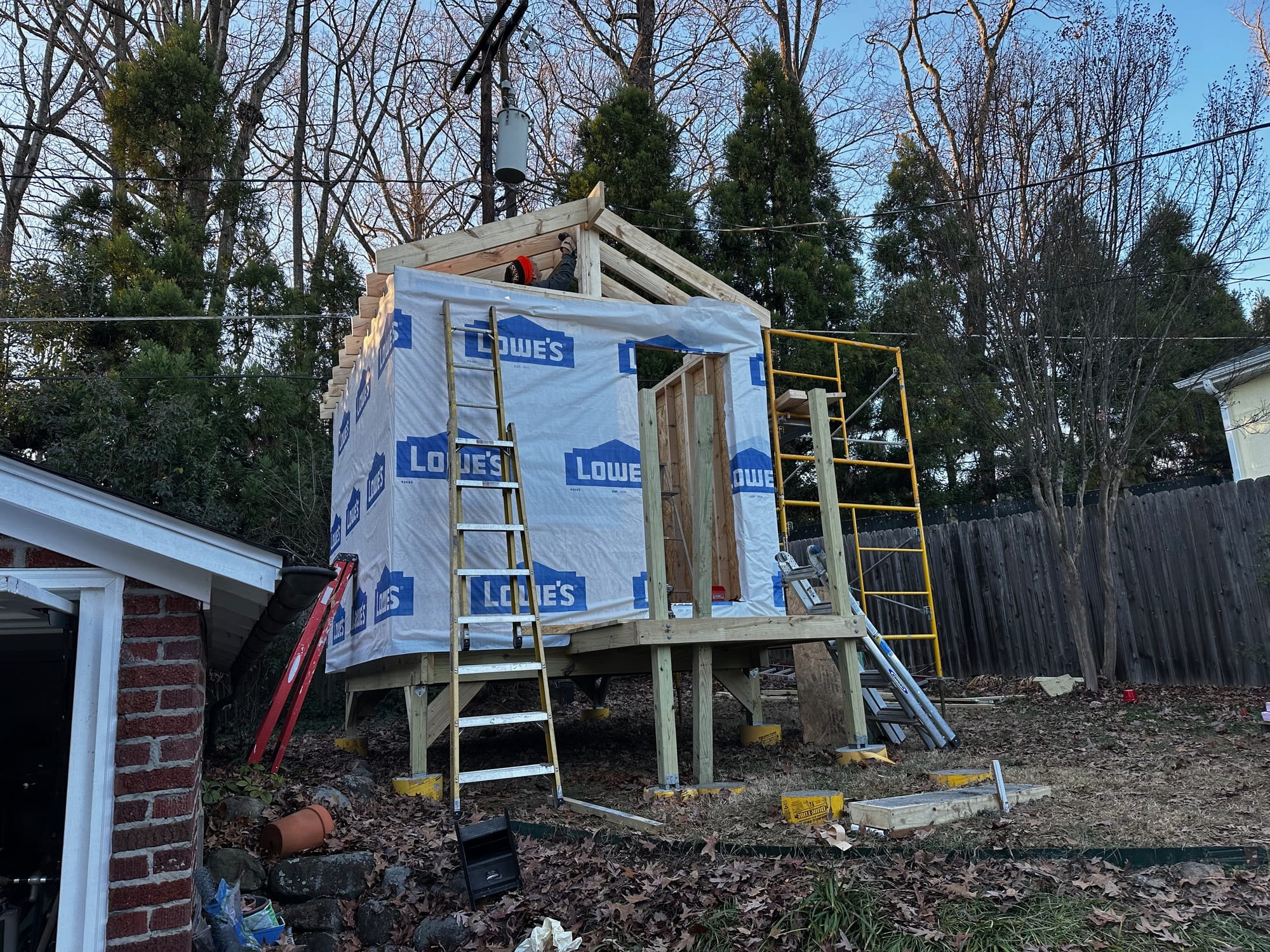
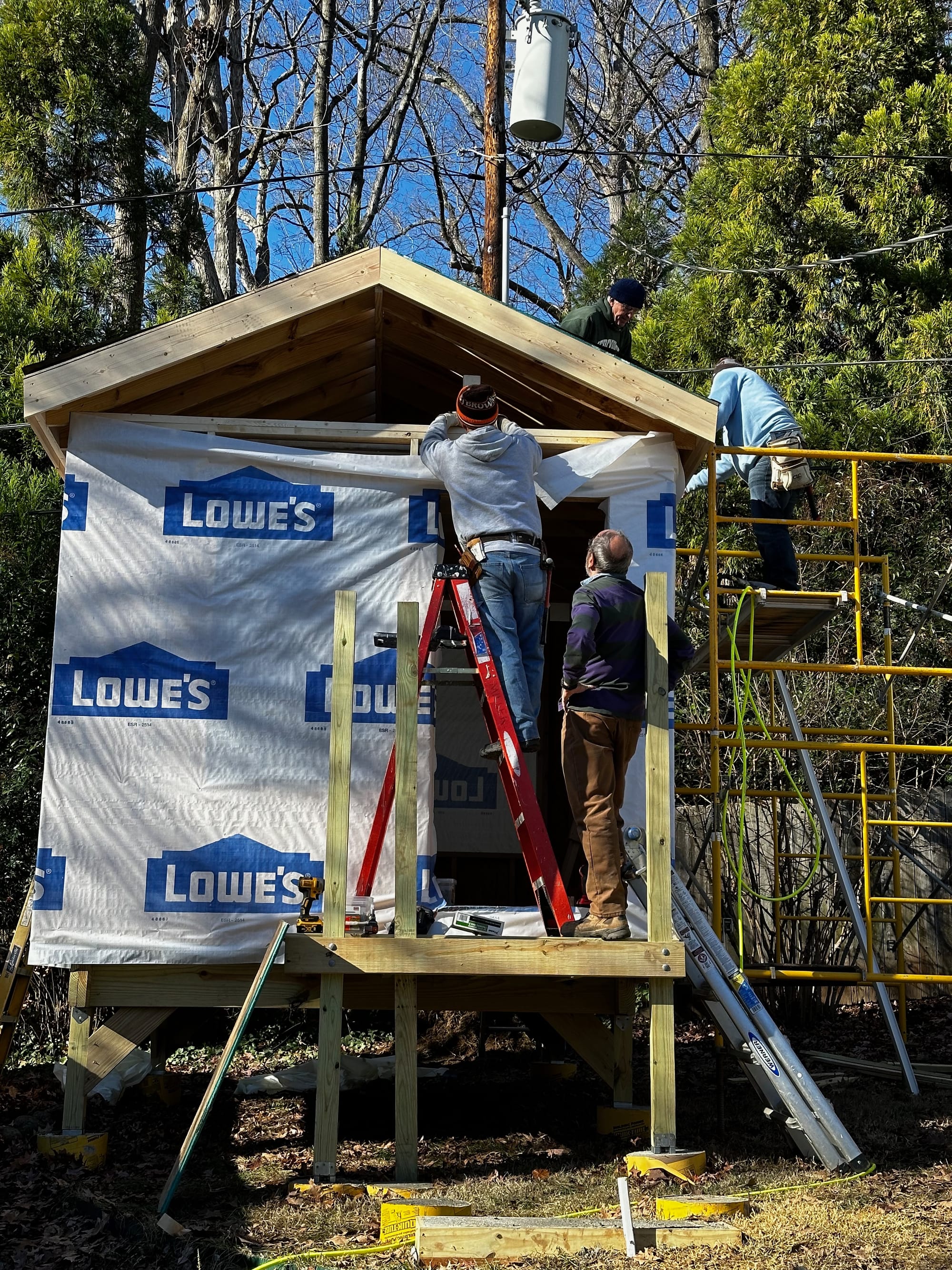
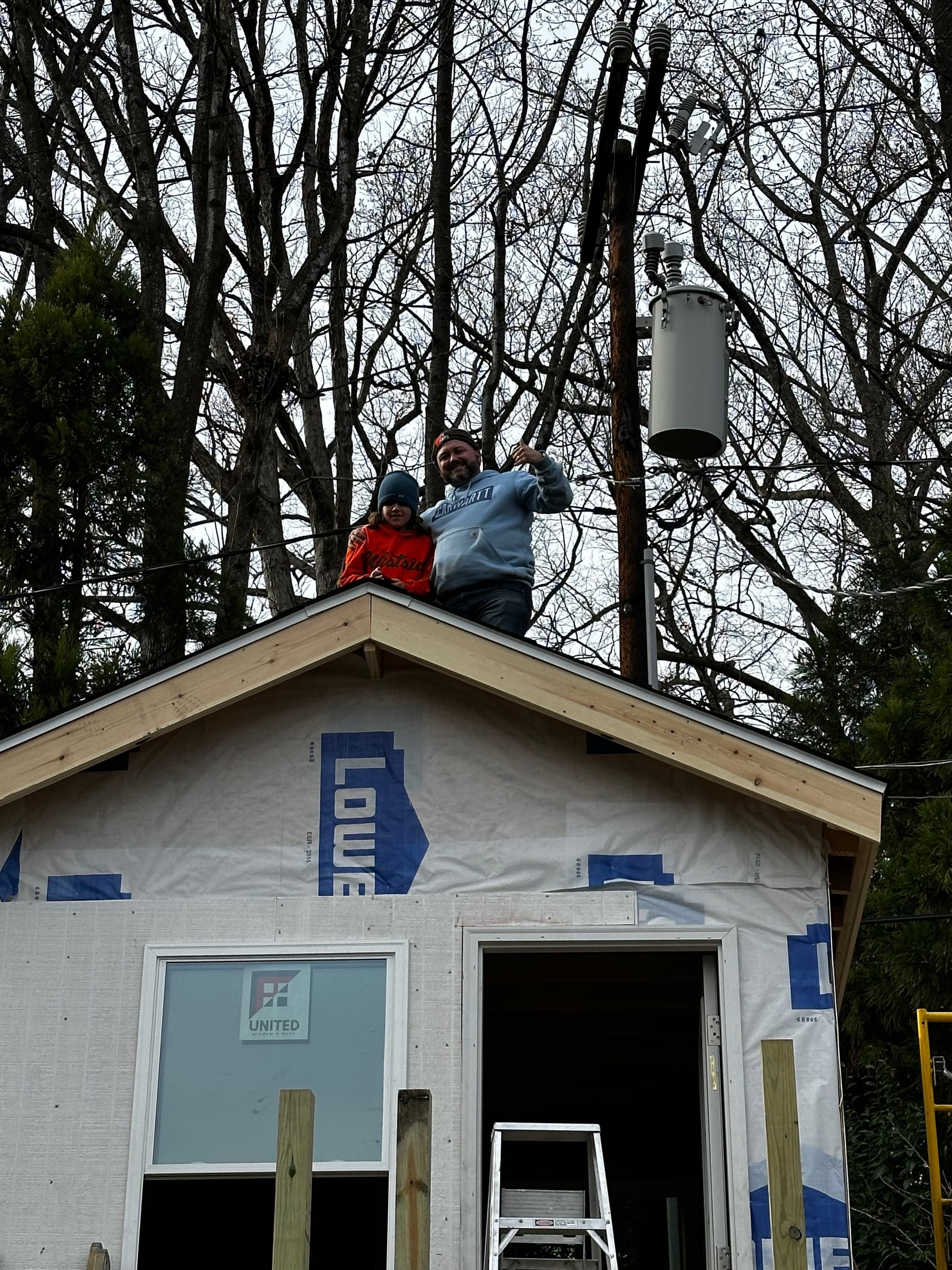
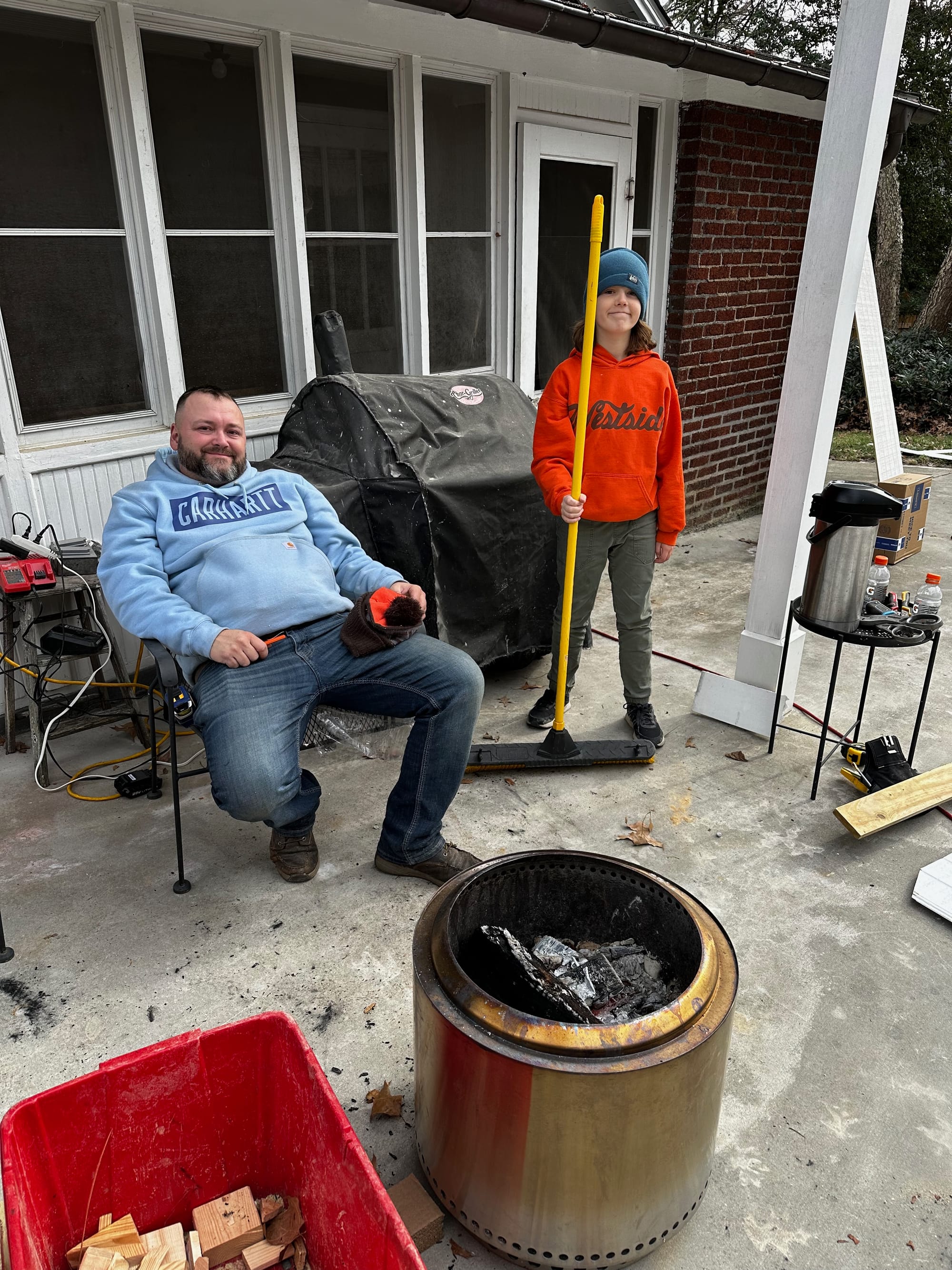
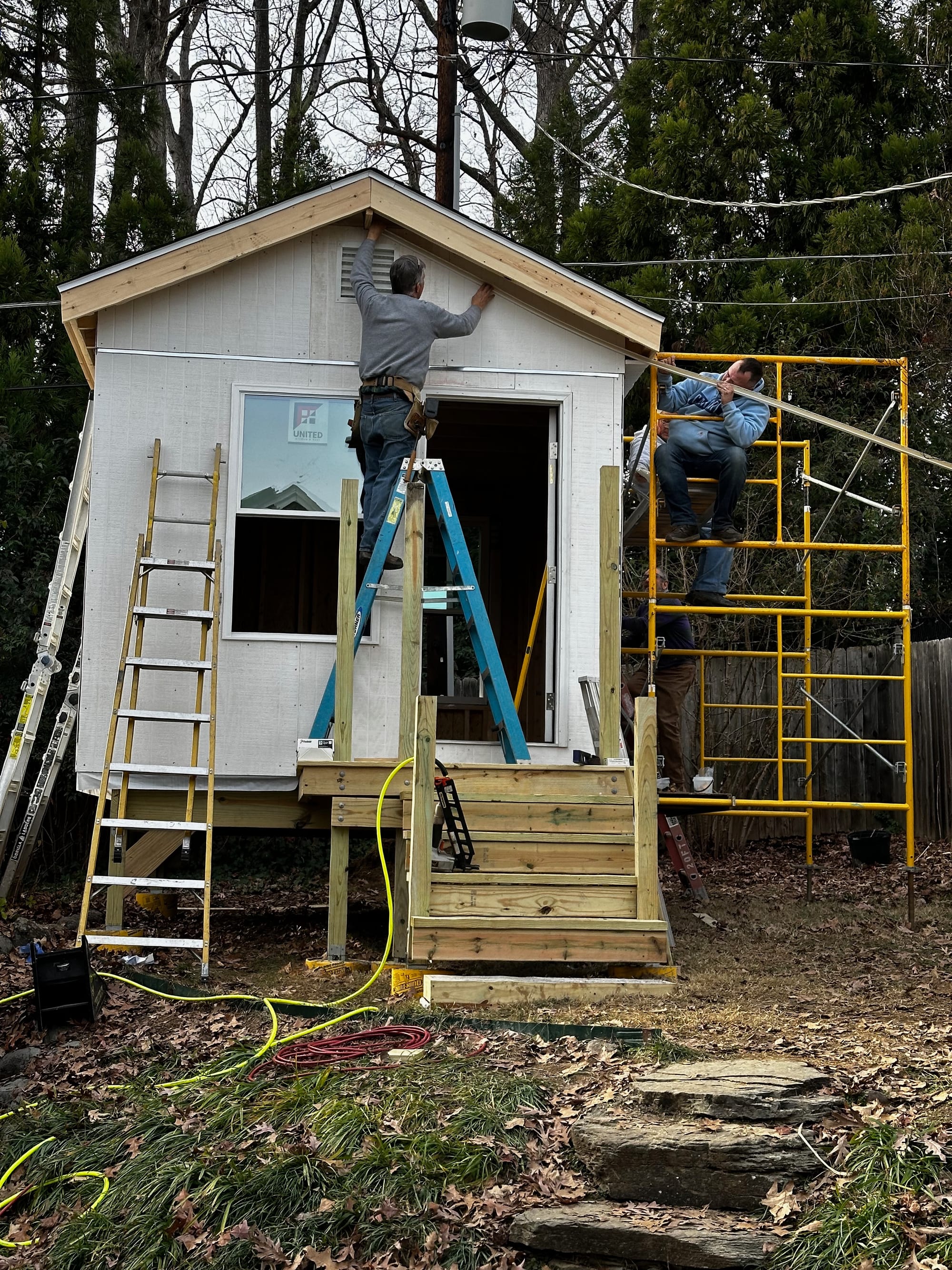
Next was the roof. A very challenging task that was greatly helped by my brother, Beau. He has his own roofing business in Ohio and is a master at what he does. I can’t imagine what we would have done without his help. C. enjoyed helping his uncle out, especially when it meant getting up on the roof.
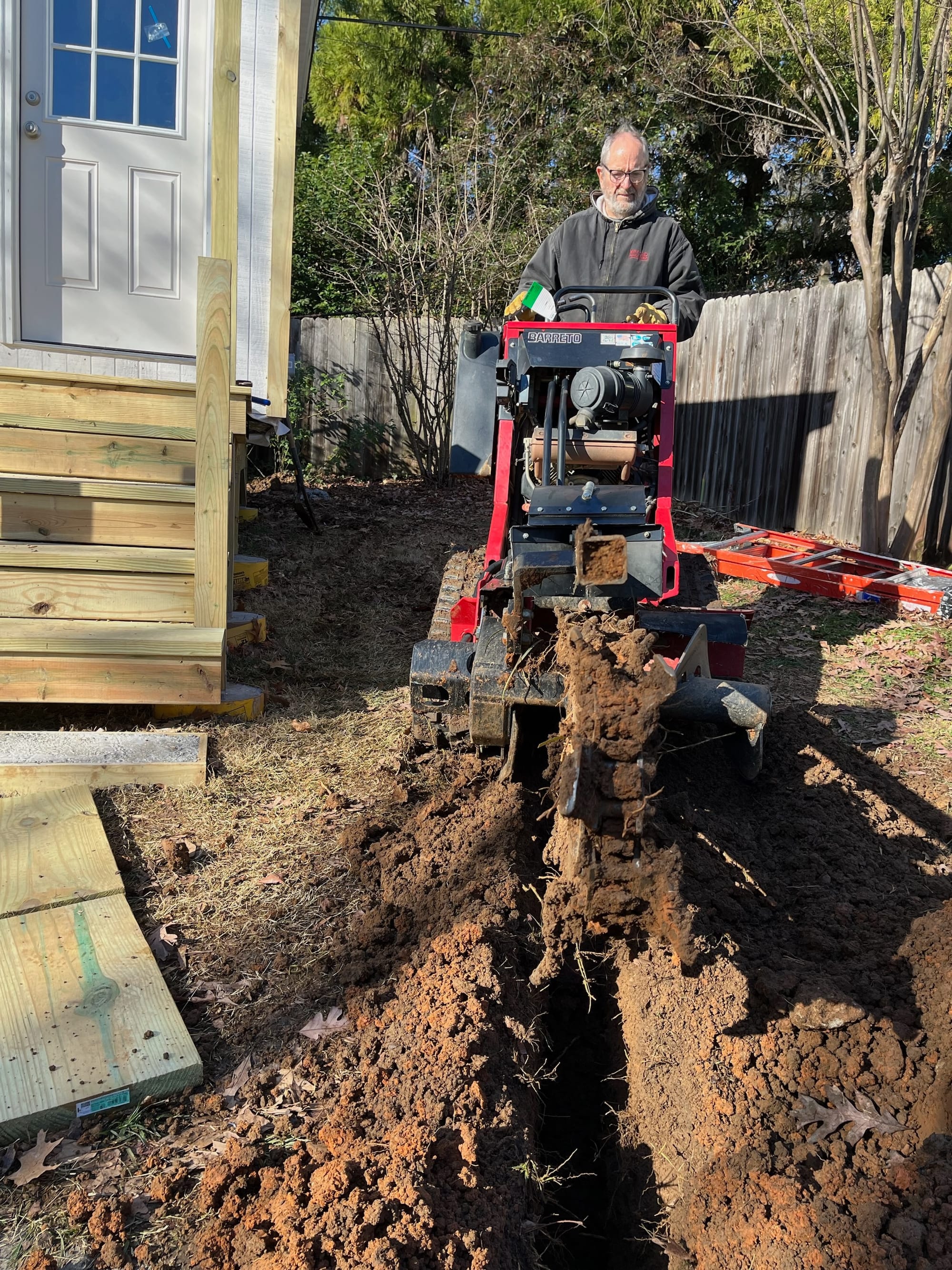
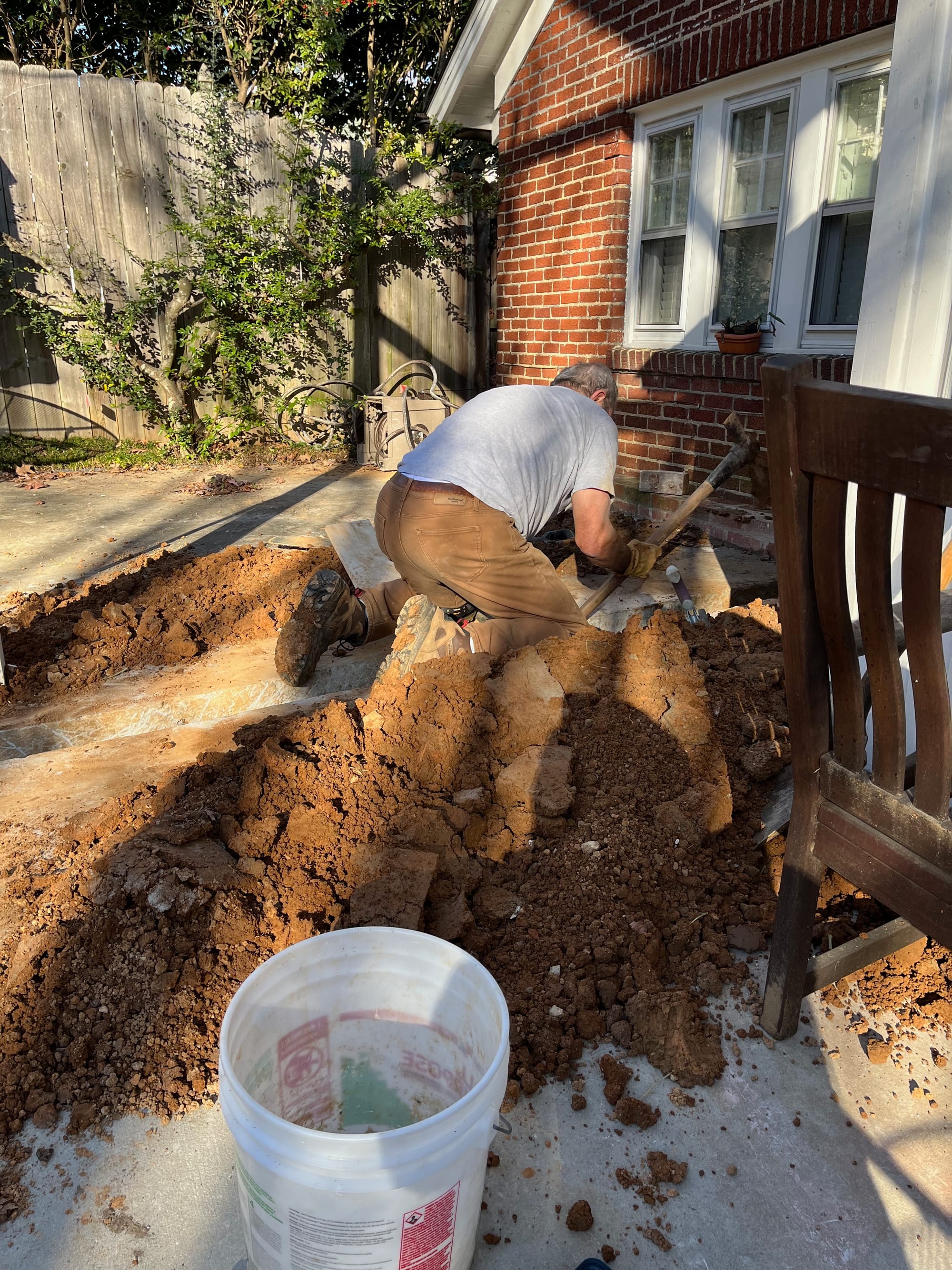
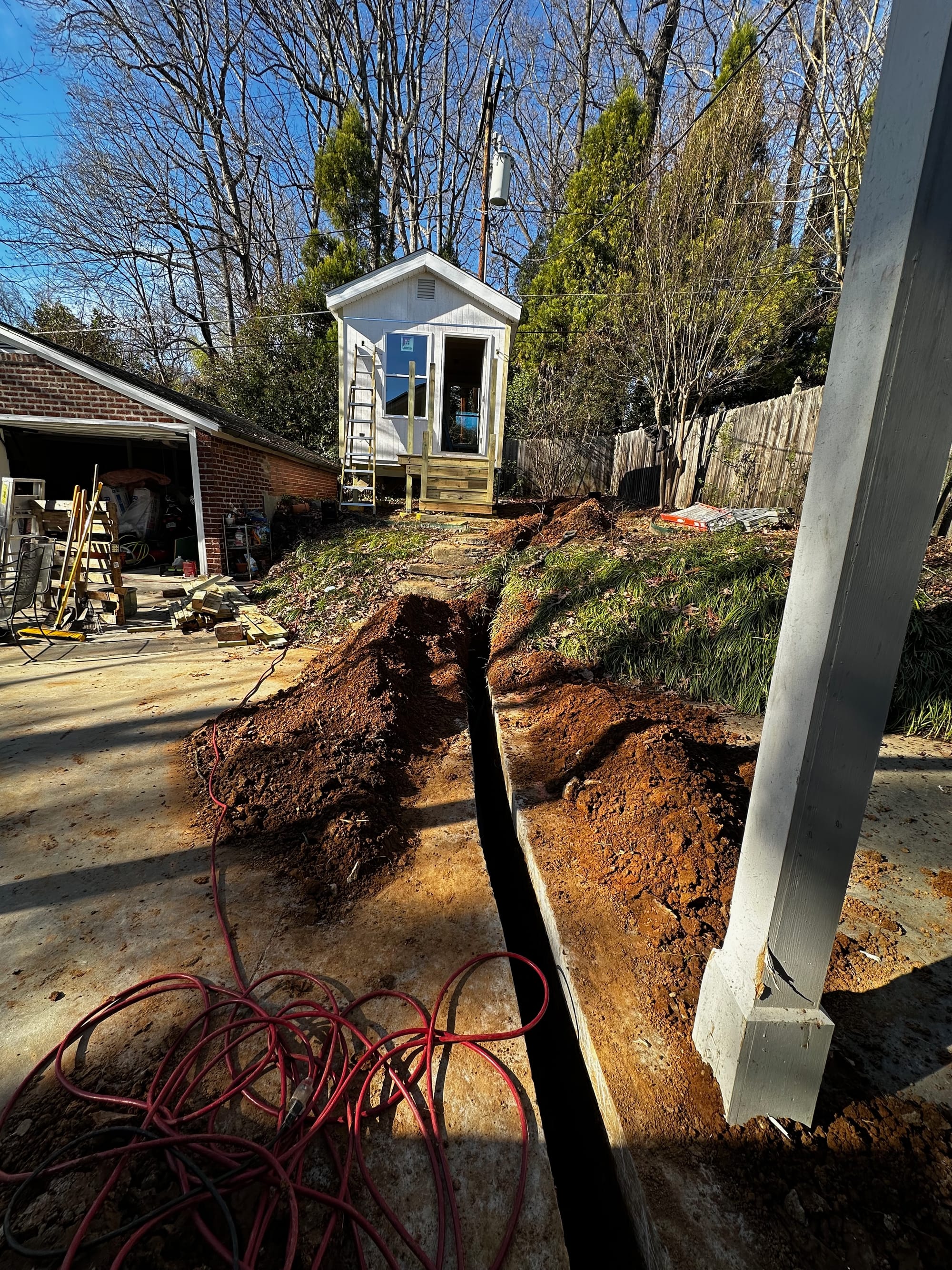
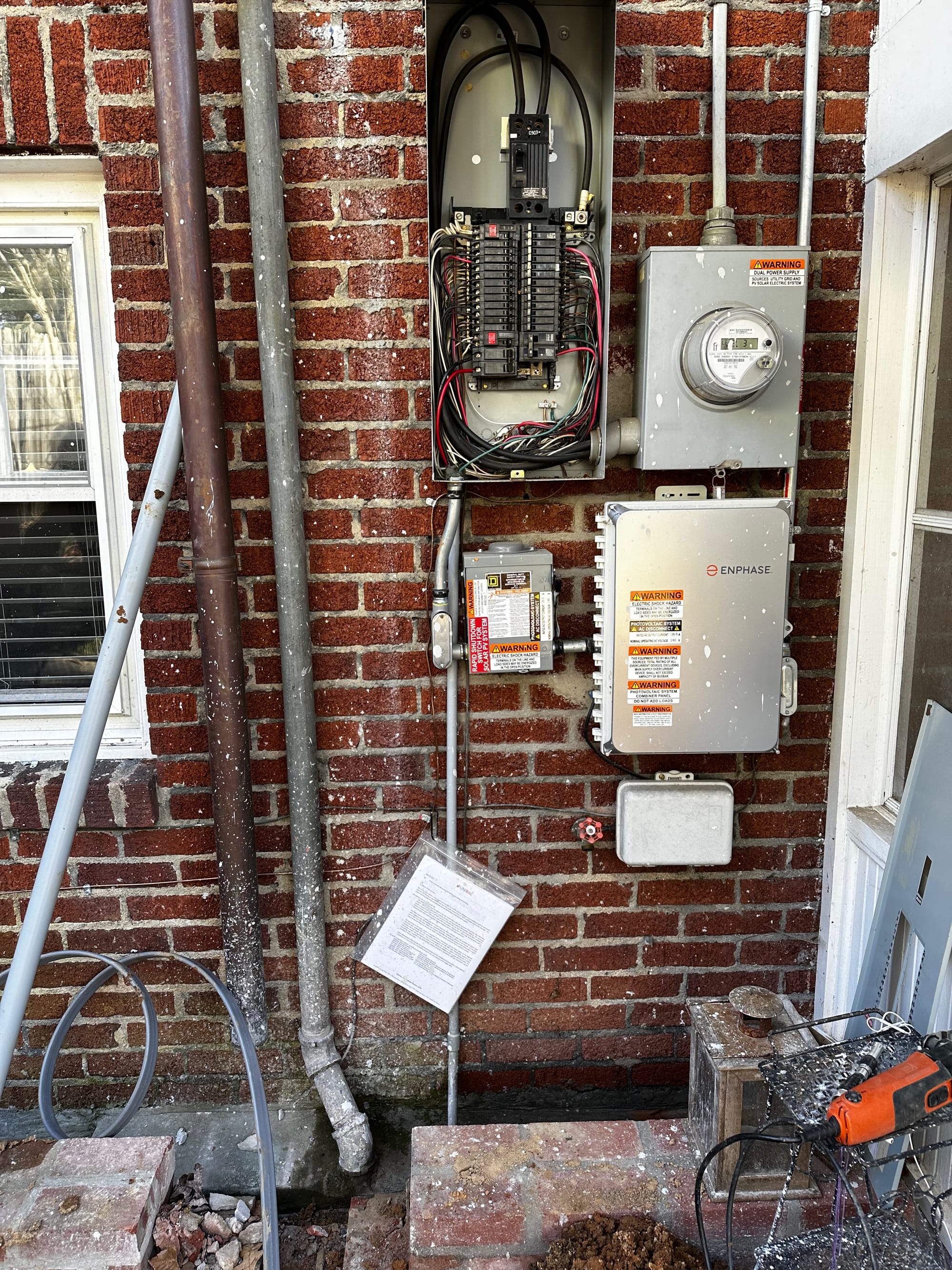
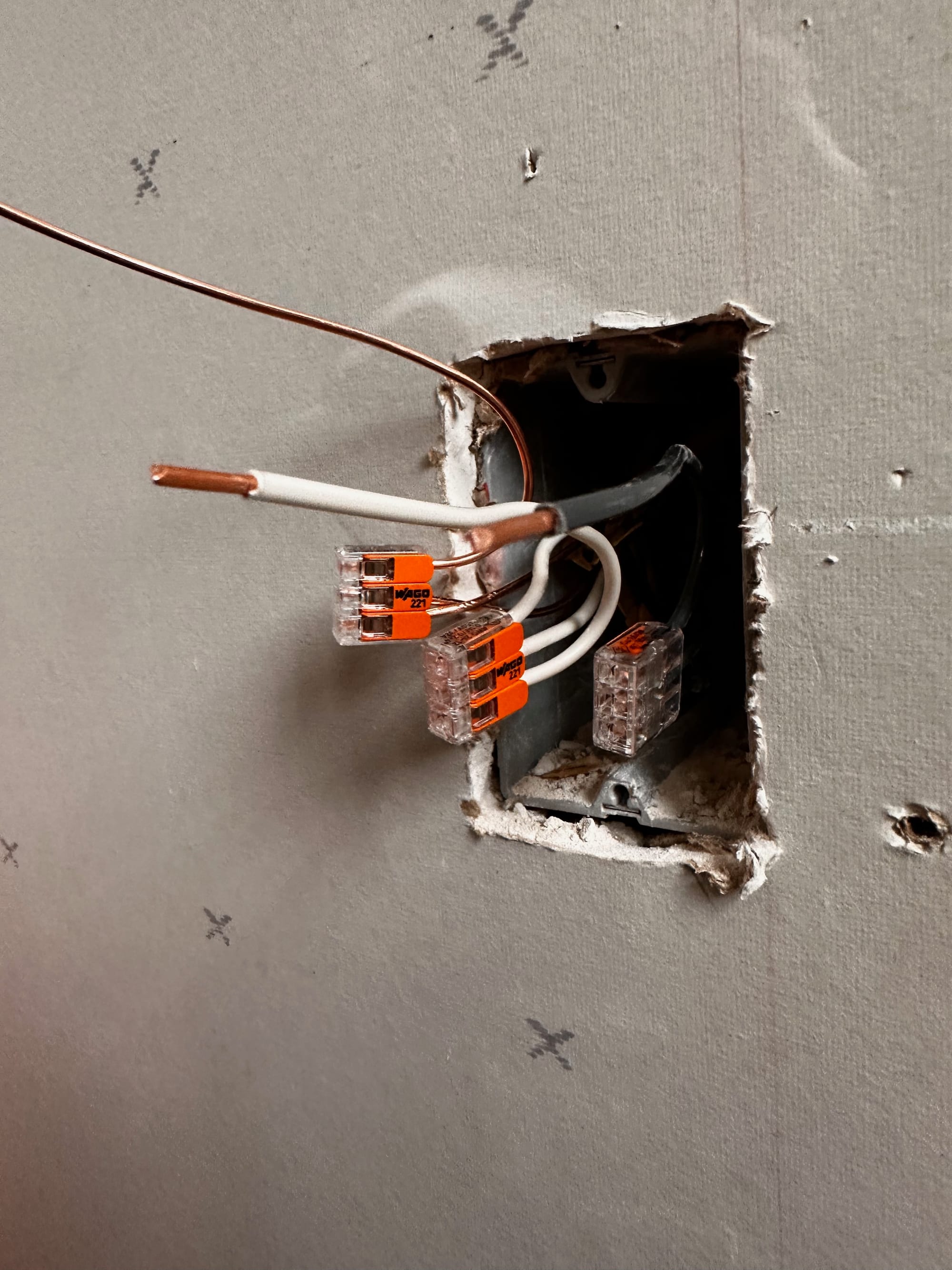
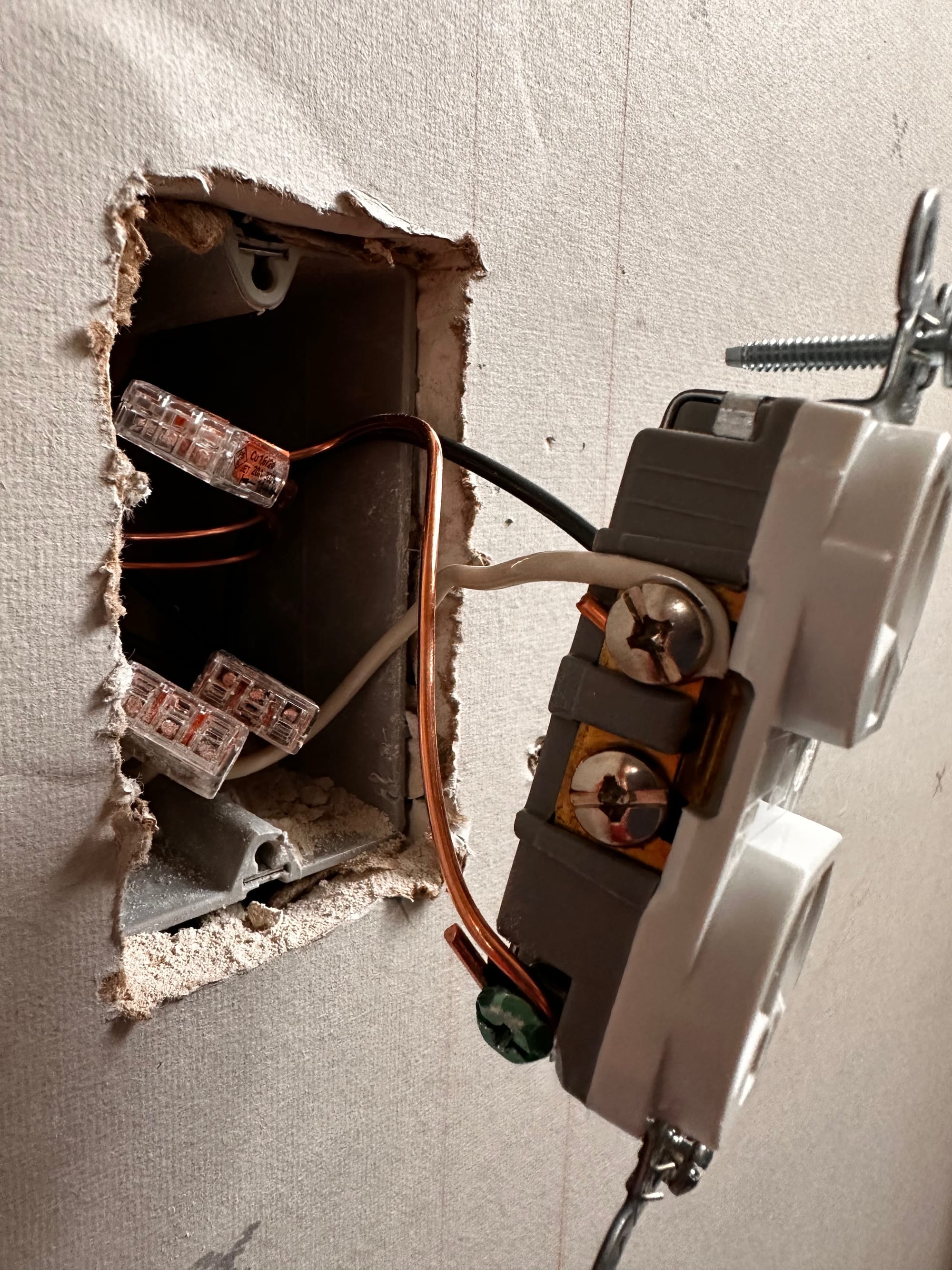
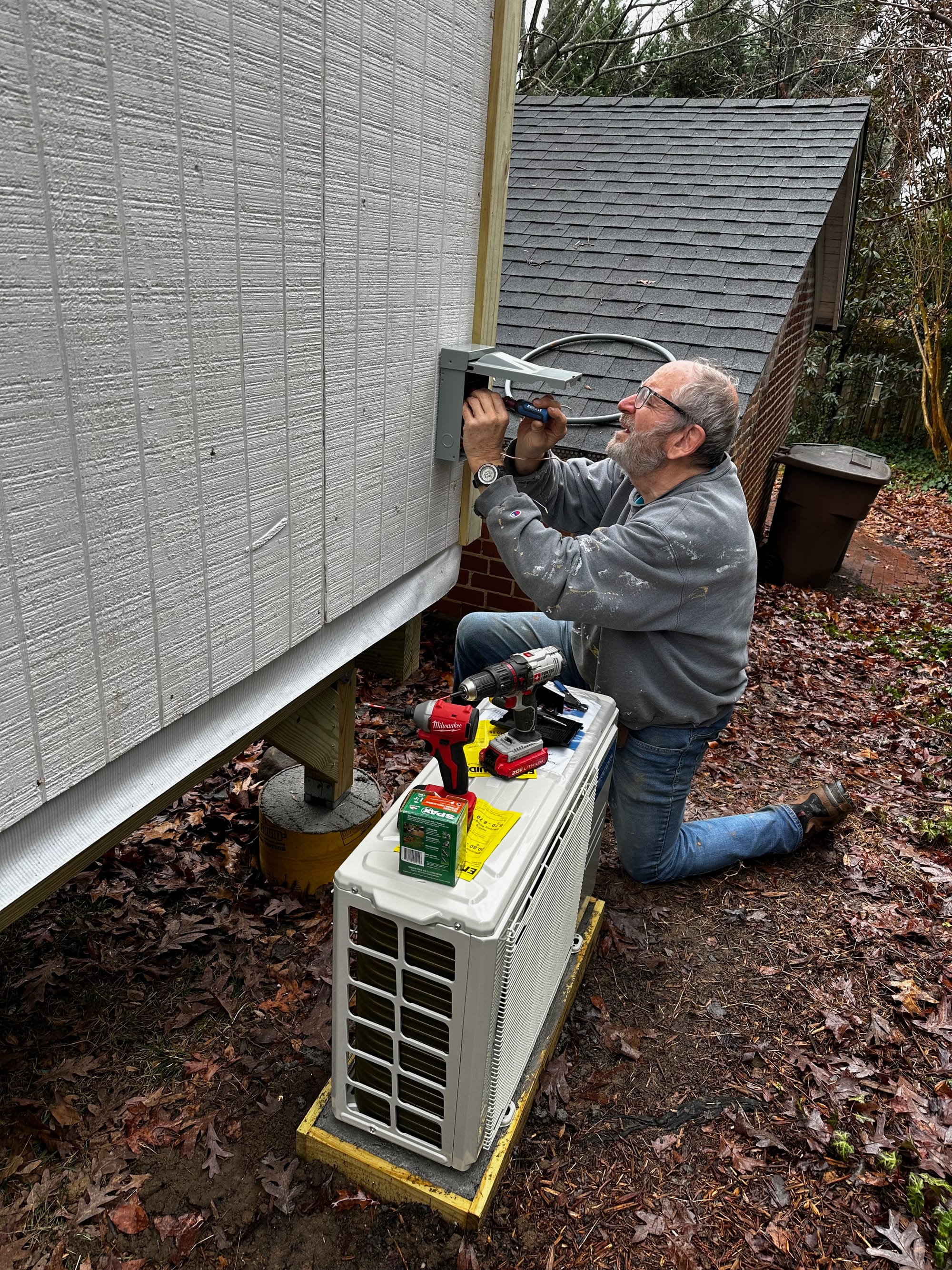
Meanwhile, digging the trench from the house to the studio, tearing up the concrete in the driveway, and doing all the electrical work was very time consuming (and the trench digging was very hard work!). Once the electrical line was laid between house and back house, we moved to the inside electrical. I was surprised that I enjoyed doing the wiring inside the studio so much. I took a few photos of my handiwork on those outlets. Check them out!
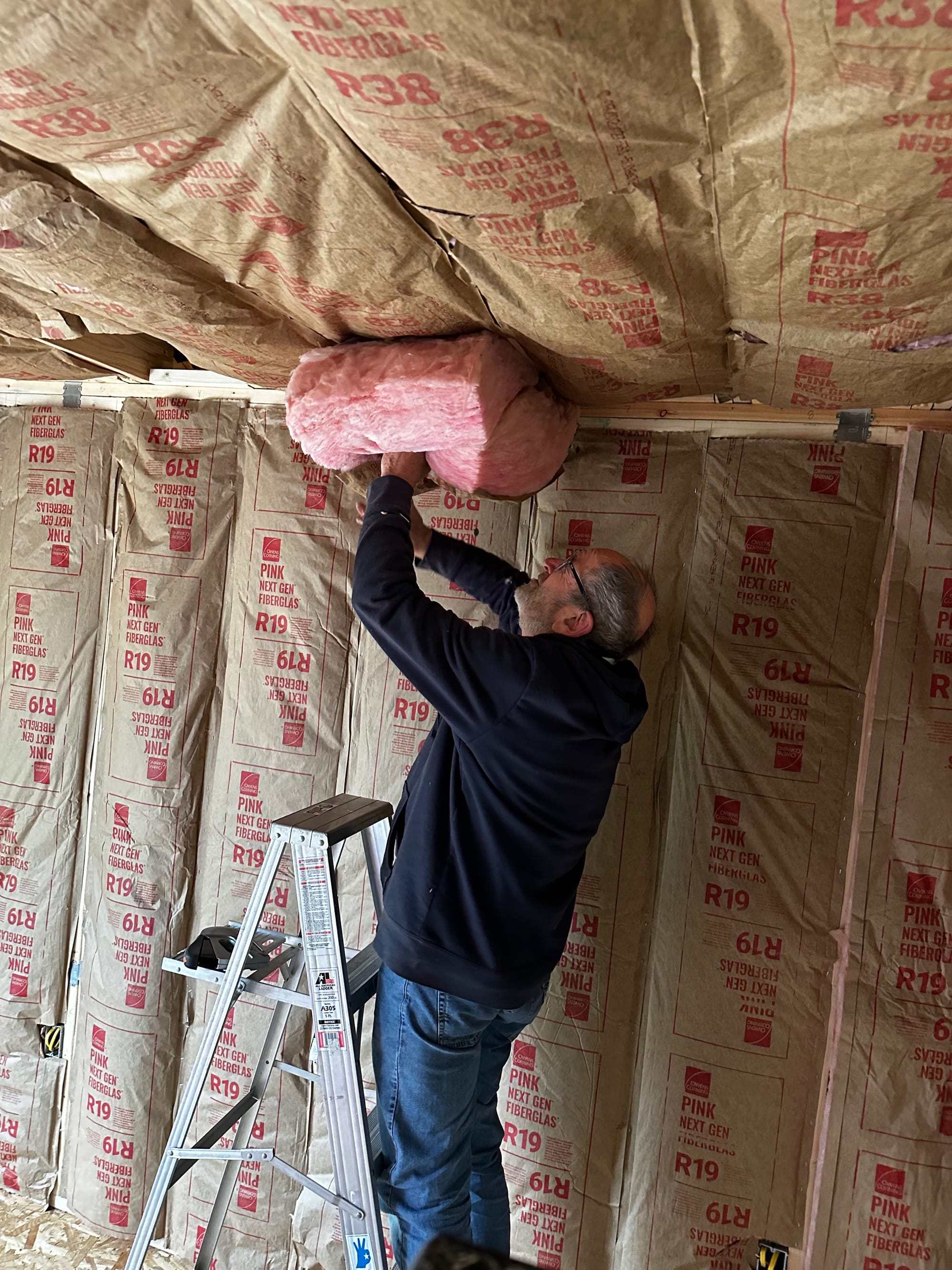
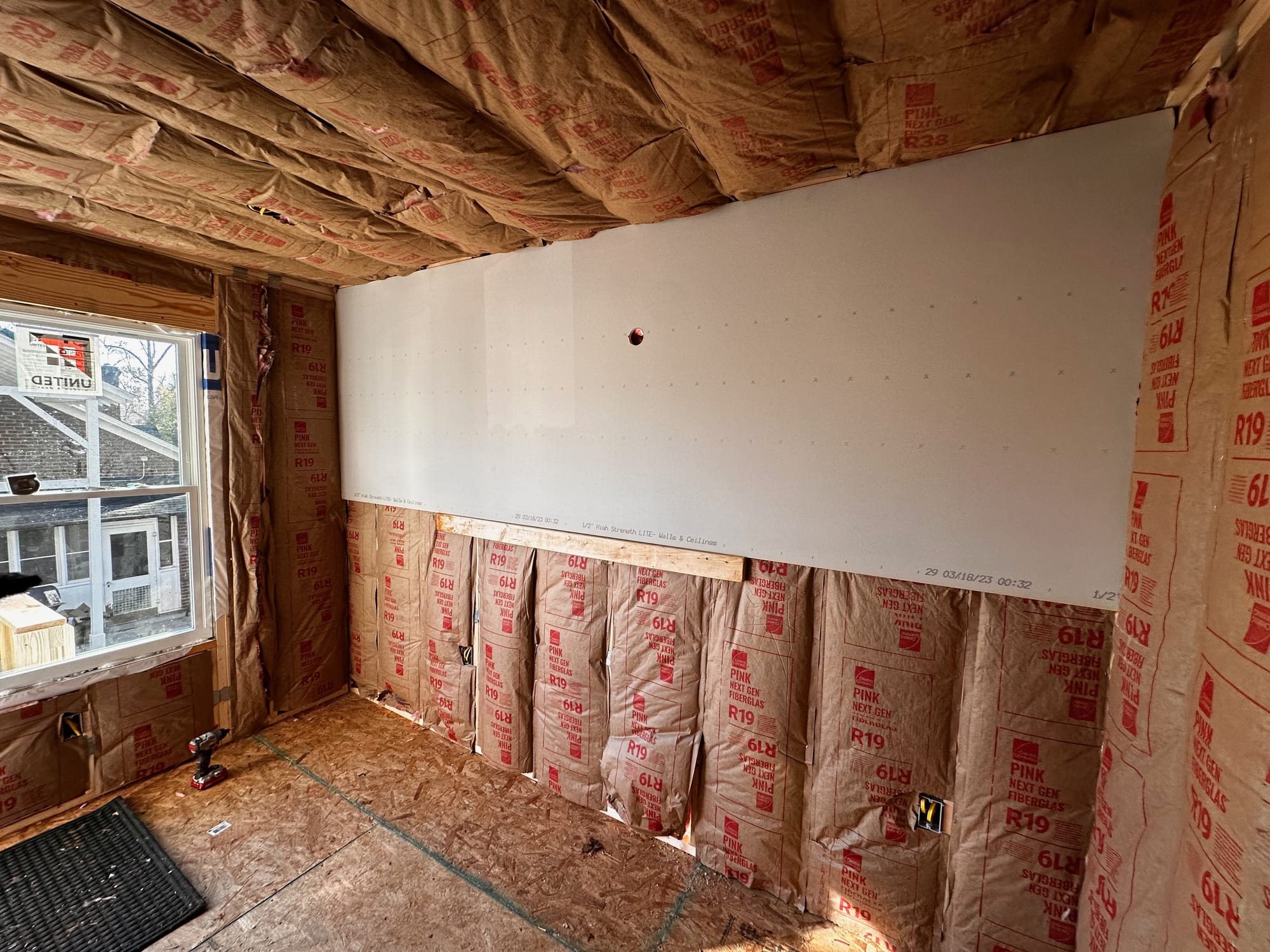
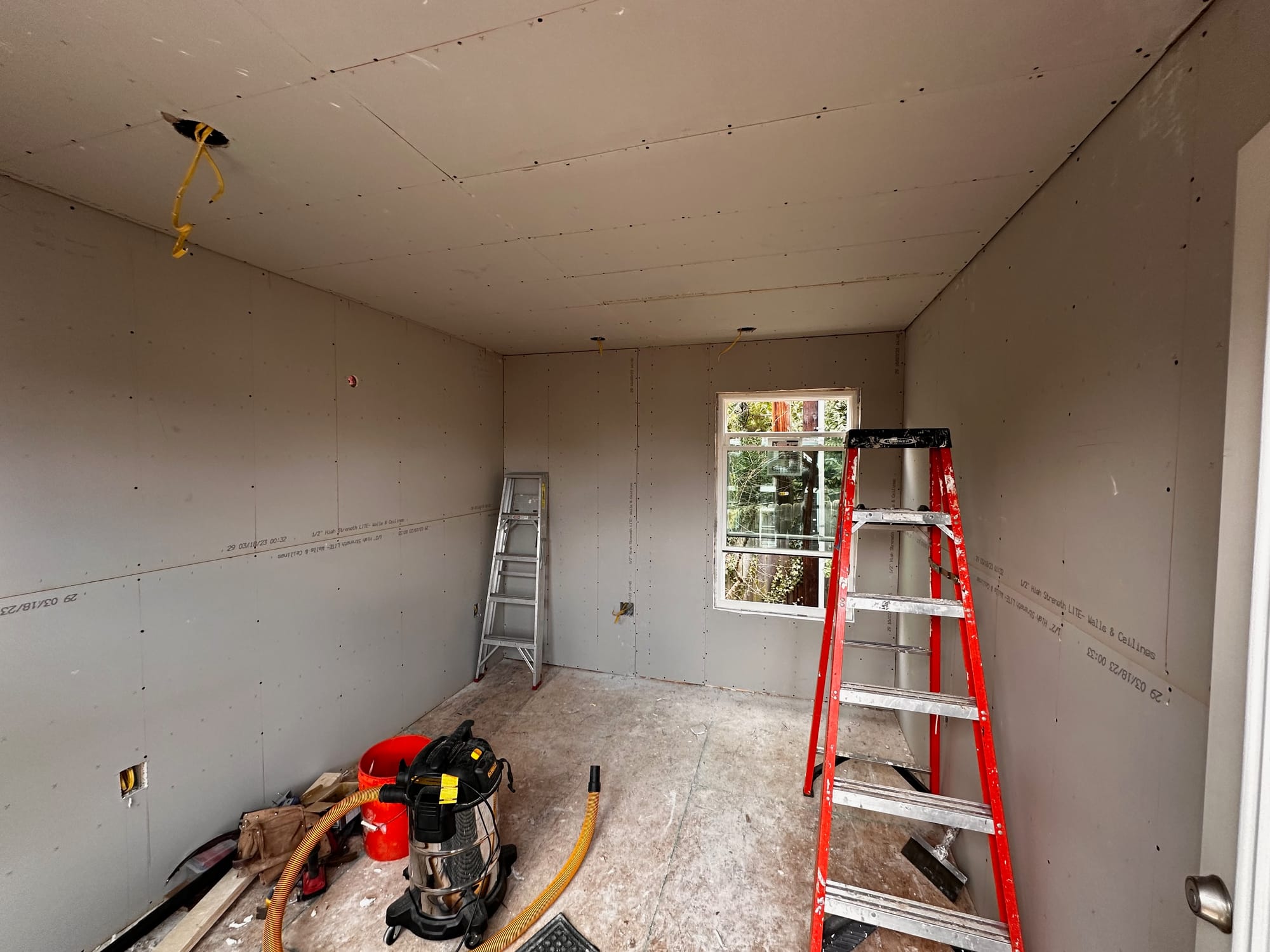
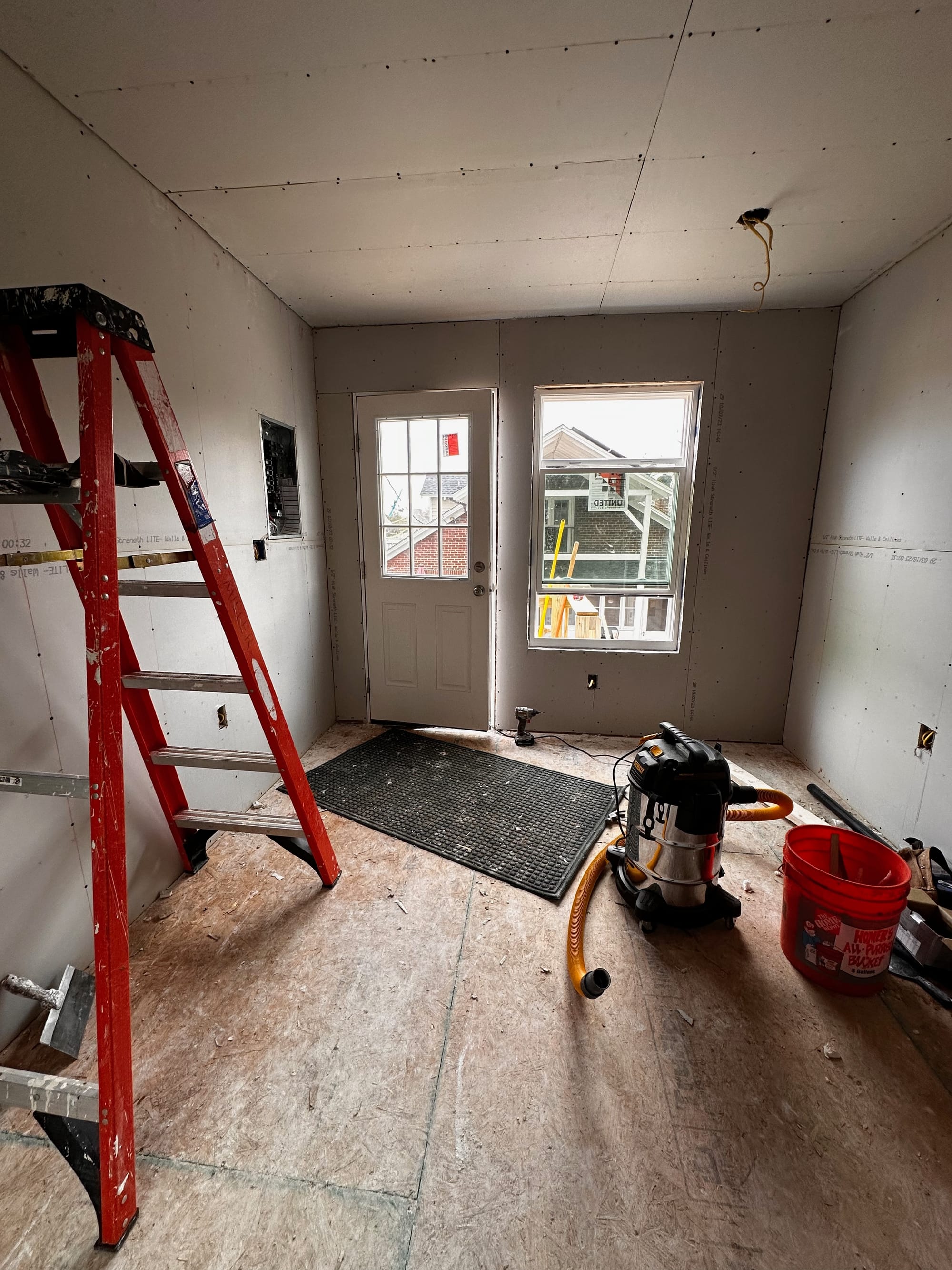
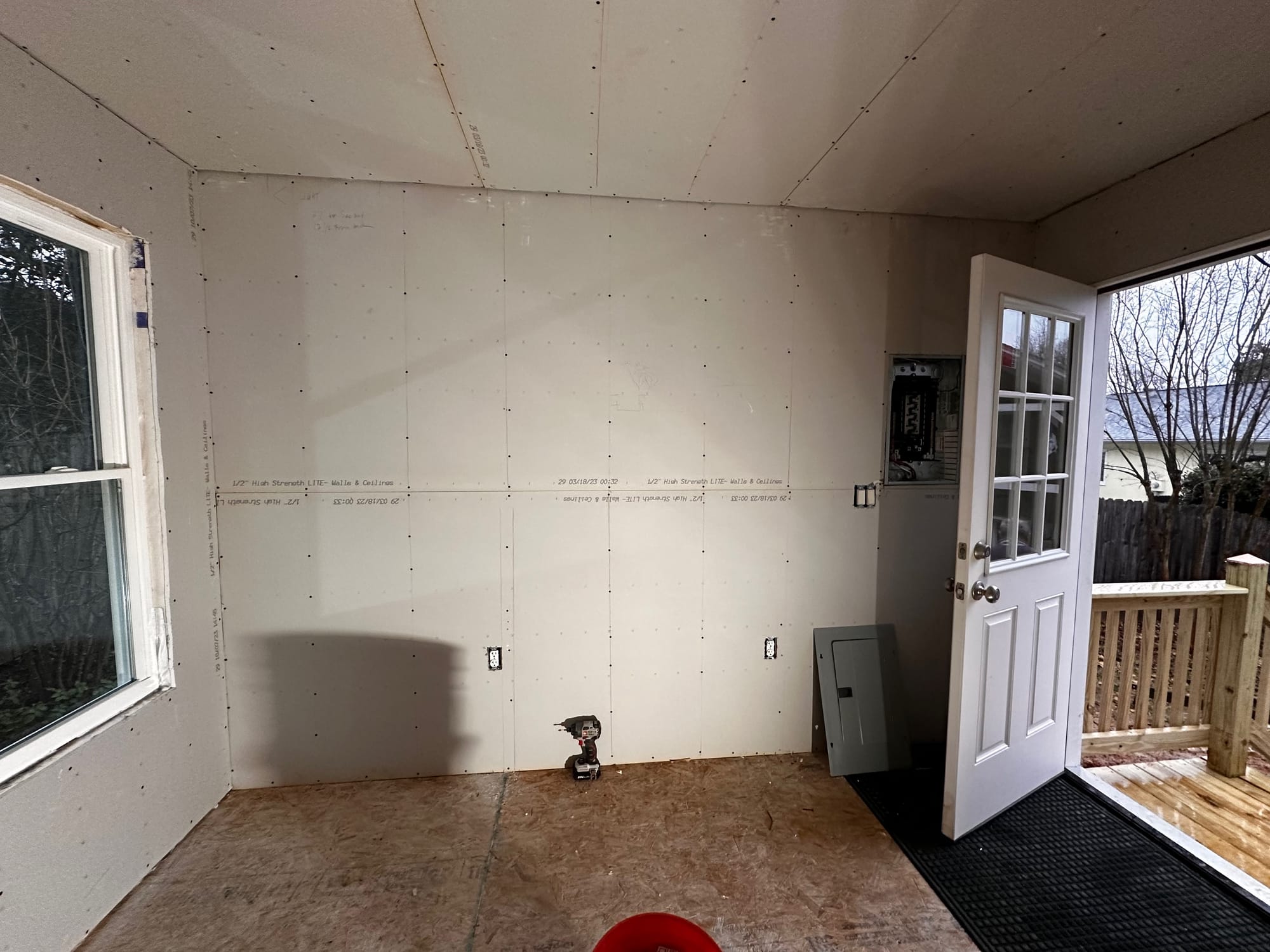
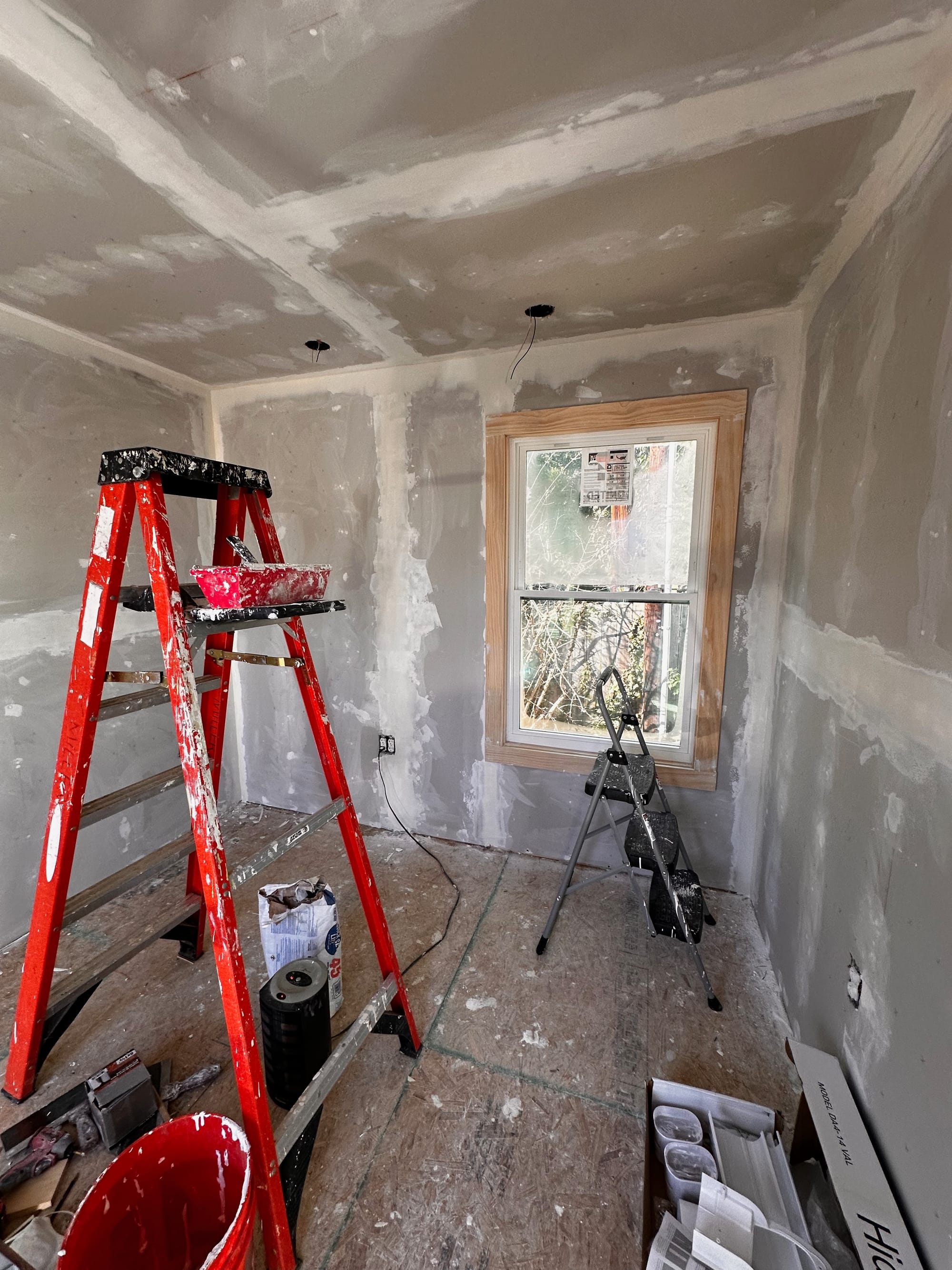
Next was installing insulation and the wall-board. The wall-board was one of the hardest parts to do and do well. But we eventually, it all came together. It was here that I began to question what and why we were doing this.
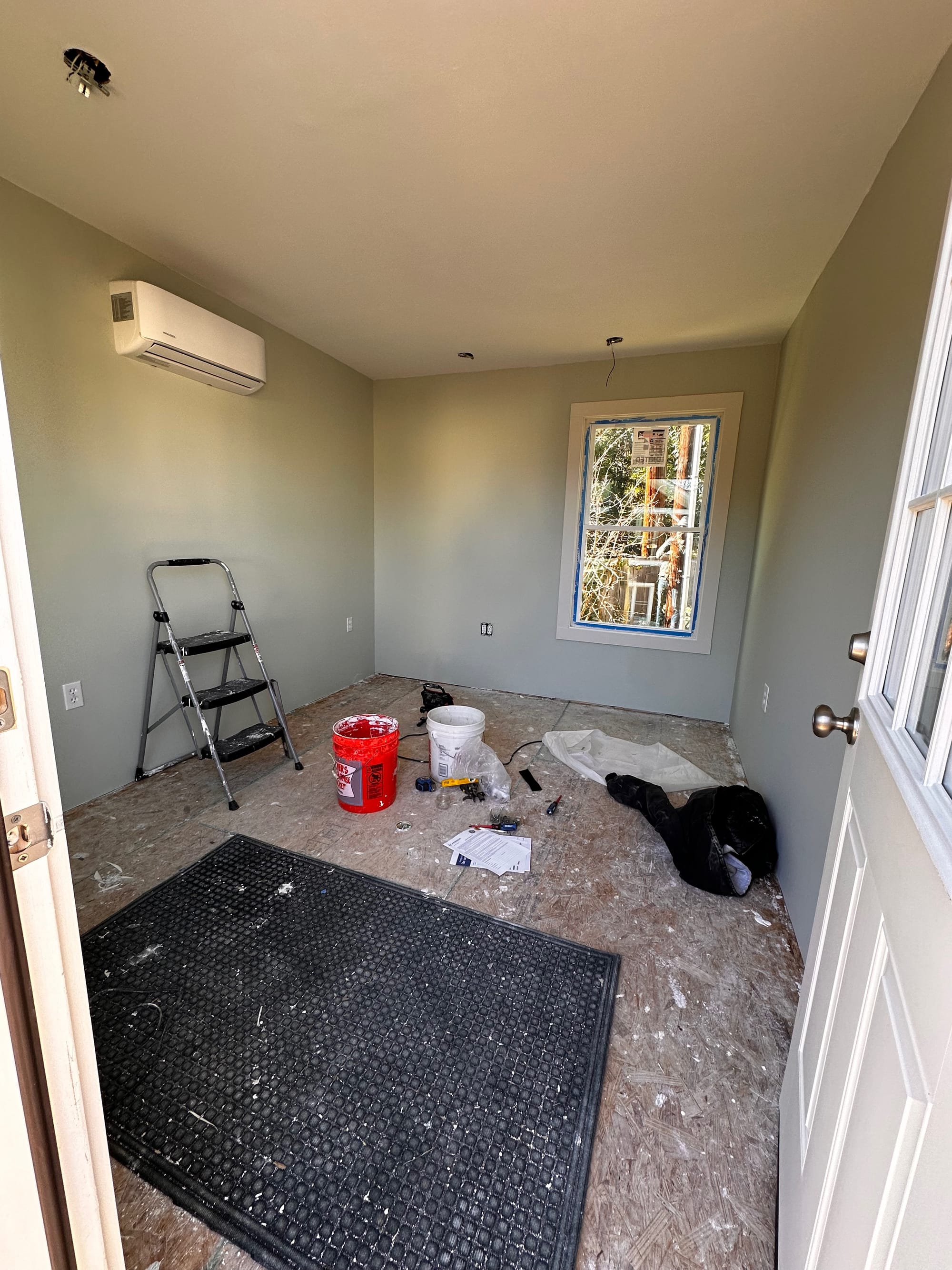
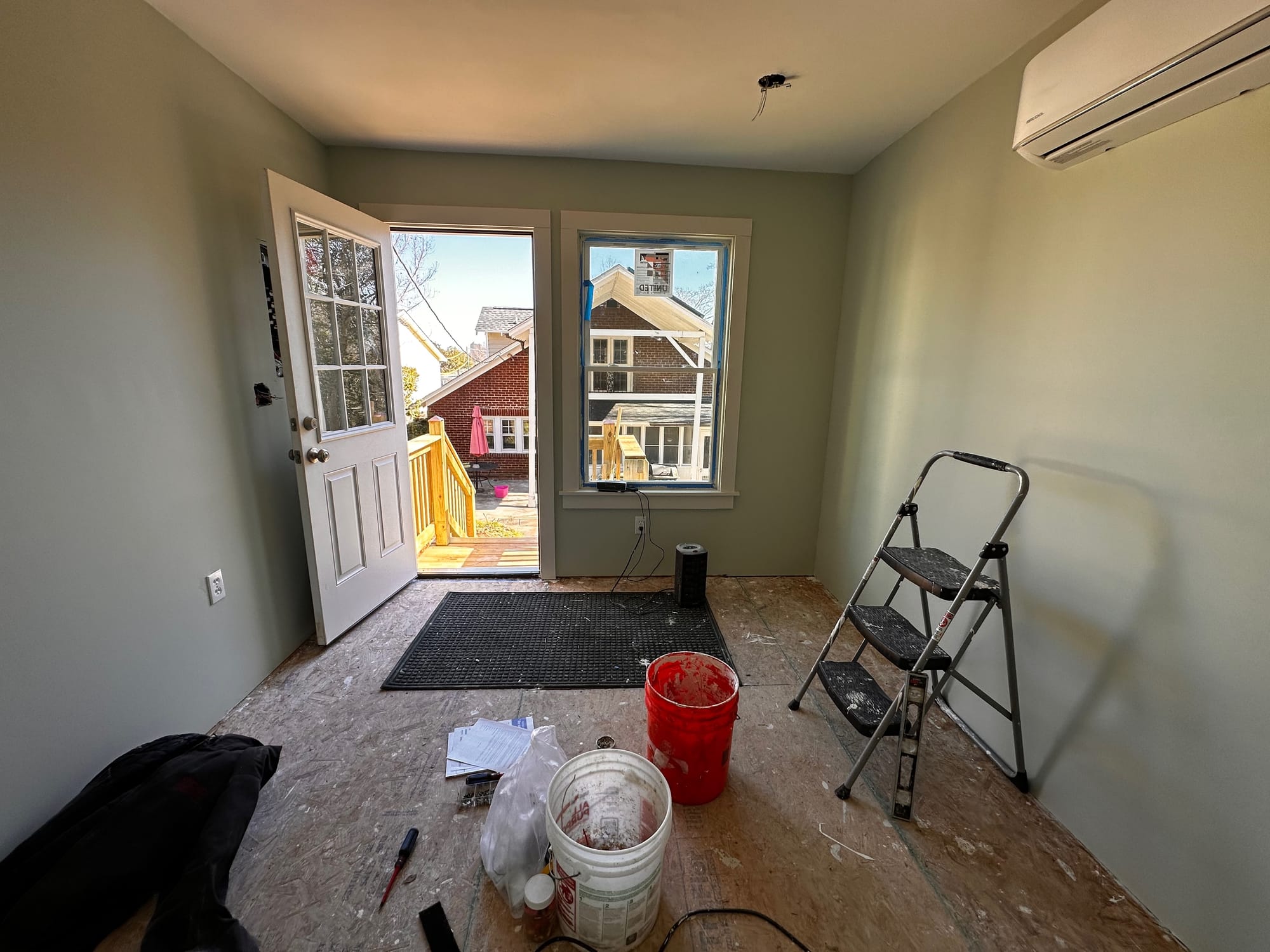
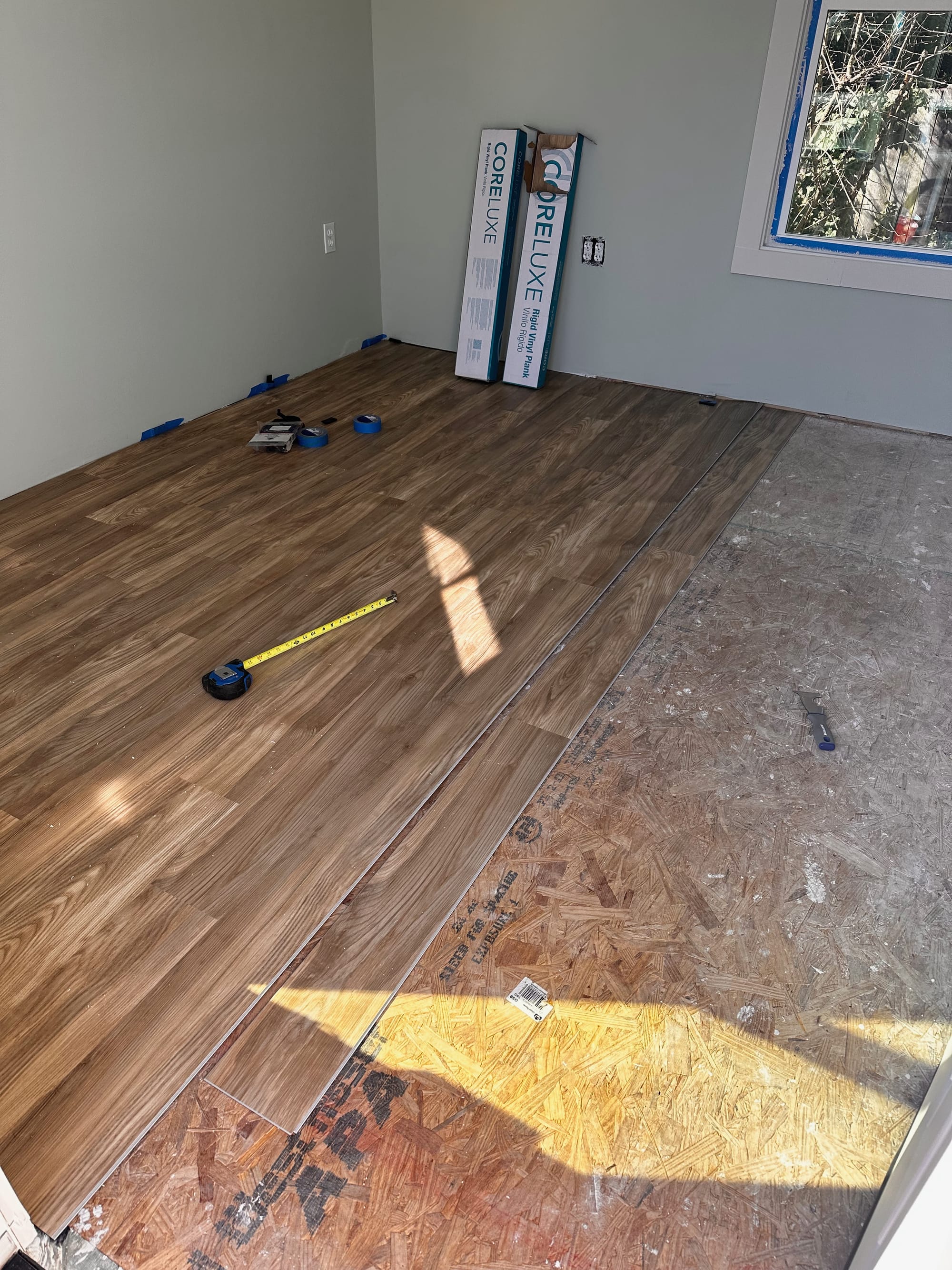
Painting and installing the floor was last up before we moved onto desk and shelves. This was much better. After watching a bunch of YouTube videos, I painted the space using a sage green. I enjoyed the painting and really love the way the color turned out. I had help from another friend, who is an art professor at Guilford. I invited her over and showed her a handful of colors and she helped me pick this green. She told me two things that stood out to me: the green will contrast nicely with the Red Oak shelves and that it would help bring the outside in! I loved the thought of both ideas so went with it. She was right and I really love the way it turned out (see below).
The Hardware
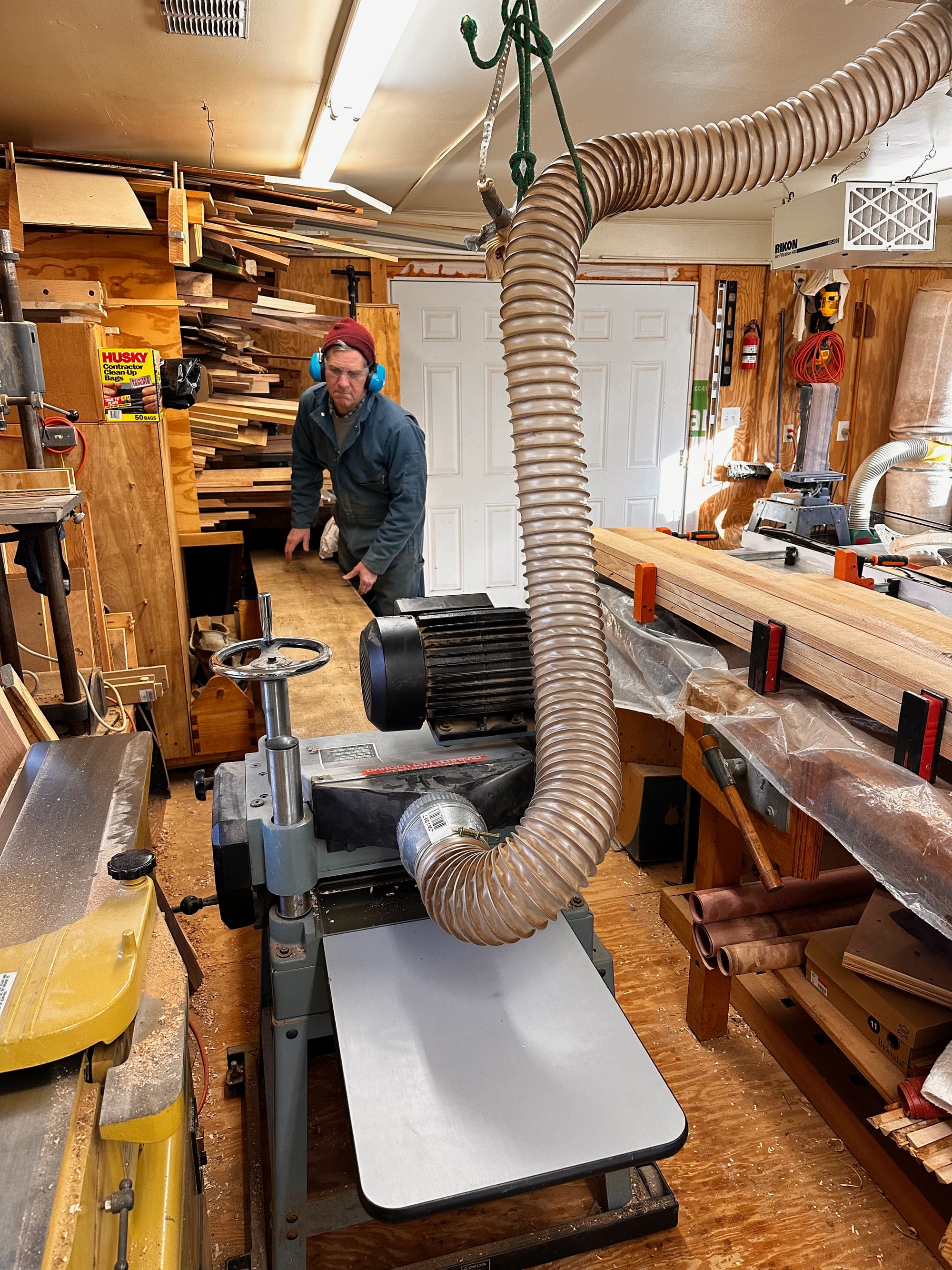
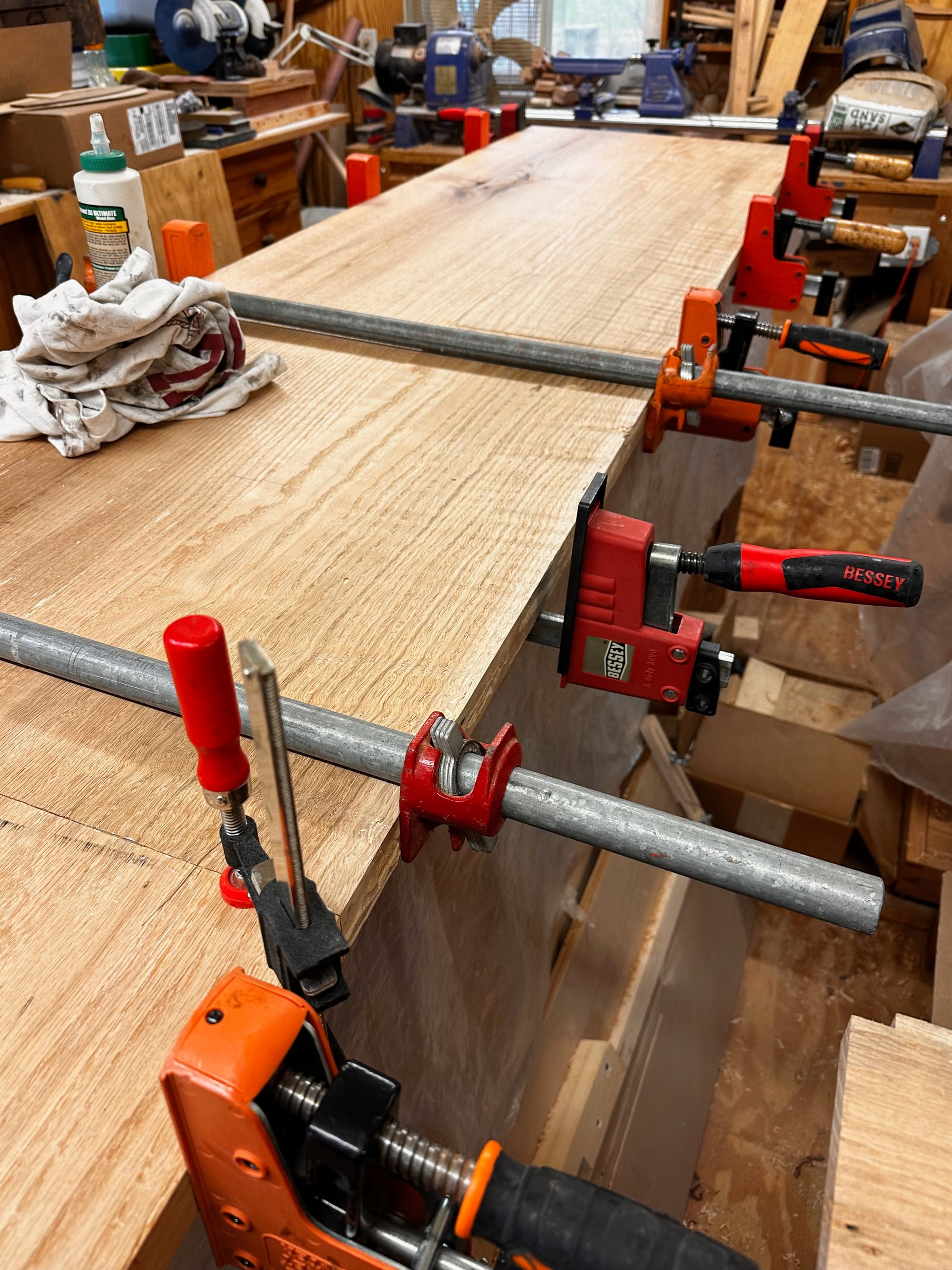
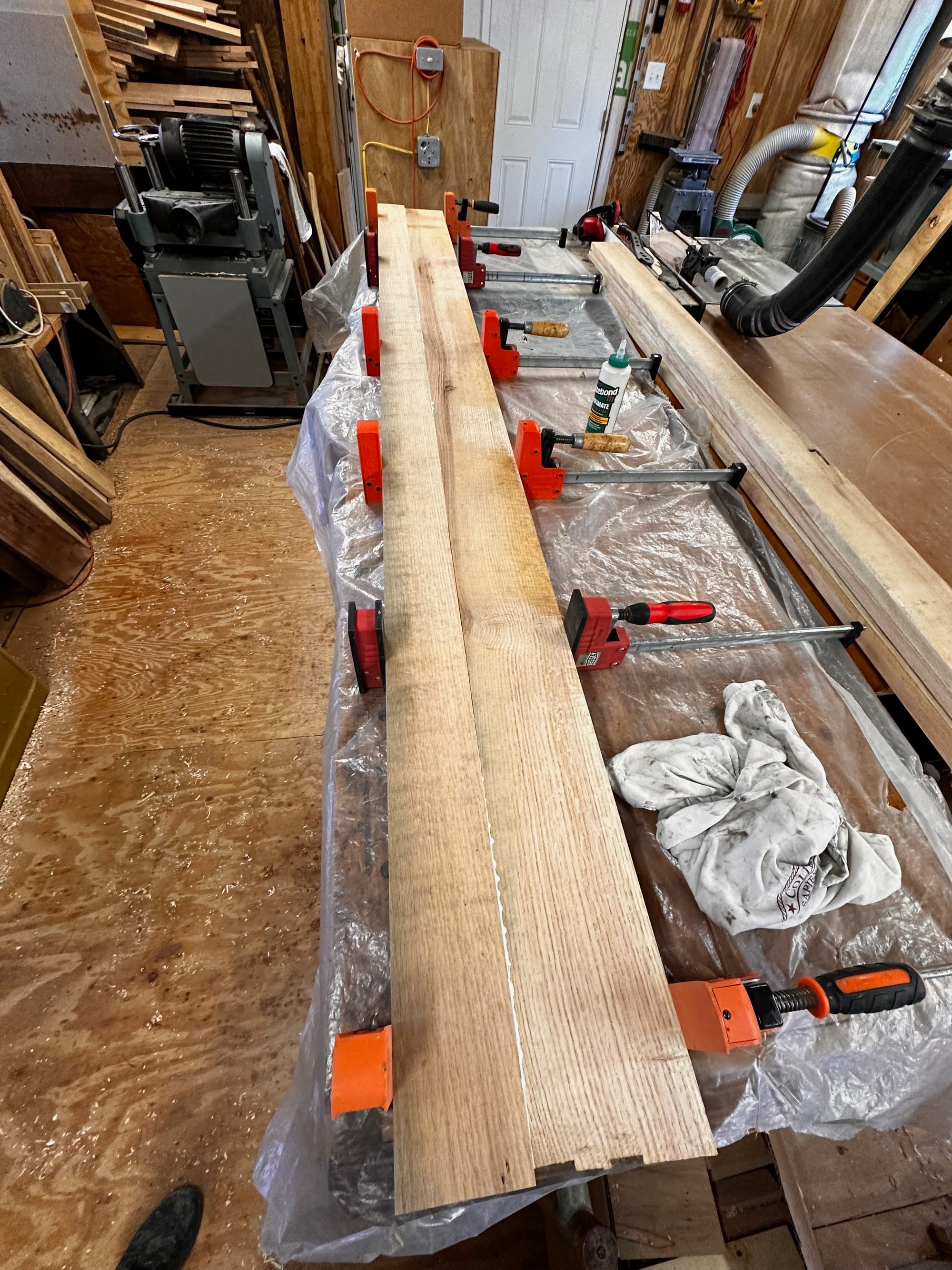
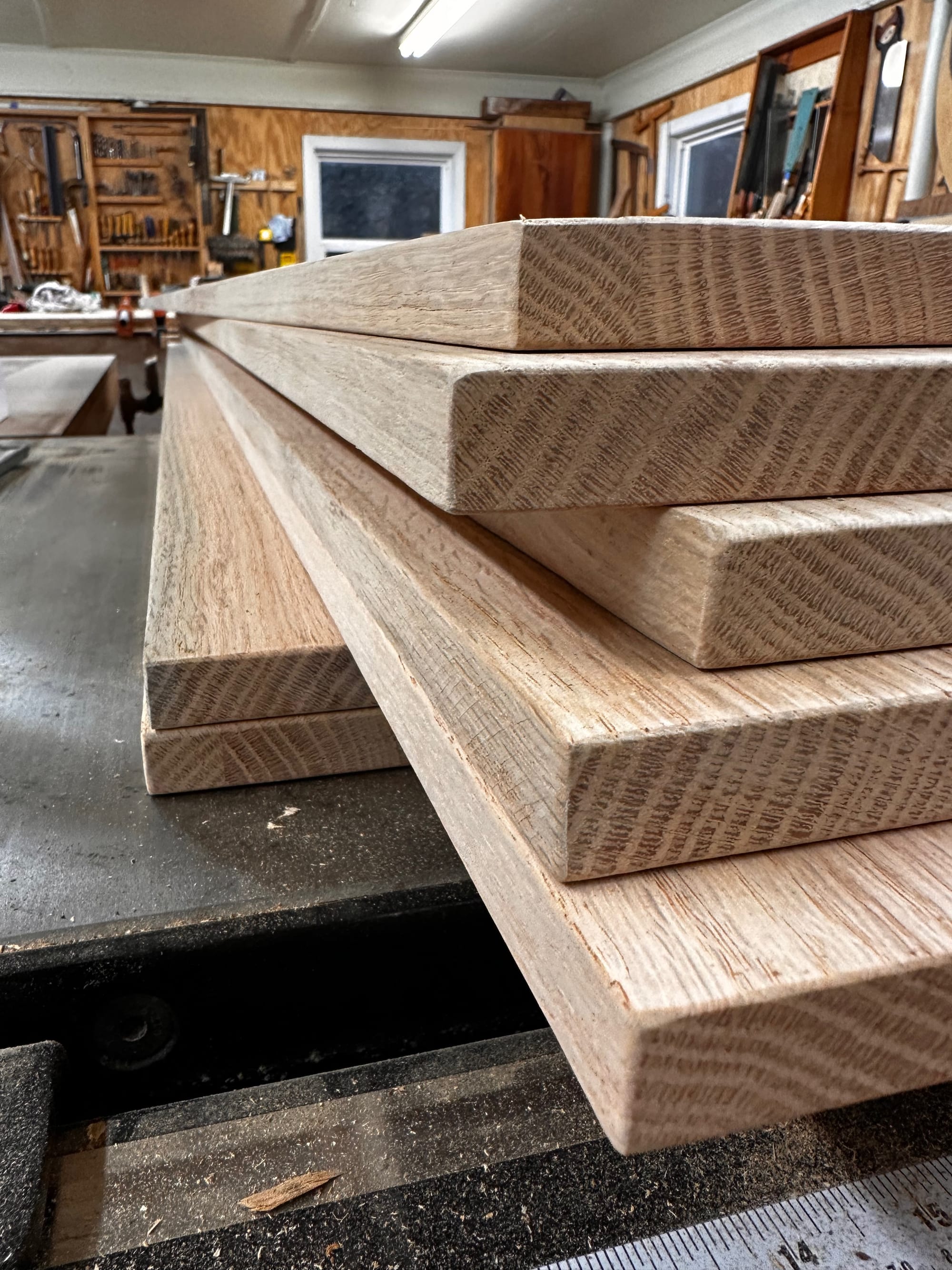
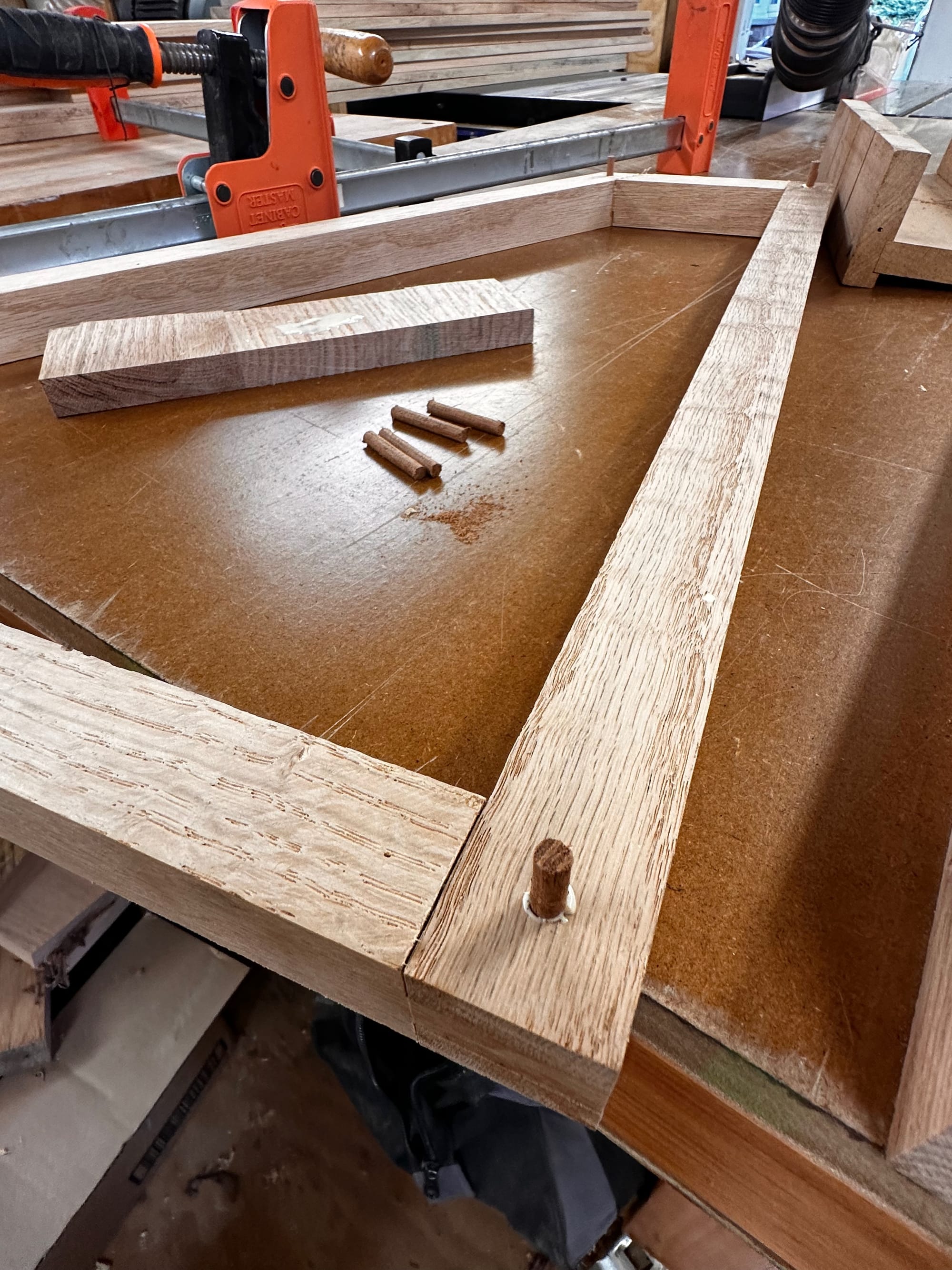
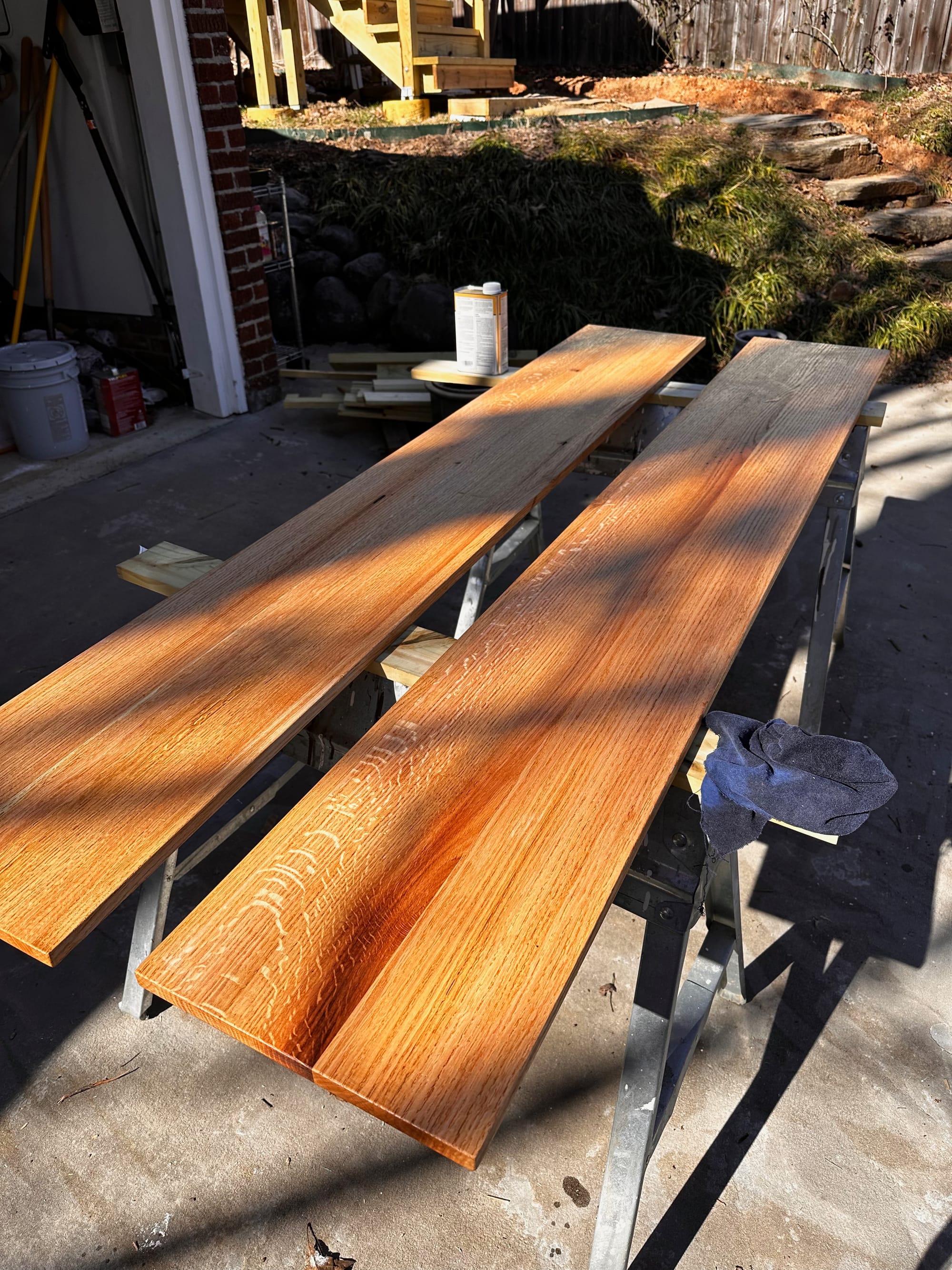
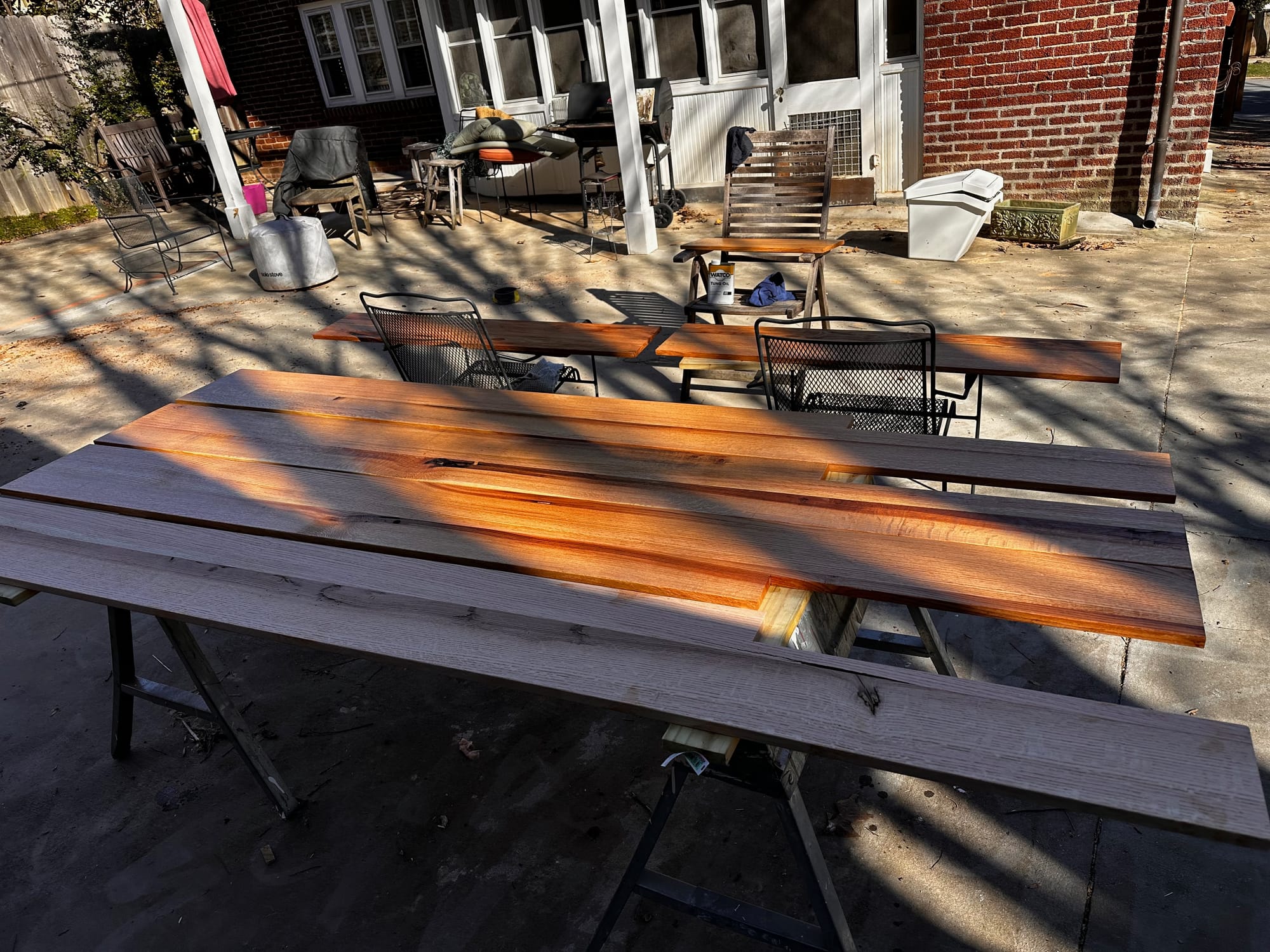
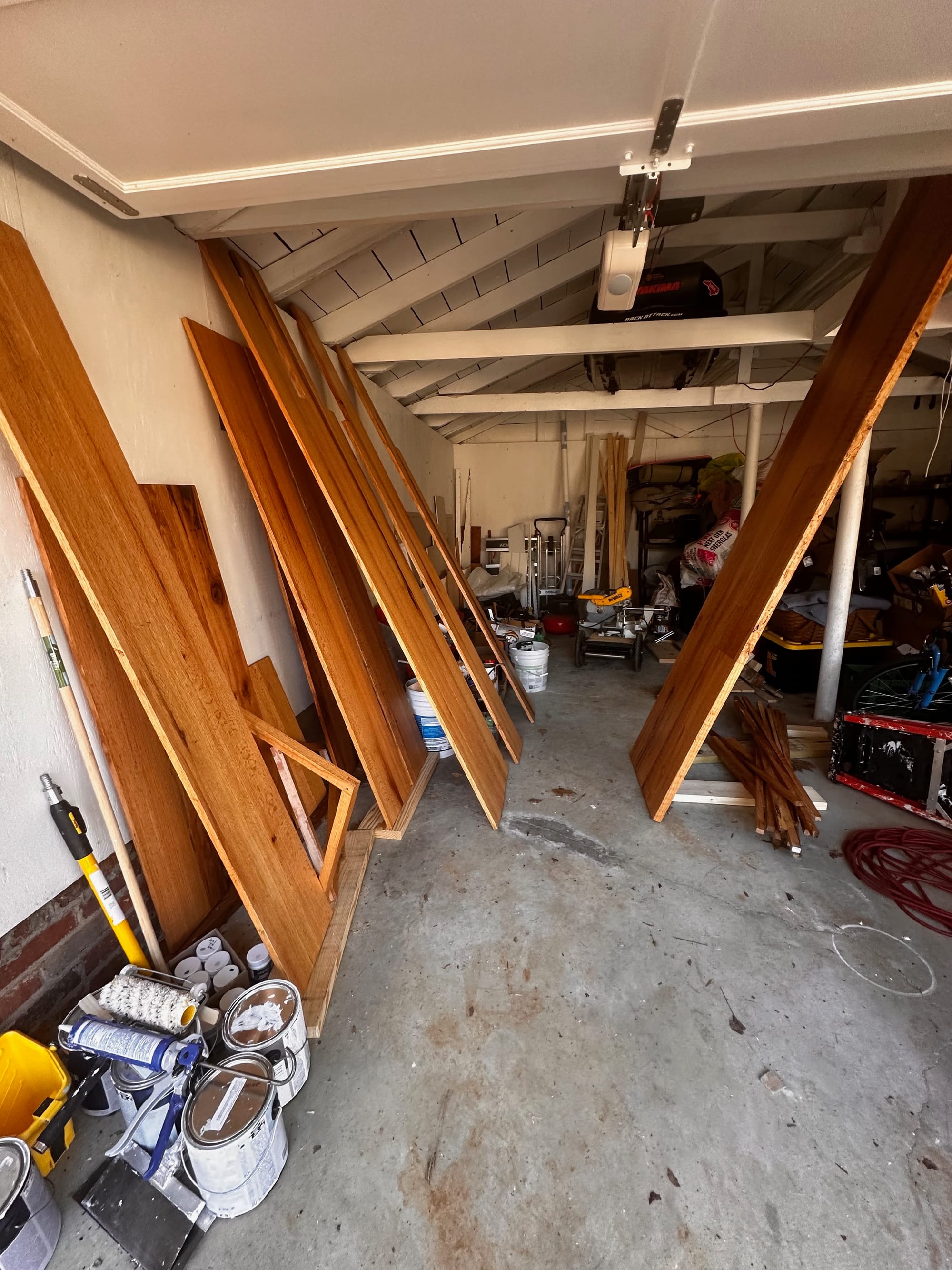
I had a couple goals with the shelves which I discussed with Craig who draw them up:
- They need to be as open as possible so that light would shine through and help give the books stand out some rather than be hidden in the shelves.
- Aim for as much bookshelf space as we could manage with the space and material we had.
- Have some shelves in front of me and above my head where I could place all the people in my academic scenius (re: We’re Building a Scenius). Inspiration just soaking in!
- Angle the legs so it is easier to slide from side to side along the desk without hitting knees and shins.
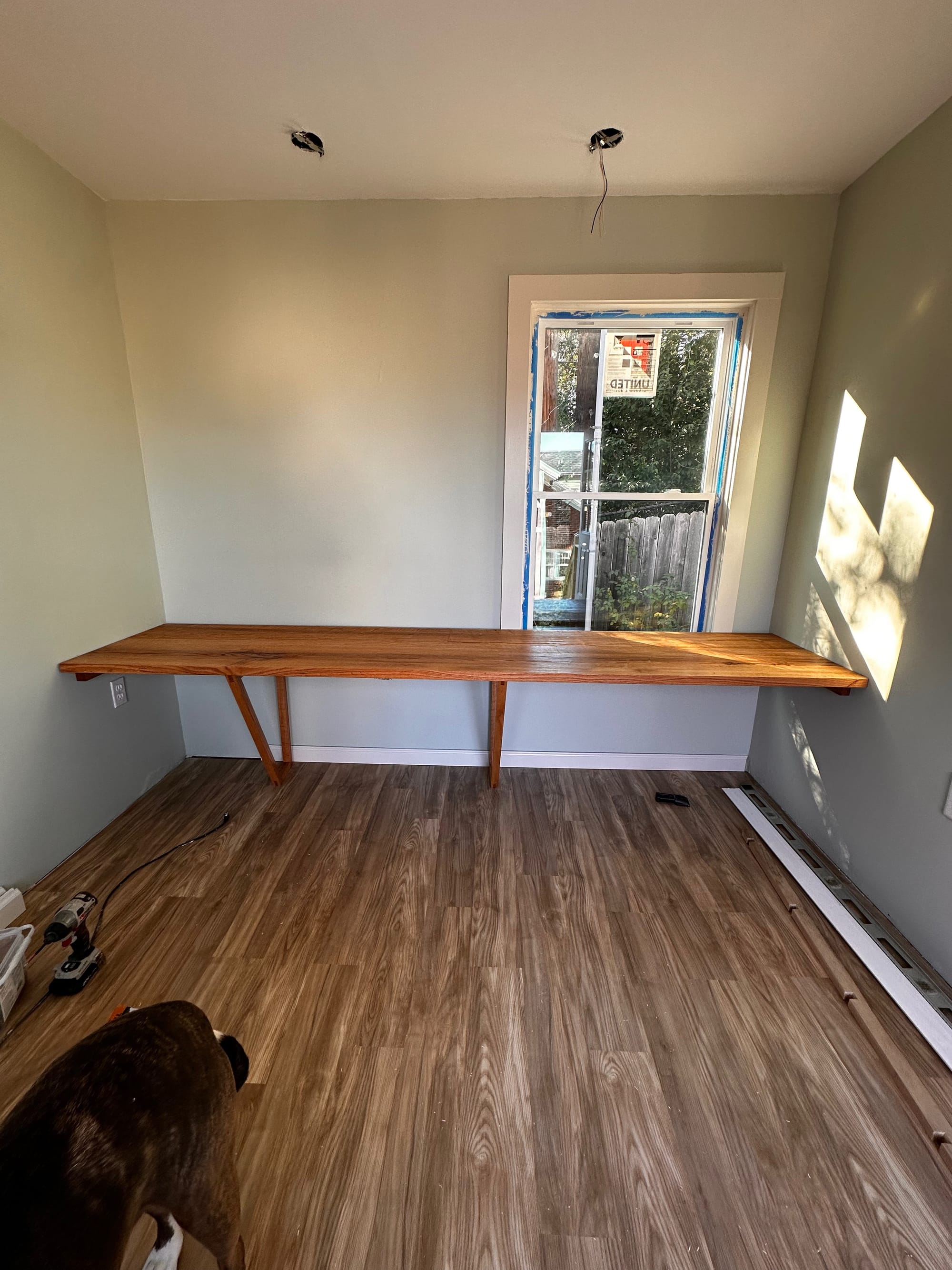
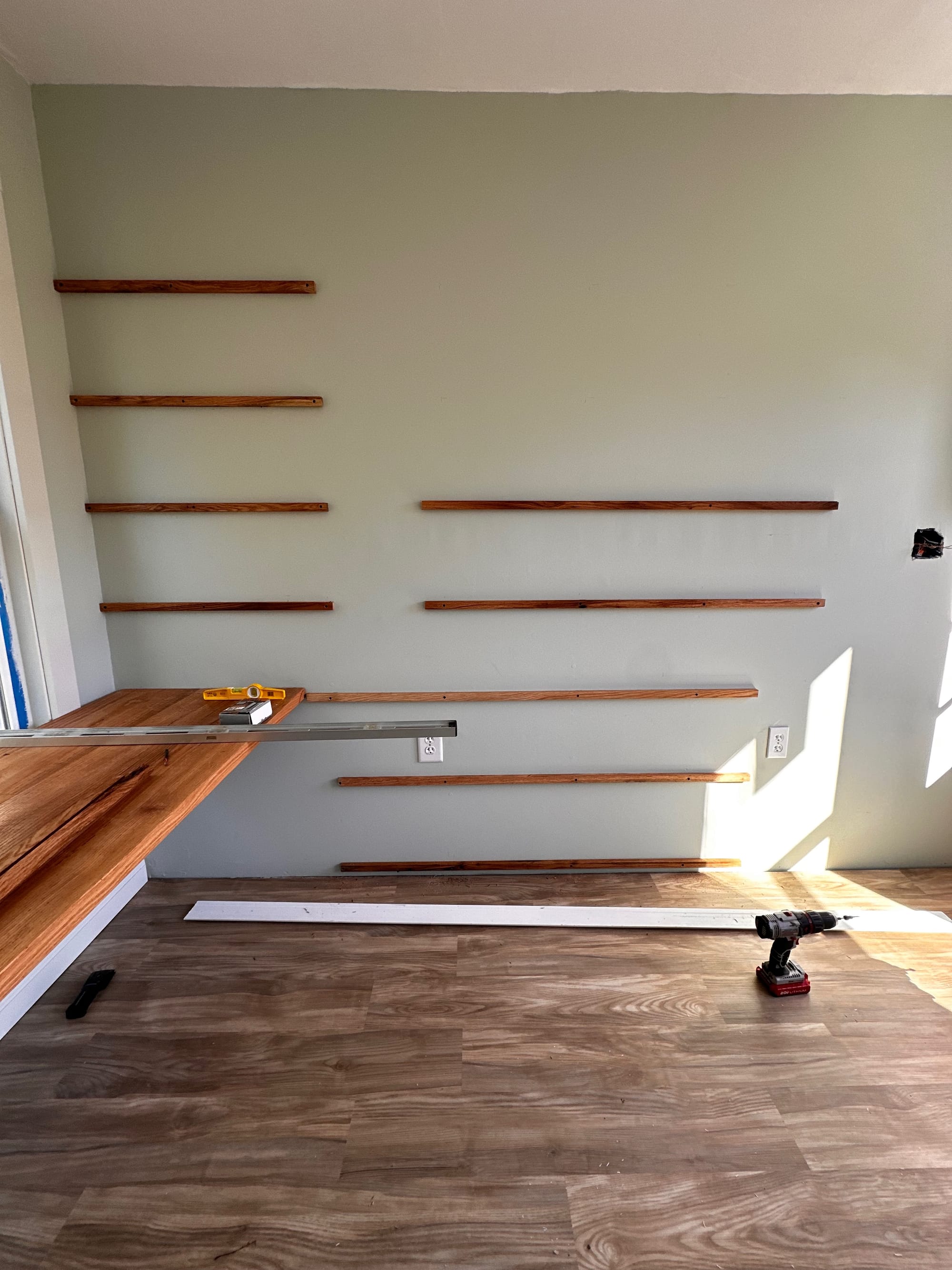
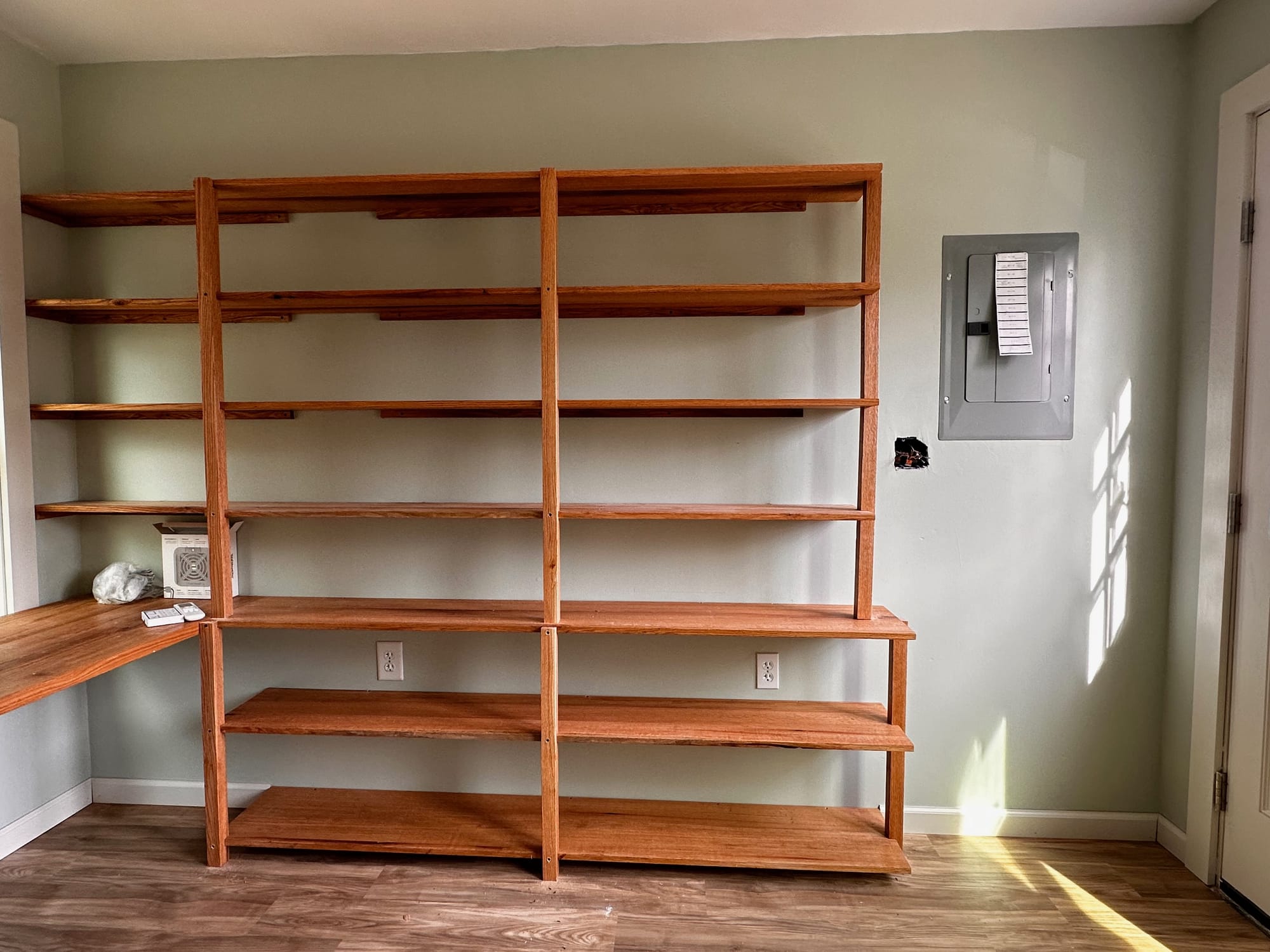
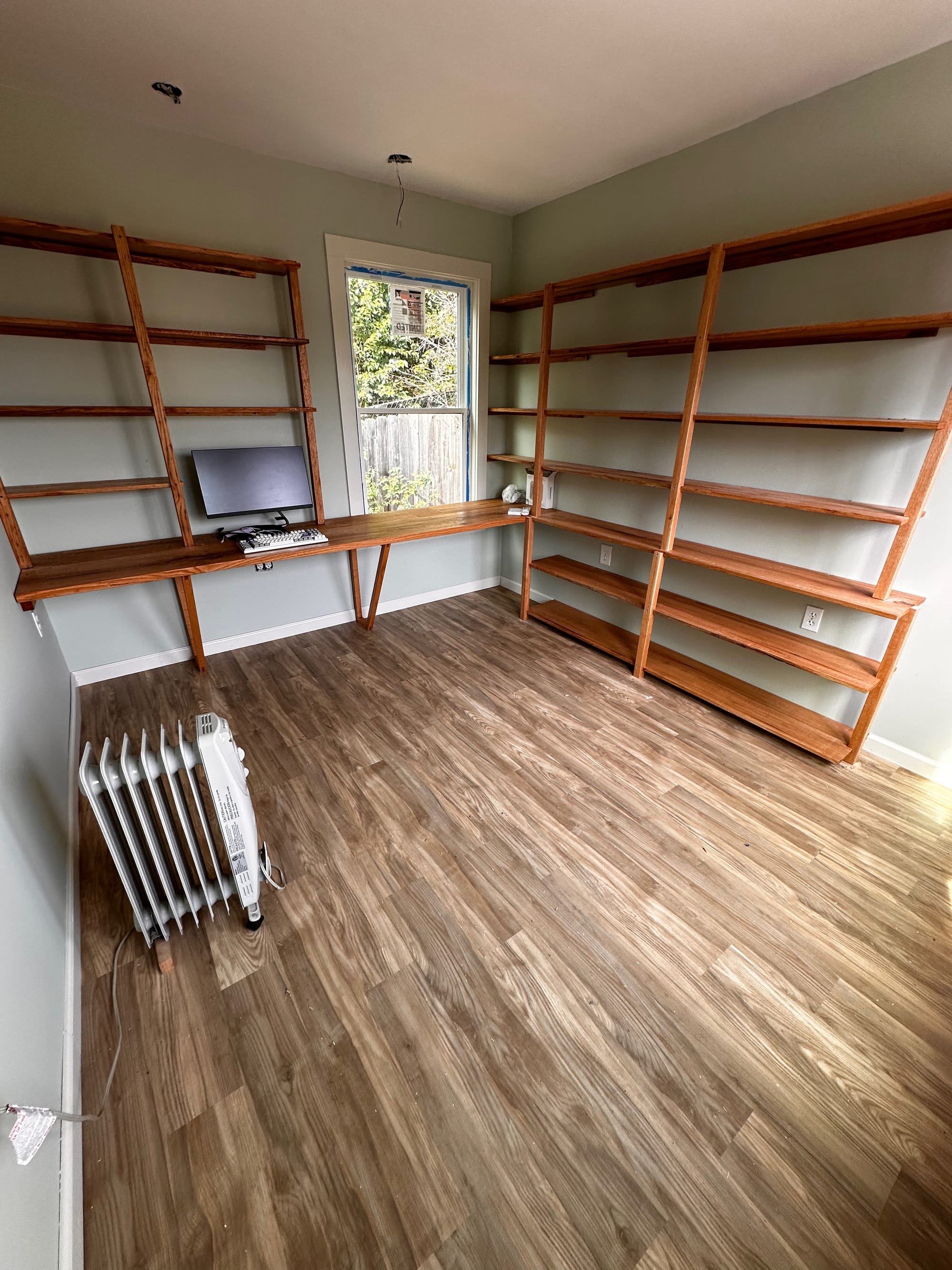
The next step was one of my favorite parts of the process. I worked with my friend Jim at his workshop to plane, cut, join, and sand down shelves from a Red Oak tree that he had stored from his property. The tree fell 30 years ago, and he was saving for the right moment. When I texted him in January about finding locally sourced wood for the studio, he said he had just what I needed. He was right. The Red Oak is absolutely gorgeous. I’ve never really done woodworking before and I enjoyed learning all the different aspects. Among the many things Jim does, he also teaches woodworking at Guilford College. He was patient and very easy to learn from. I thought to myself, this is a hobby I can see myself getting into later in life. After I applied two coats of Tung Oil to the wood and let it dry, it was time to install.
Installing the shelves was not that difficult once we had the design down the way we wanted. Because we designed and built the shelves, along with the rest of the space were were able to customize them to fit easily in the space.
Some Gear Talk
In terms of the desk (and subsequent gear), a couple of thoughts guided what we did.
- I wanted the desk to be huge. As you can tell from pictures of the many spaces above, I love sprawling out books, notes, and drawings when I’m really in the thick of a project. I wanted to be able to do this with no concern for space.
- I wanted it to spread across the entire back of the studio, similar to Michael Pollan’s setup from his writing house project.
- I wanted a “digital” and “analog” space.
- The Digital Side: As you can see from the pictures below, the left side with the bookshelves above is the side with the computer. The digital side consists of a poster of the show I saw of Bob Dylan in Kent, Ohio in 2002, Mac Mini M2 Pro, Keychron Q3 Pro QMK, a Lenovo 24 inch monitor, Magic Mouse, and a Scosche BaseLynx 2.0 2-in-1 Stand.
- The Analog Side: Is in front of the window for plenty of light, I keep clear of everything except my Galen Writer’s Box. This is the space where I can write letters, work on notes, drawings, or read without the distraction of my computer being in front of me. Besides that, some of the other frequently used analog gear I have in the studio is a Rhodia planner, a Baron Fig notebook for journaling and sketchnoting, and my favorite Uni-Ball Vision Mirco pens, Blackwing pencils.
- The Digital Side: As you can see from the pictures below, the left side with the bookshelves above is the side with the computer. The digital side consists of a poster of the show I saw of Bob Dylan in Kent, Ohio in 2002, Mac Mini M2 Pro, Keychron Q3 Pro QMK, a Lenovo 24 inch monitor, Magic Mouse, and a Scosche BaseLynx 2.0 2-in-1 Stand.
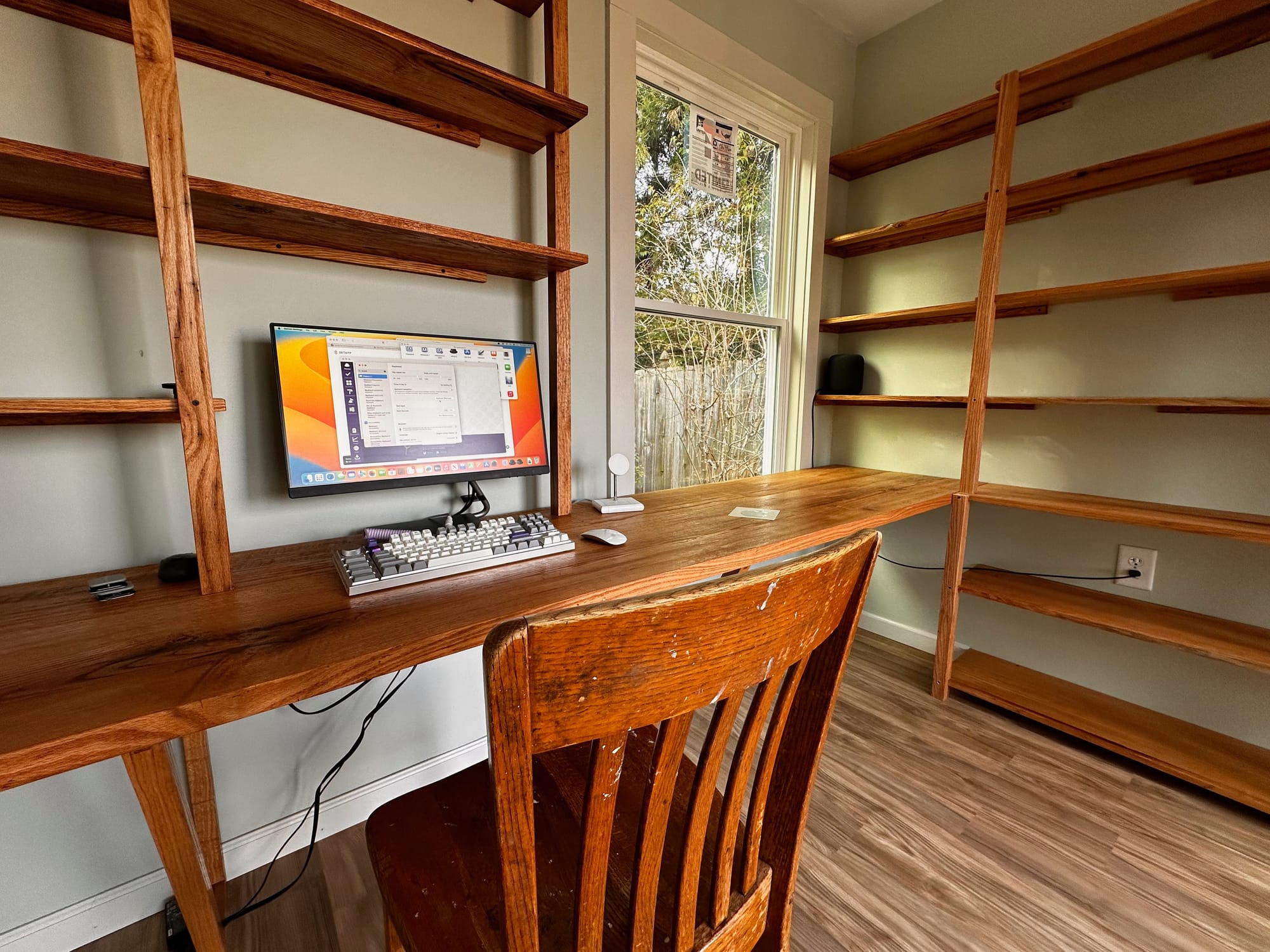
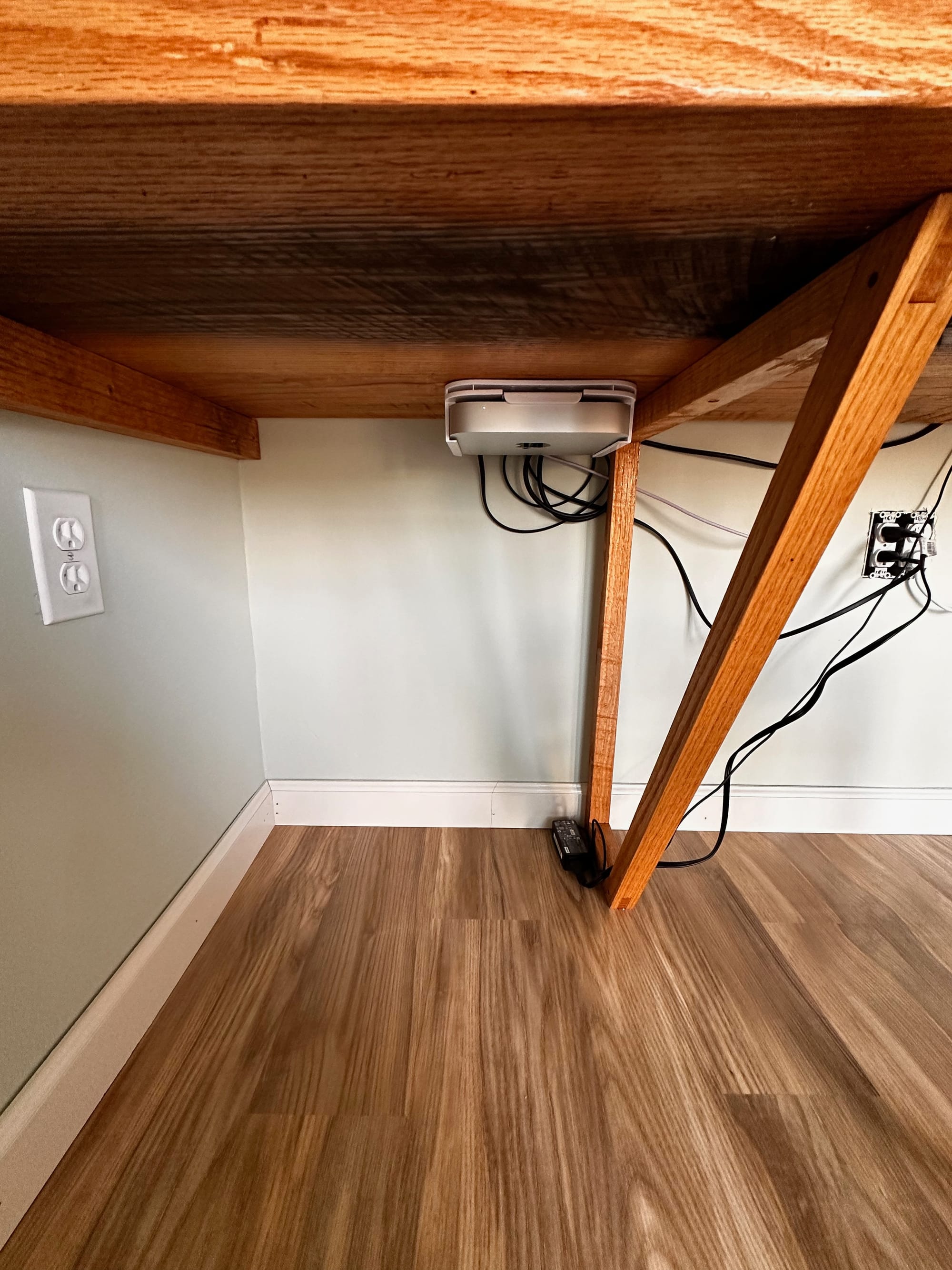
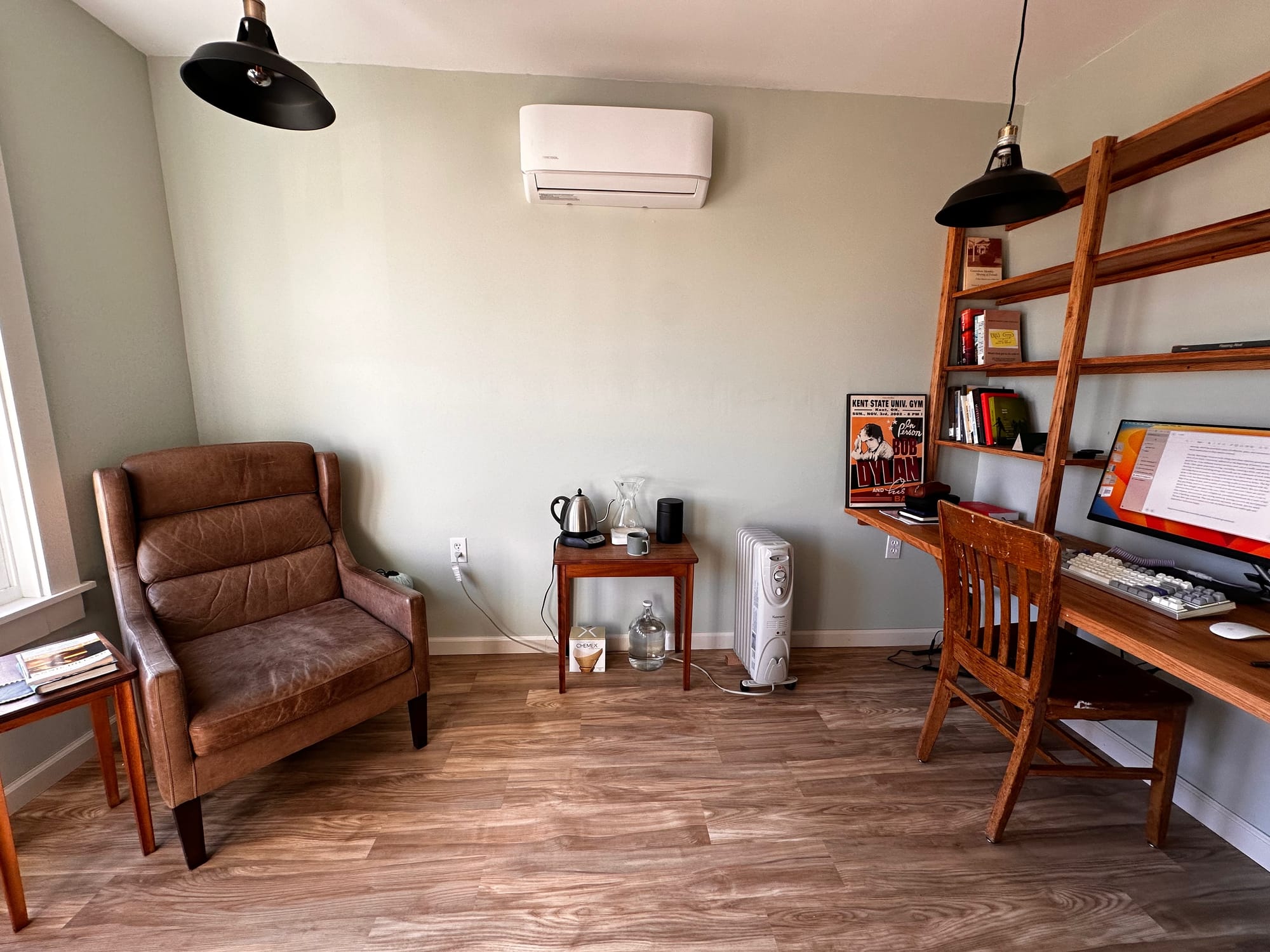
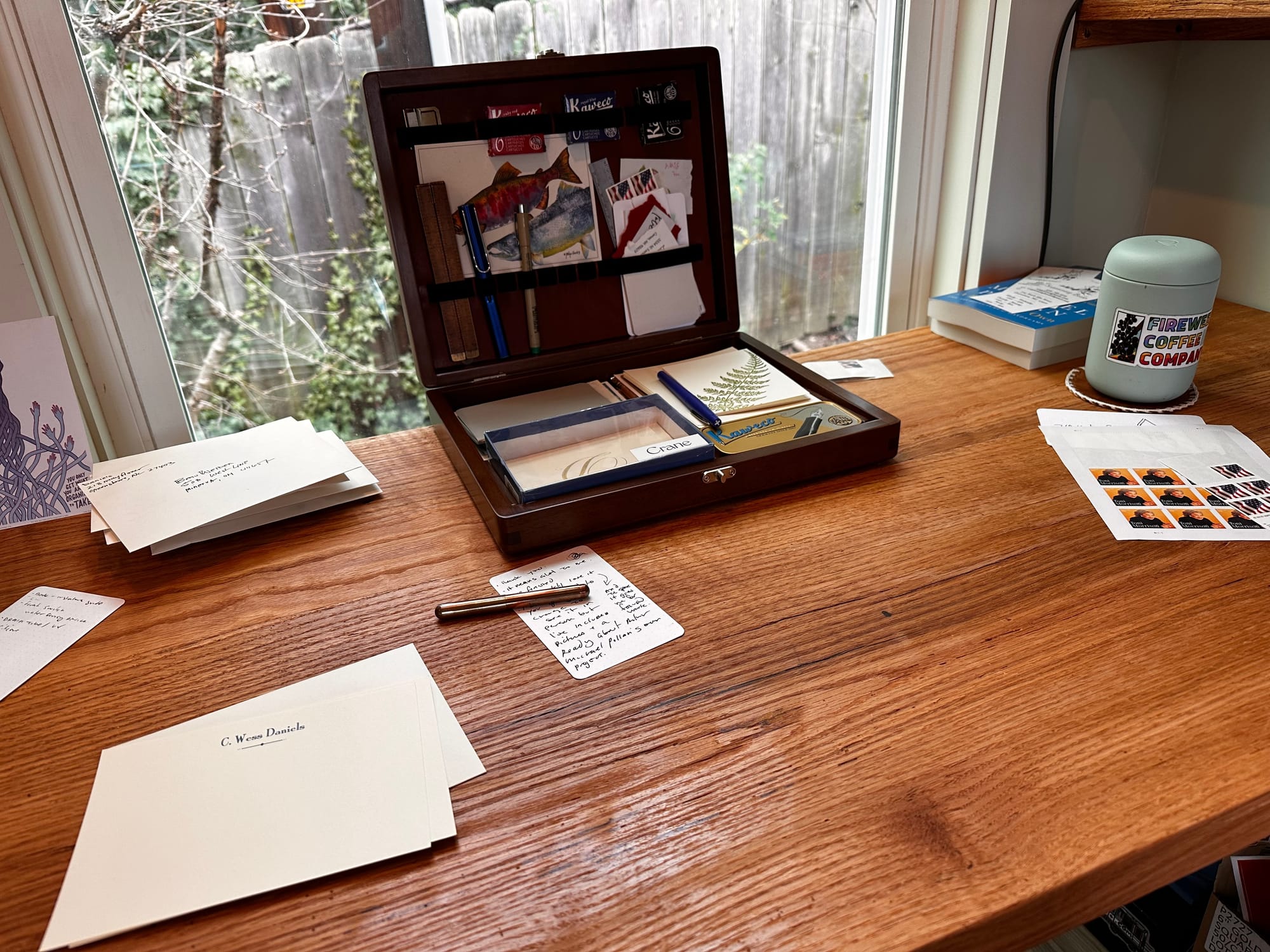
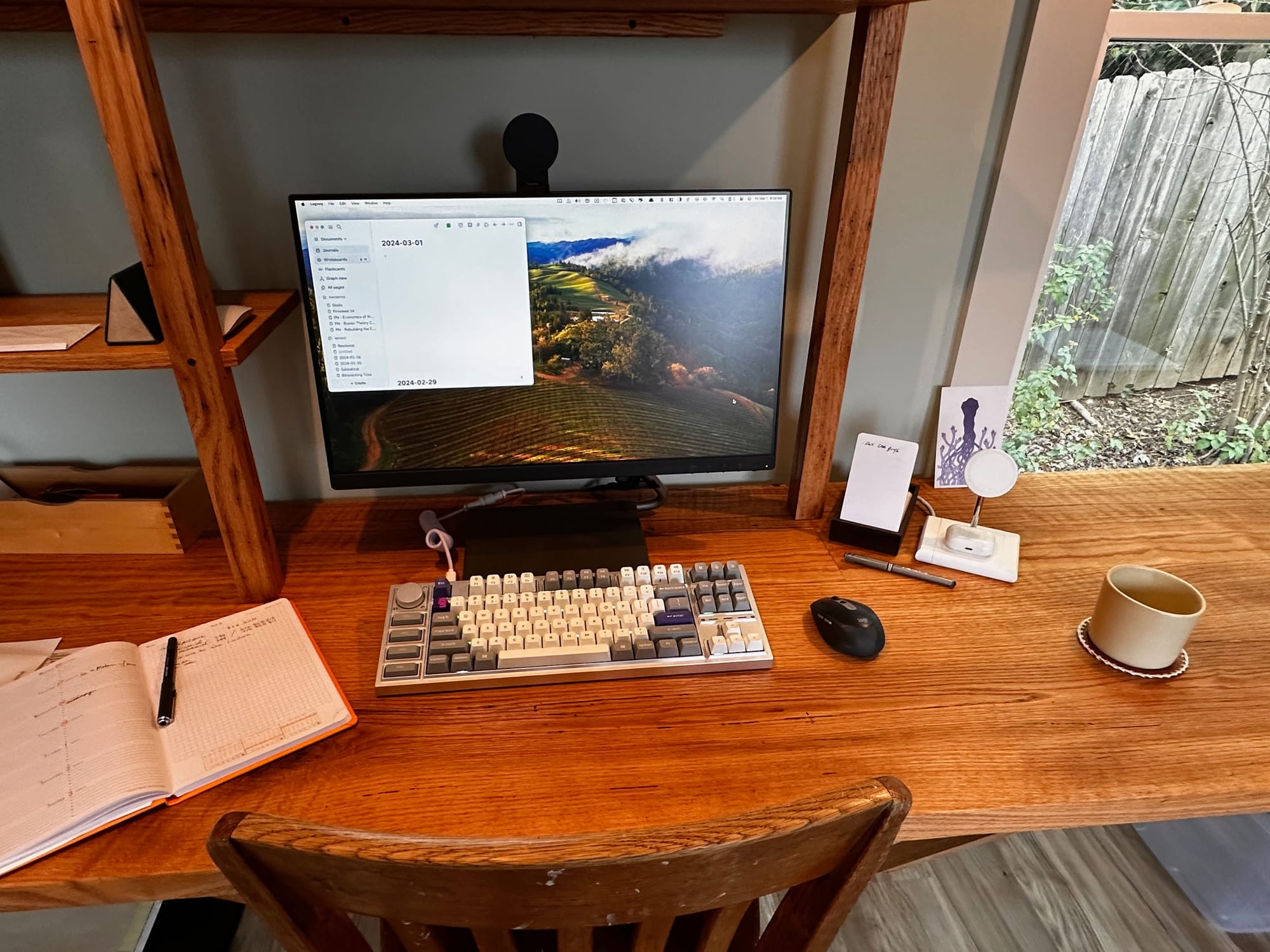
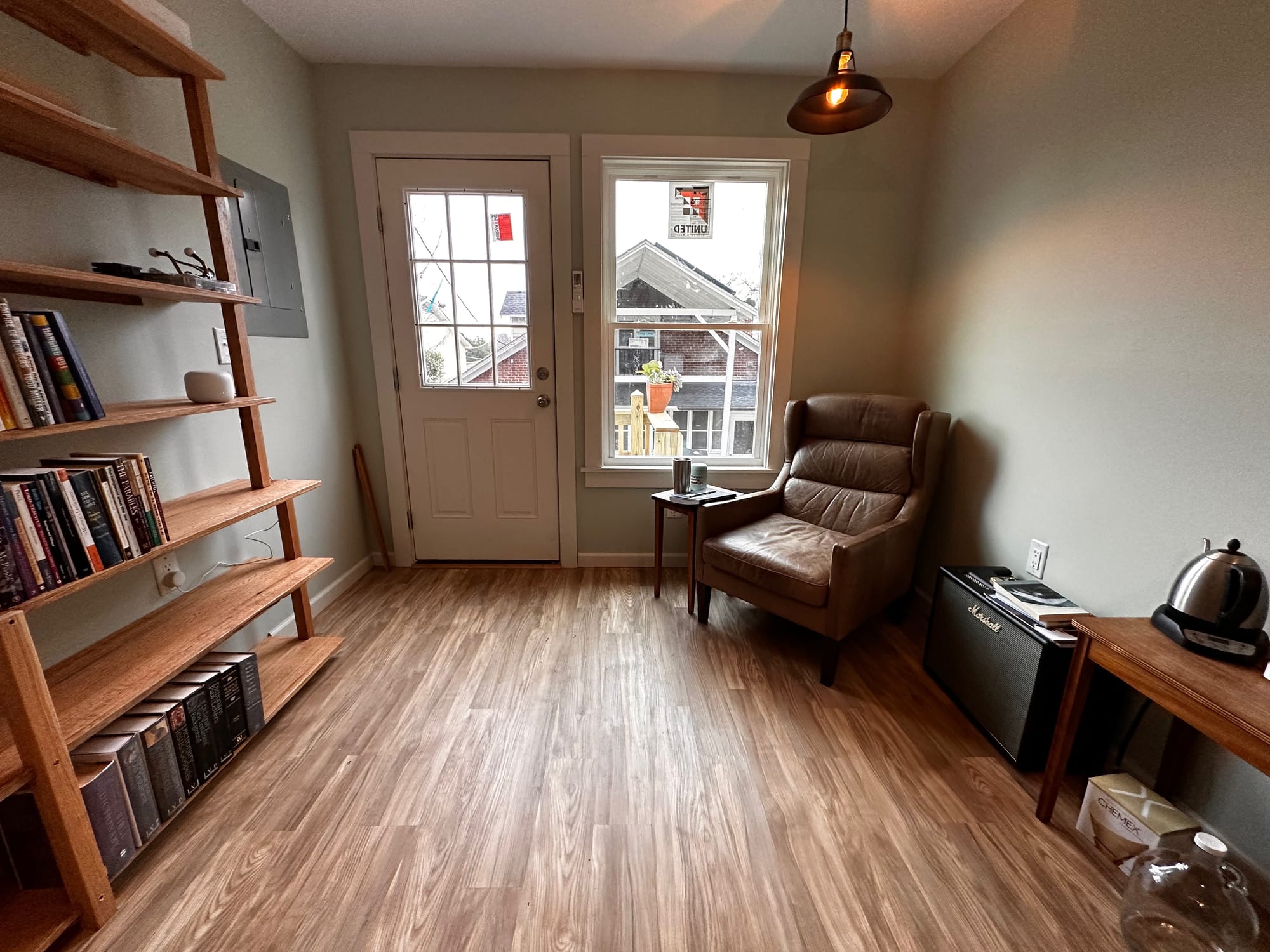
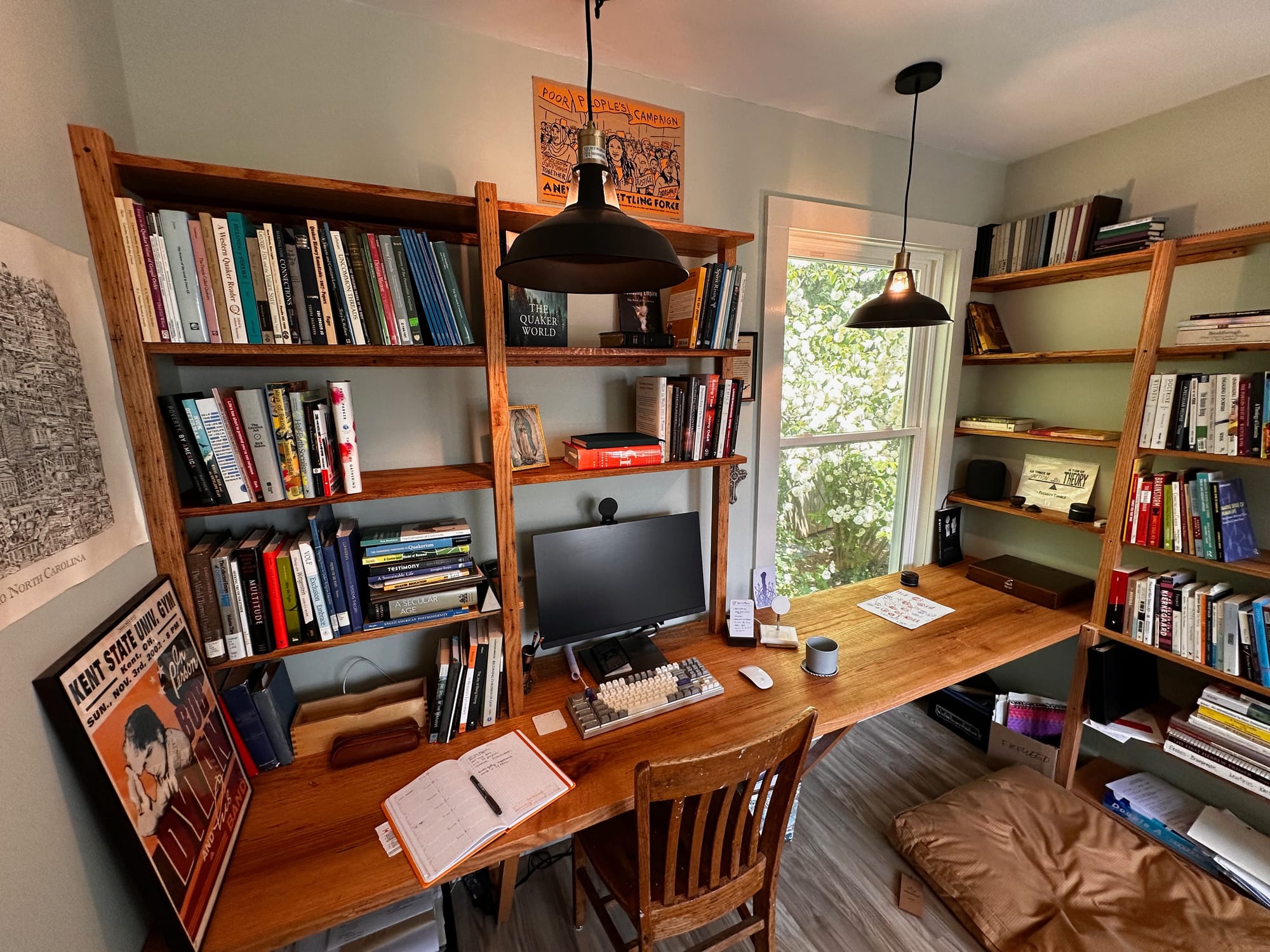
Here is a peak inside.
It’s such an amazing place to be. It is warm. It is spacious, but also cozy. It doesn’t feel at all like a “shed,” which is why I decided to call it my studio (although, I’m looking for help with a better name for it so if you have ideas, please let me know!).
It is honestly better than I imagined it. I love every time I am in here working or know I’m headed out to the space. It is a delight to be here.
And I have been able to use it to its purpose. No I haven’t written a bestseller (yet…?) but I have been able to do plenty of focused writing and reading. I’ve also been using the space for silence and mediation and have had a couple friends here for meetings. I look forward not only to continuing to use the studio for the rest of my sabbatical but for years to come.
One question I have been reflecting on these past couple of months is: what do I need in order to be able to sustain during this next phase of life? In many ways, I realized that I was building at least one answer to this question. It is a place of my own for work, play, and creativity. It will help me keep going. To keep the creative juices flowing and to remind me of some of the things I love to do and work on. But it’s even more than just the space. It was the experience. The skills. And the relationships that all have impacted me.
The space isn’t done. Now we’re in the part I’m not great at. Interior design. I’m working to add some art. Plants. I imagine in time I’ll add some different furniture too. I have to paint the exterior. That will happen soon. But for now it’s ready for what I need.
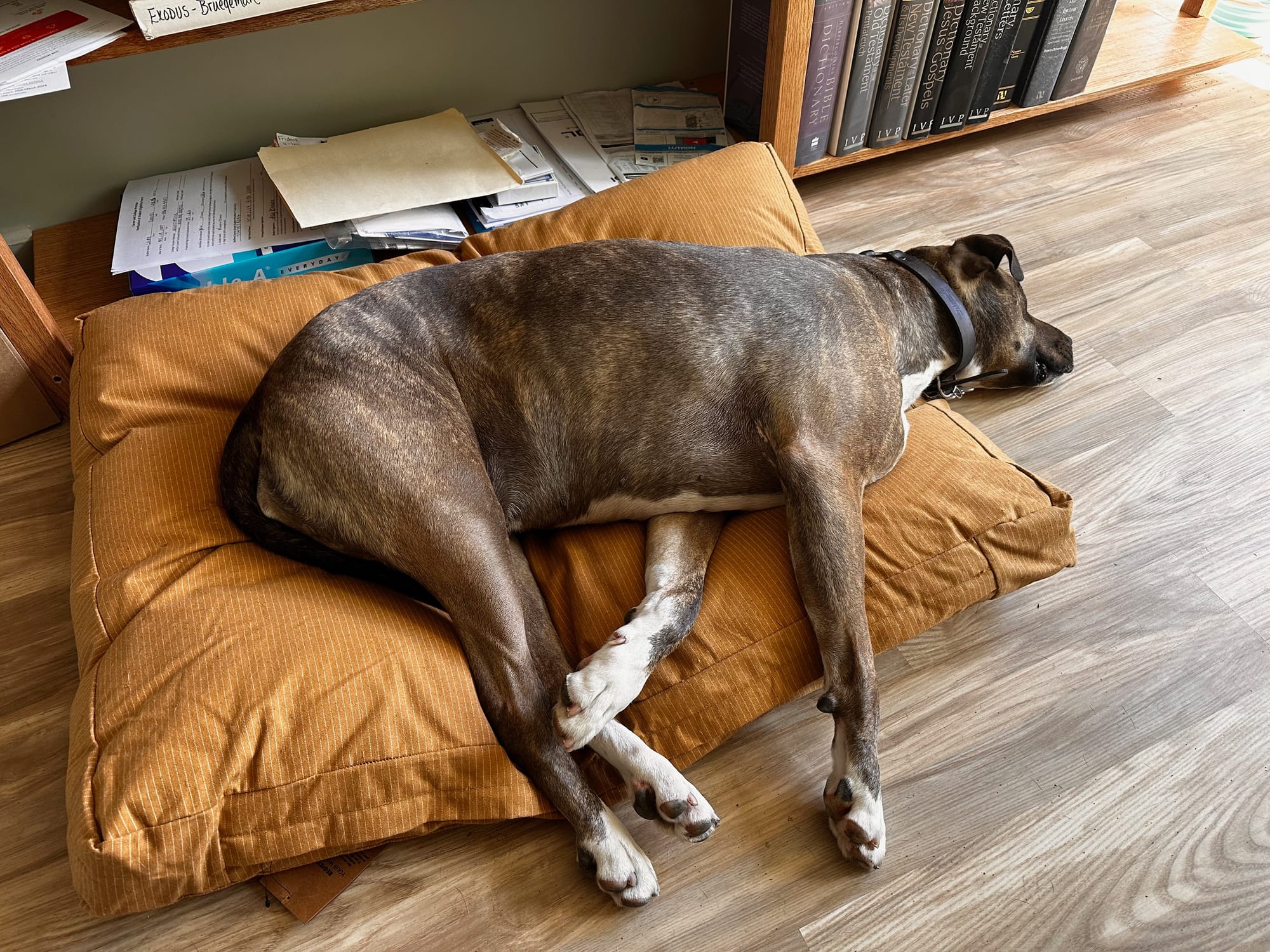
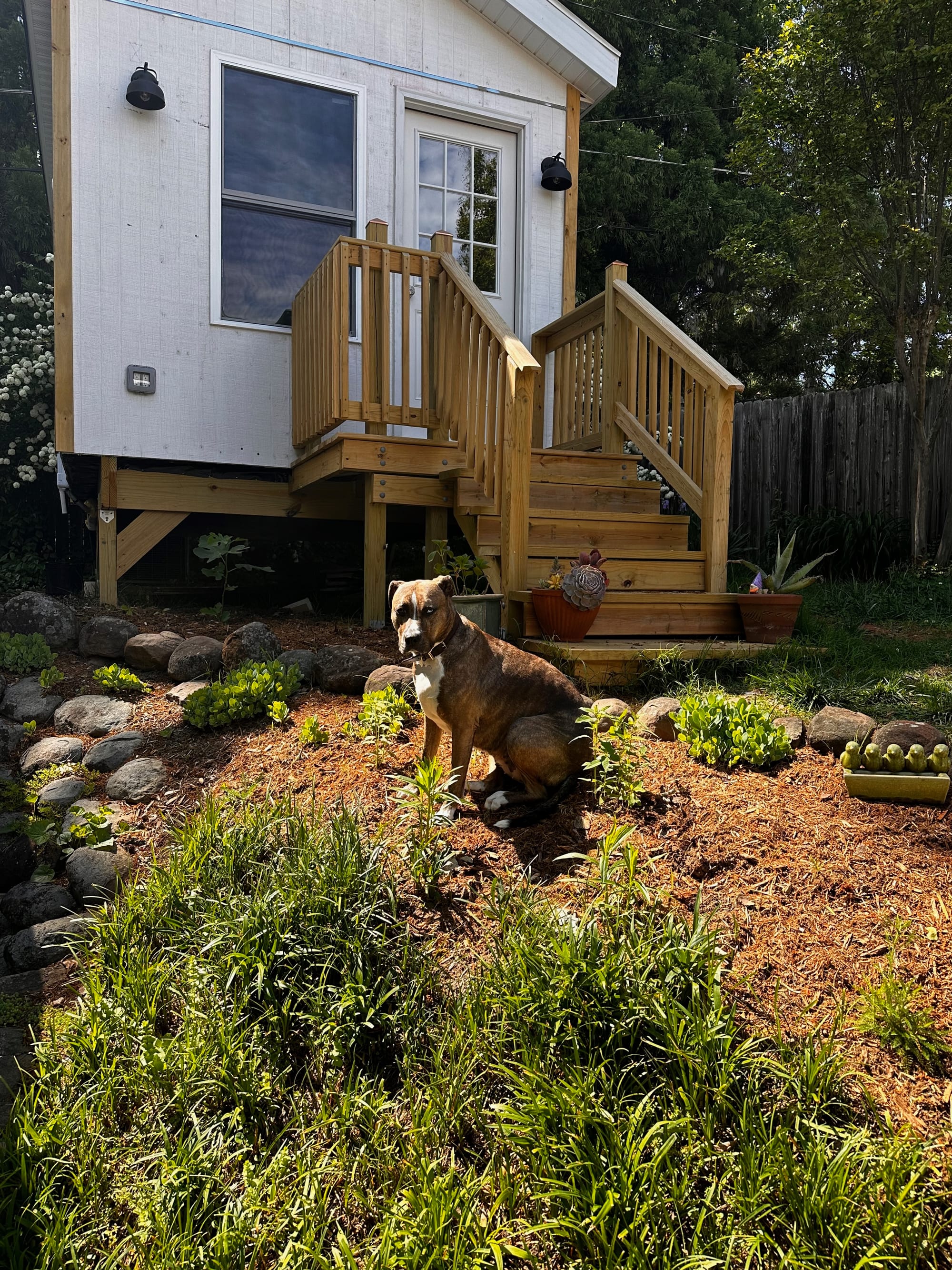
As you can see, Magnolia, is getting more comfortable hanging out with me here or on the porch where she is napping currently.
I feel immensely grateful to everyone who helped me build my writing studio, but especially to my father-in-law, Craig. Without his skills, knowledge, and time, this would never have happened.
What a wonderful gift this has all turned out to be.
– Wess